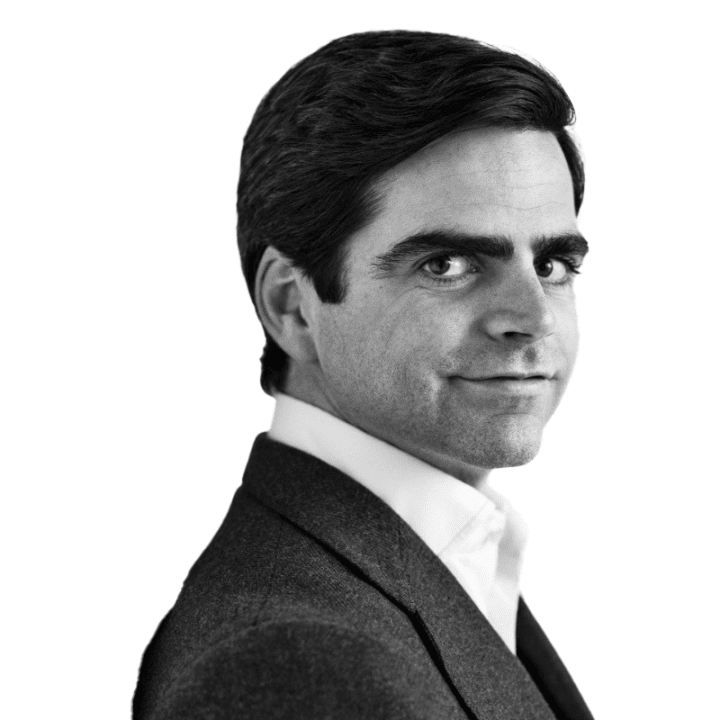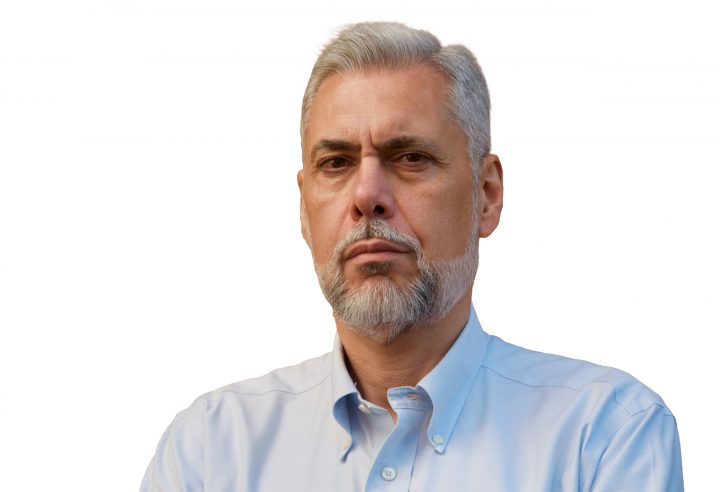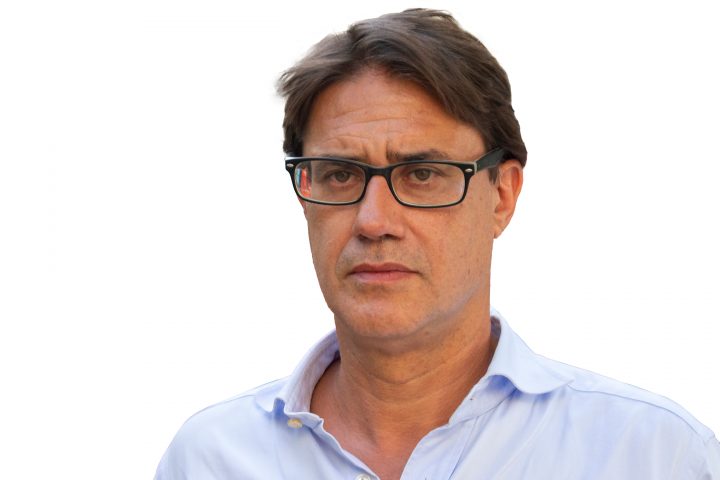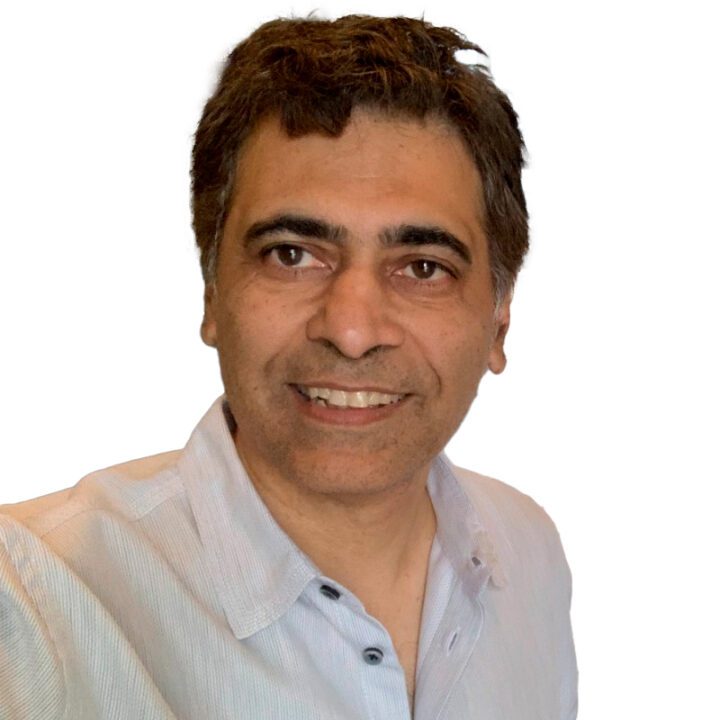© IE Insights.
0
IDEAS TO SHAPE
THE FUTURE
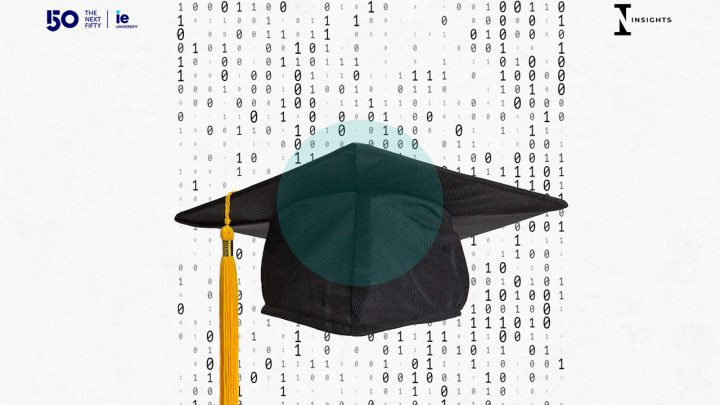
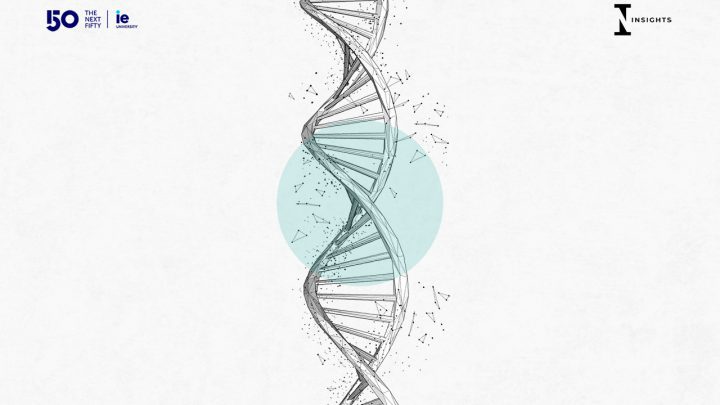
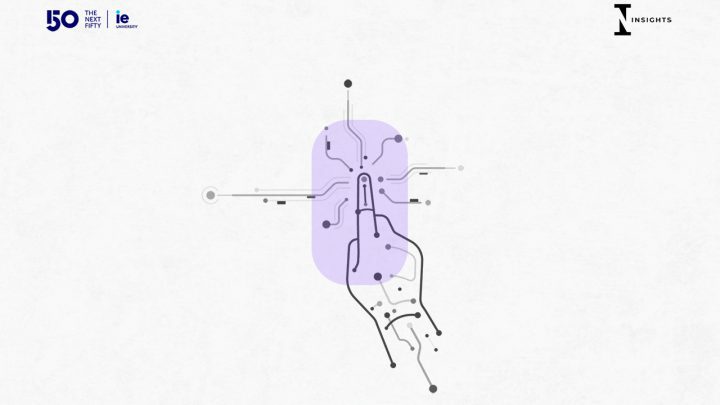
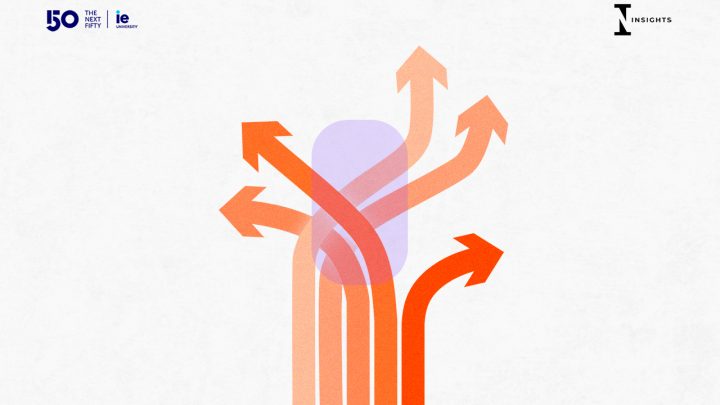
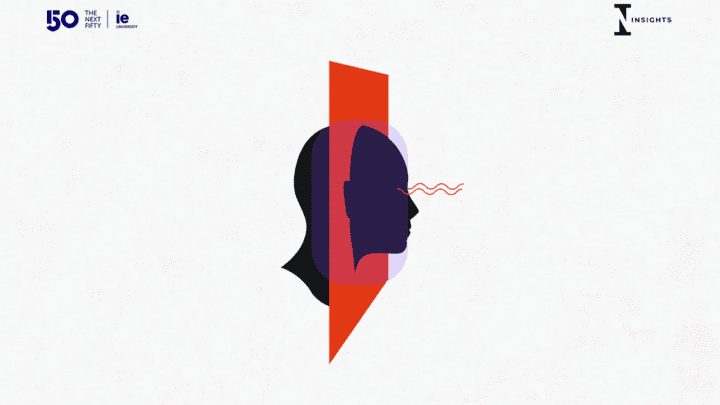


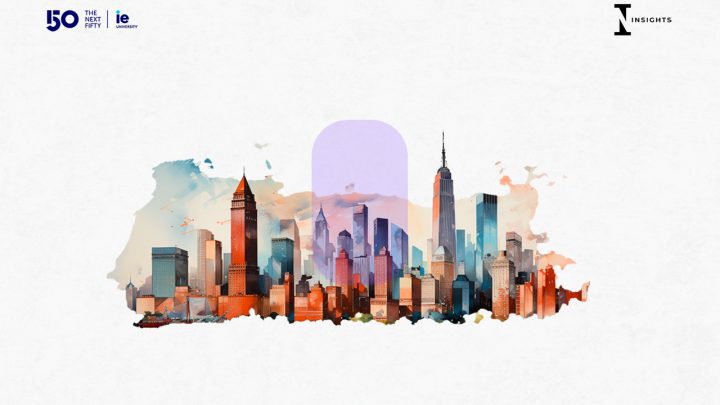


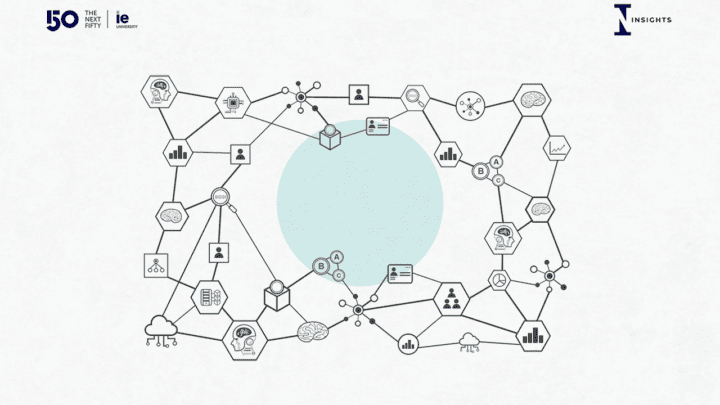


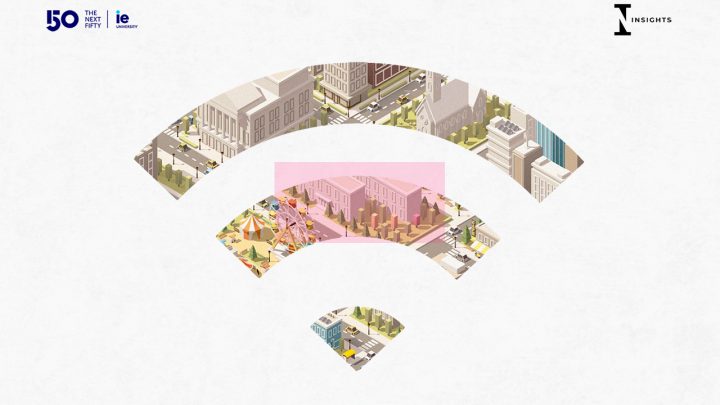
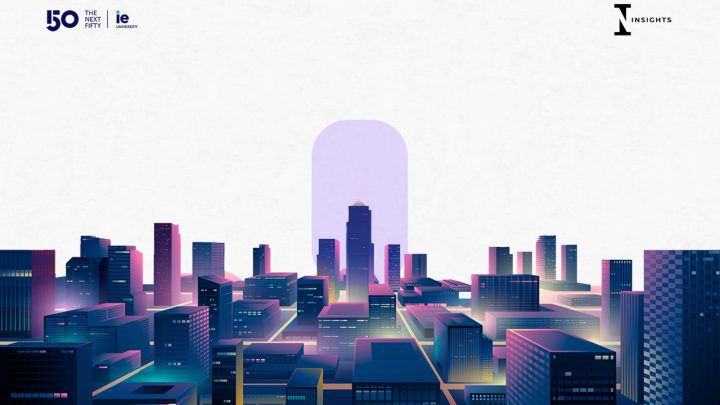


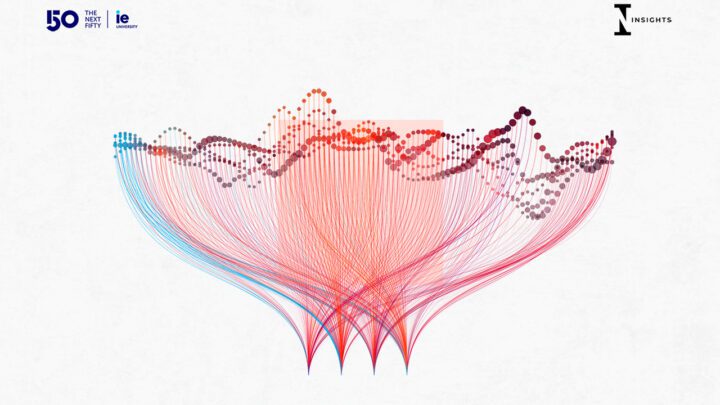

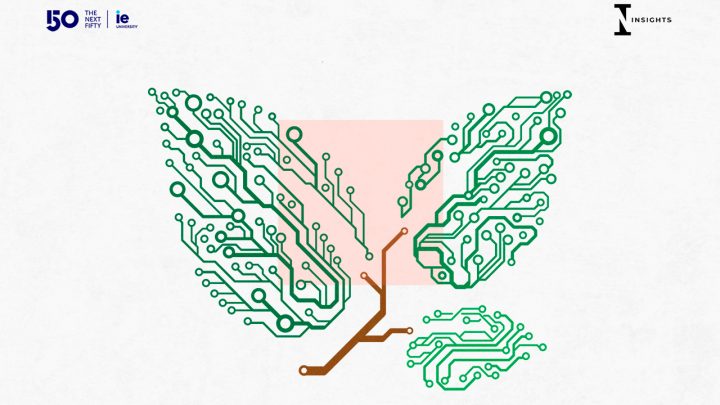
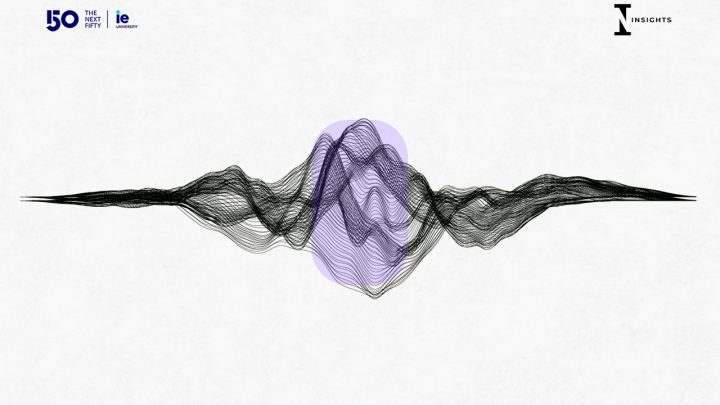
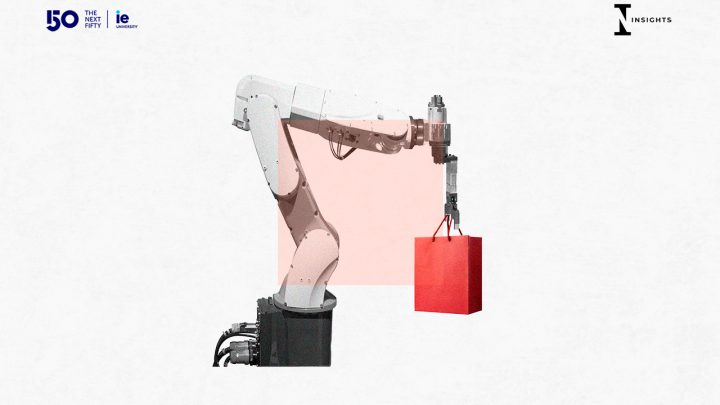
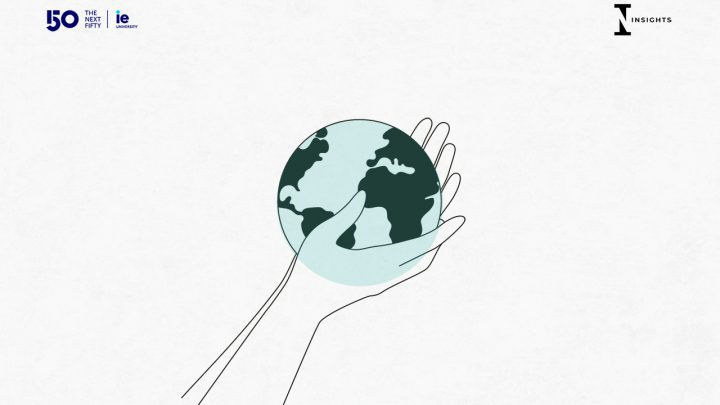

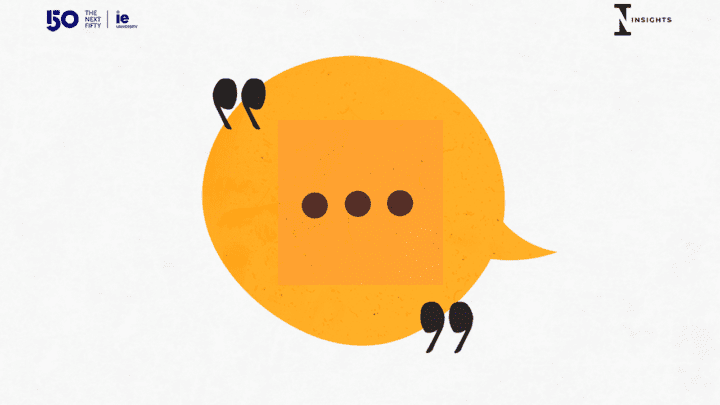
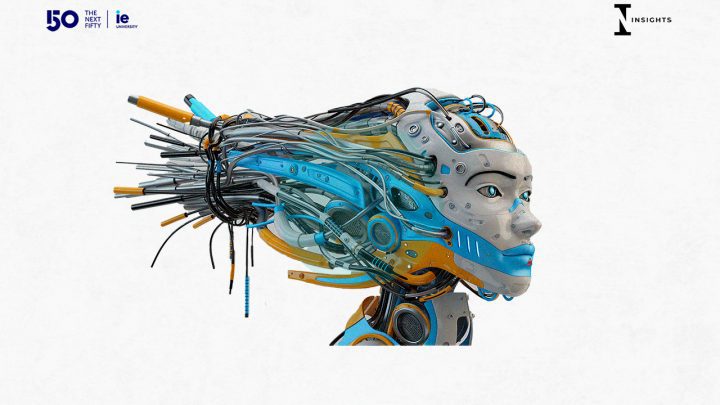
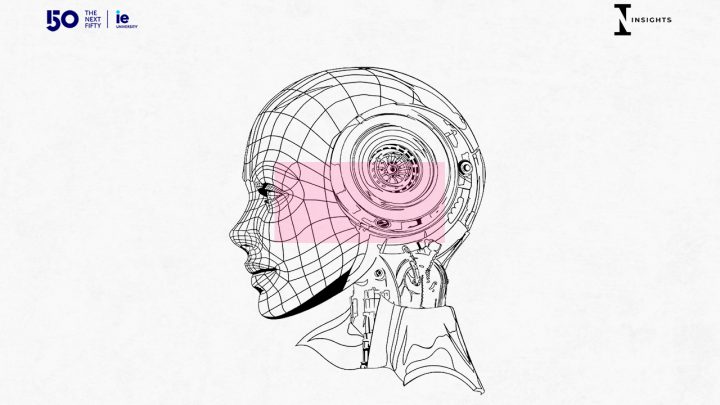

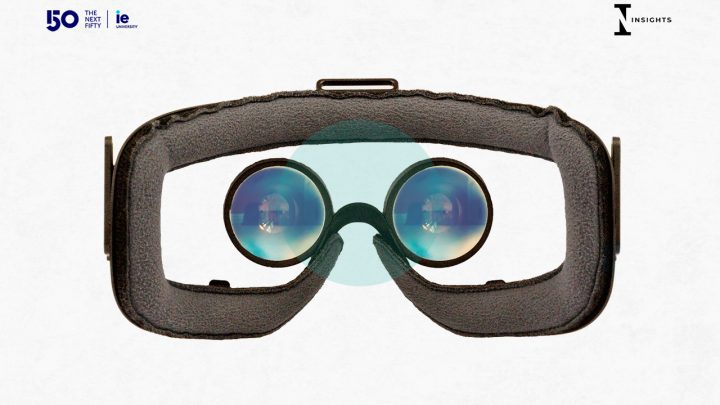
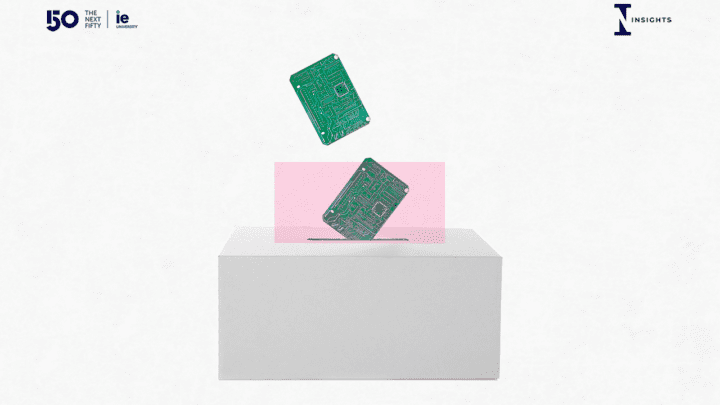
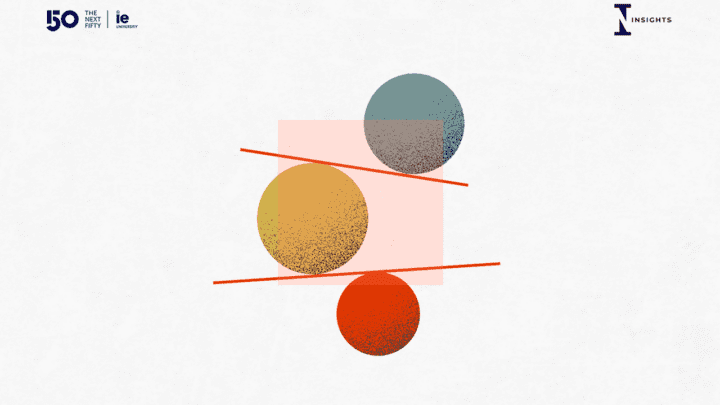
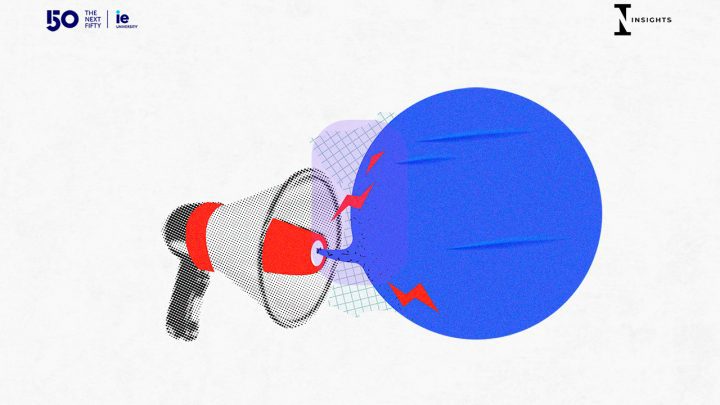
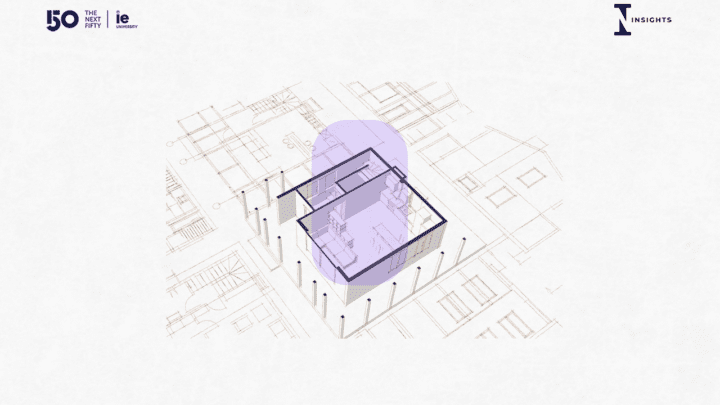
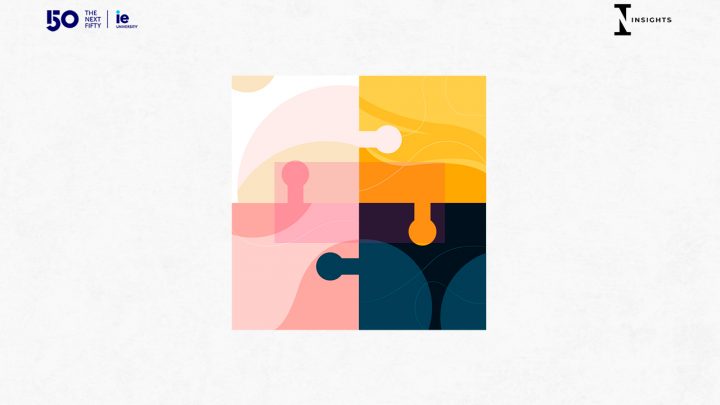
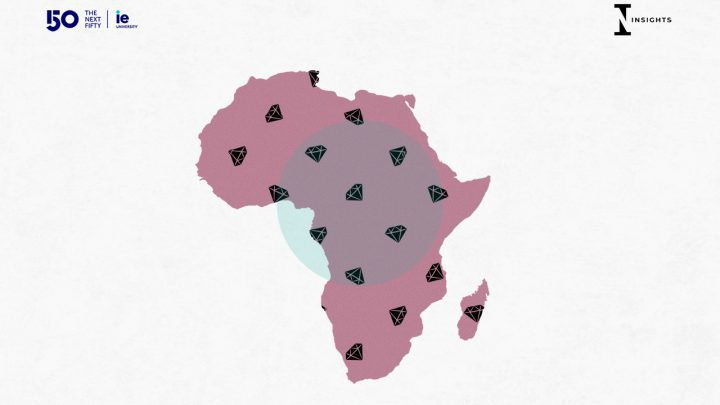
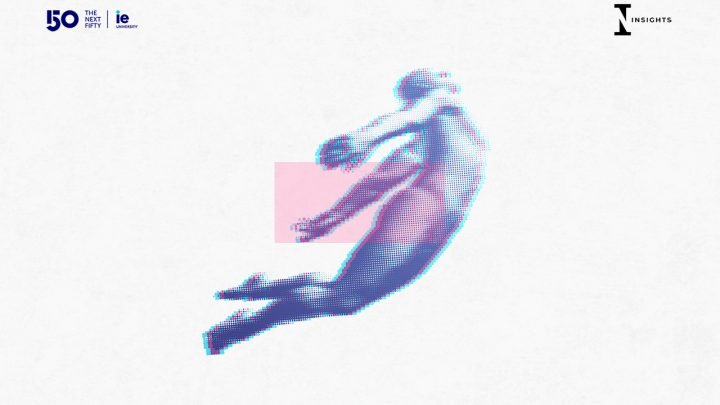
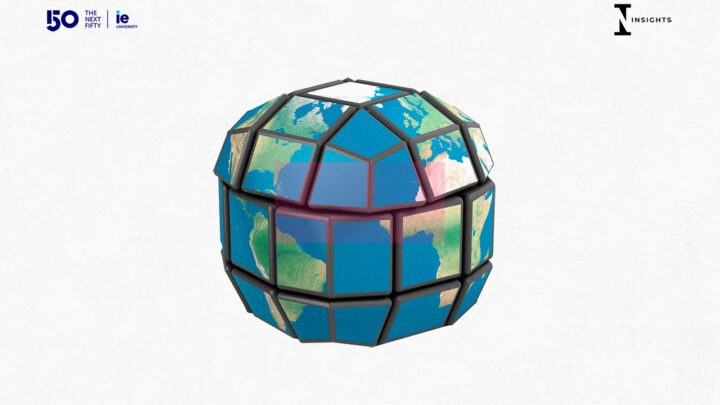
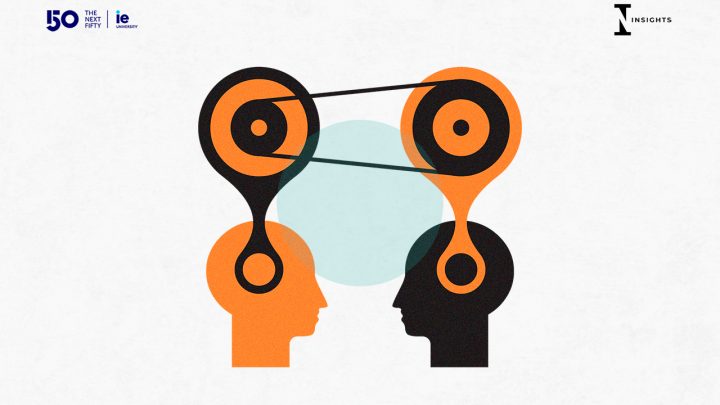
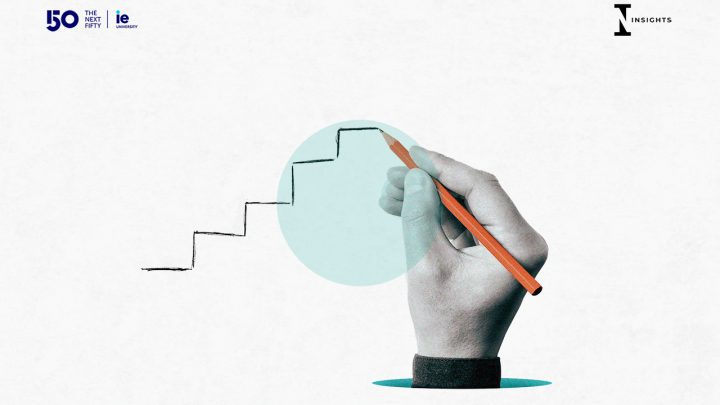
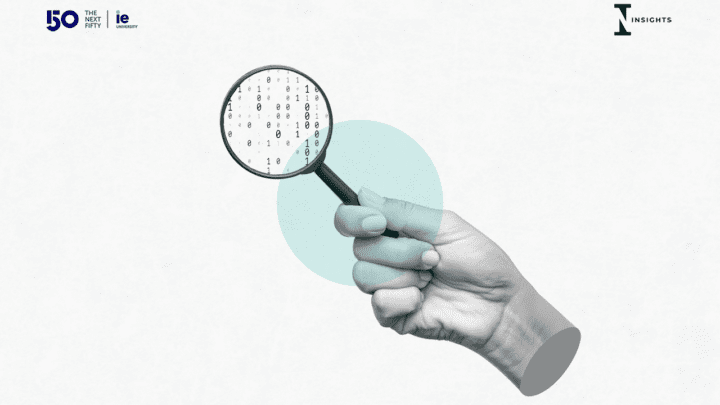
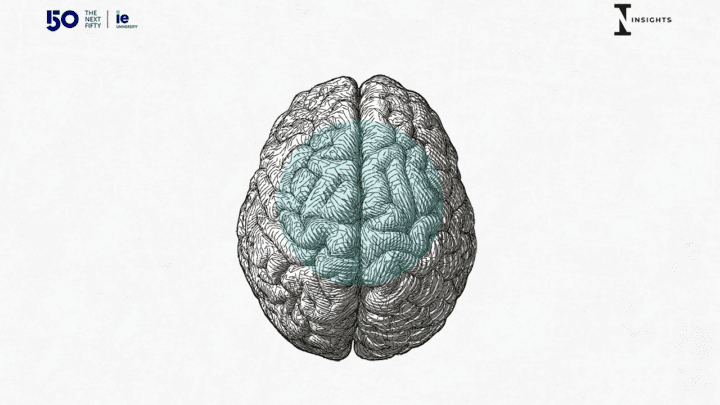

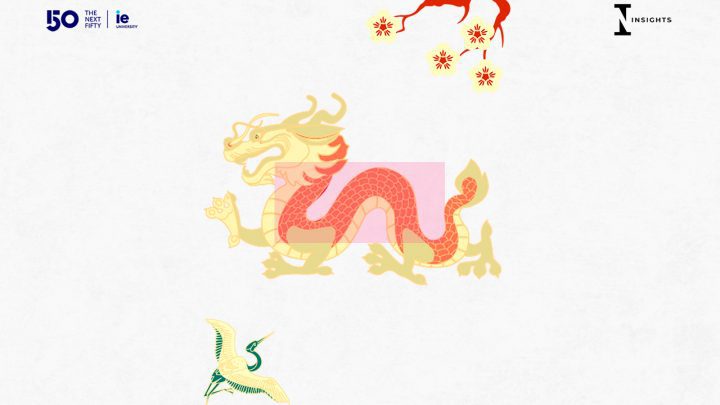
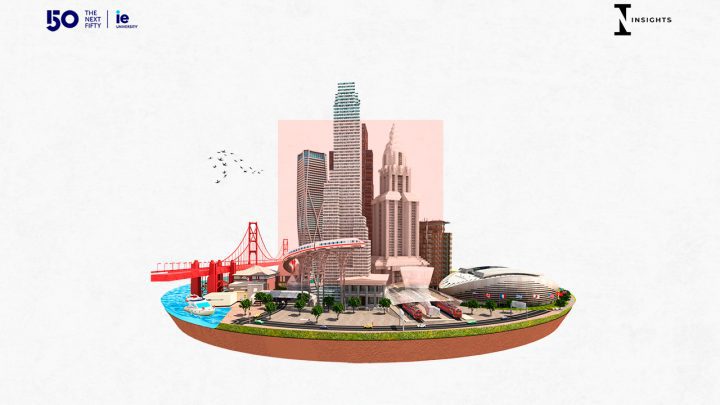
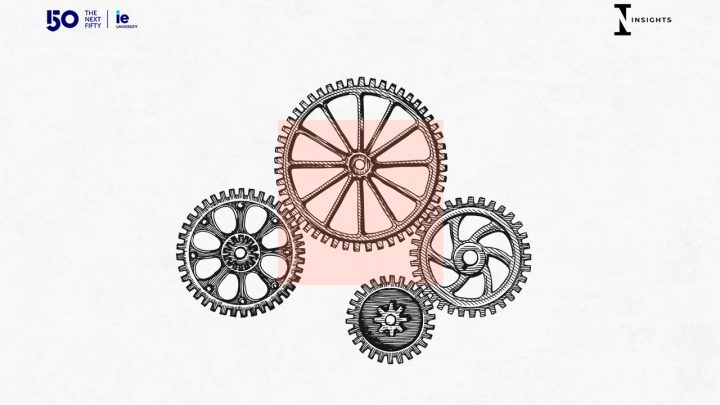
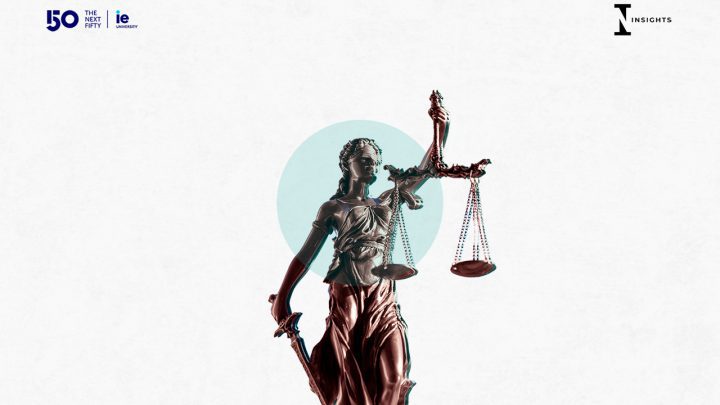

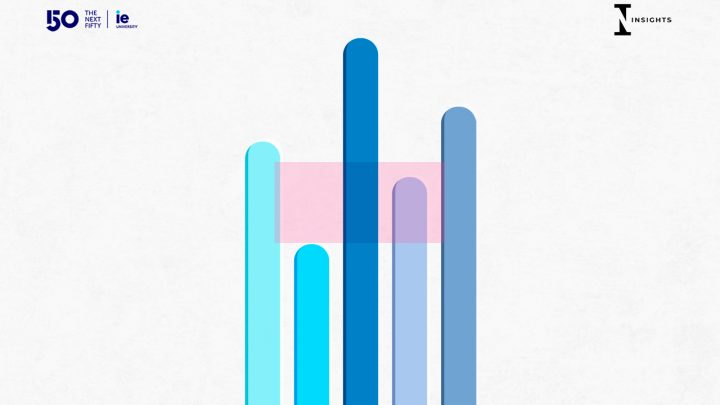

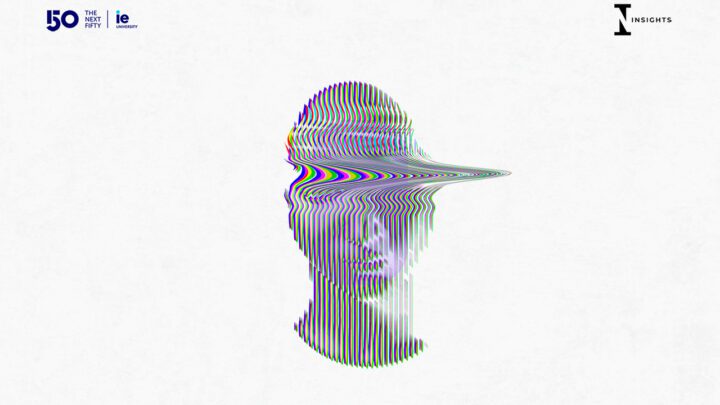
Link copied
IE insights - IDEAS TO SHAPE THE FUTURE -
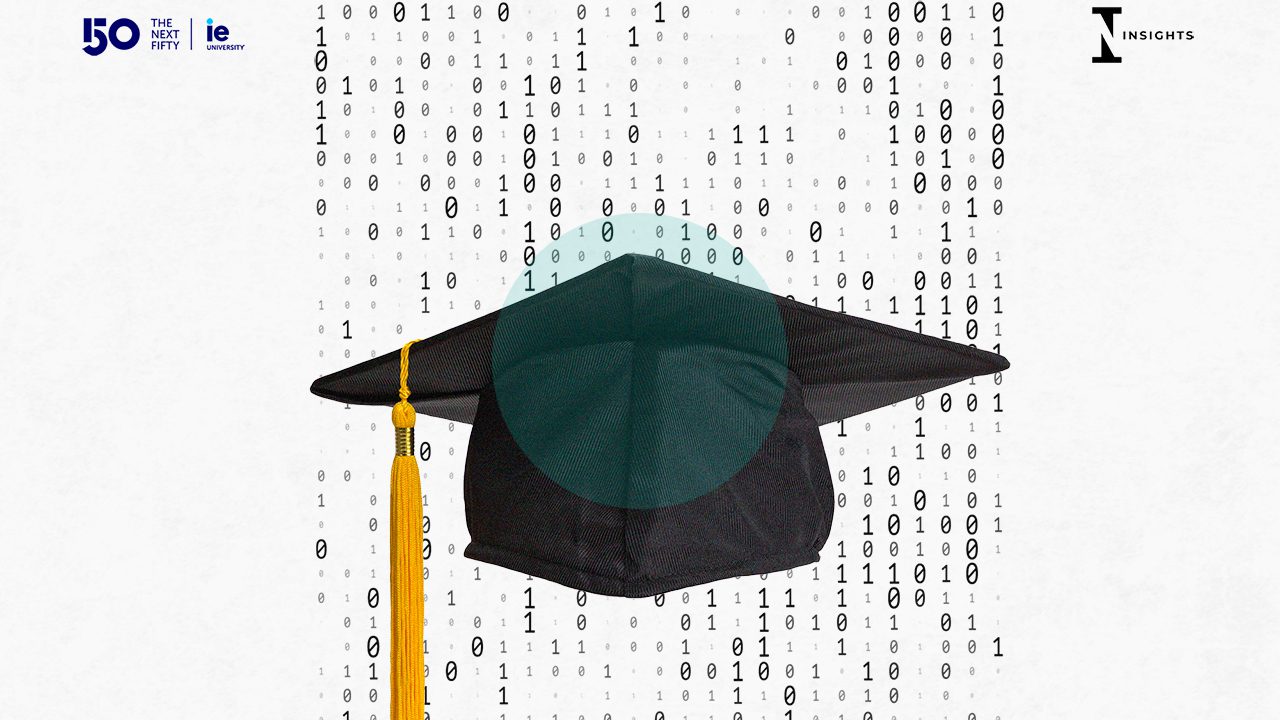
Education in 2050
Self-guided learning, personalization of courses, and an increased focus on value for money will drive the future of education.
It has been slow in coming, but disruption in education is accelerating rapidly. Digital technologies and evolving attitudes are set to drive a radical transformation and disintermediation by 2050. They will overturn the medieval model of universities – as well as antiquated approaches to schooling and lifelong learning.
The first change will be more compelling and effective ways to learn online and in hybrid formats. Technology will enhance if not replace traditional classroom learning with new ways to explain topics, provide regular “low stakes” tests to track comprehension, and adapt learning accordingly to help students progress.
There will still be a vital role for humans and teachers and tutors to track, support, engage, and empathize, but much more learning itself will be self-guided with increasingly high-quality content and pedagogical tools.
Second will be greater personalization – and not just in the pace and structure of individual lessons. For too long, students have been restricted by the “bundling” of courses at their educational institutions, based more on the schedules, preferences, and availability of faculty than by their own priorities or interests; and by traditional silos created by academic subjects.
Interdisciplinary studies are more compelling and relevant for many subjects and students, and ever more important in driving scientific advances in fields such as environmental science and sustainability. While there will still be a need for foundational courses onto which to build more specialist ones, technology will allow more scale, choice and intermarriage of ideas.
Third will be a growing search for quality and value for money in courses, leading to the greater disintermediation of universities themselves. That will partly be driven by the rising cost of education, and growing concerns about the consequent social inequity it creates.
Why accept in-person teaching at a mediocre institution when universities’ offerings can be unbundled and students pick courses offered online by the best world class experts? Breaking up delivery in this way will require greater flexibility in the regulation of teaching, marking, and granting of qualifications and a willingness by the best teachers and their universities to share. But the value of their respective brands and the reach technology can provide will support their spreading influence.
That should accentuate a focus on excellence in teaching alongside research, on which too much weight is often placed by existing institutions. The results may be surprising. Some less prestigious universities may emerge as far stronger than their more elite peers, where students often find their course support is from teaching assistants rather than professors.
These changes will likely not see the crumbling of Oxbridge, the Sorbonne, Pisa, the Ivy League, or other elite institutions: their reputations have been built over centuries, and their capacity to attract the best brains and manage substantial resources will last. Their grip may even be enhanced as they use technology to engage more actively with their alumni more interested in life-long learning, and convene a broader range of speakers and students.
But educational disruption will foster greater democratization in access and more flexibility in training to far wider groups of individuals throughout their lives. It will open up access to education to different levels of society, and reflect the growing needs for adaptation during an evolving lifetime of work and leisure.
The march of technology is not neutral: while it has benefits, it will bring many practical and ethical questions. Alienation through limited human interaction, the risks of violations of privacy in learning, and the wider stresses of mental health will all require the balance of a more humane human touch.
That will spark demand for new forms of in-person contact, new experiences during periods away from work or home, and new formats partly disconnected from formal learning – or connected to it in different ways. That is where some of the greatest innovation and human creativity will be required.
© IE Insights.
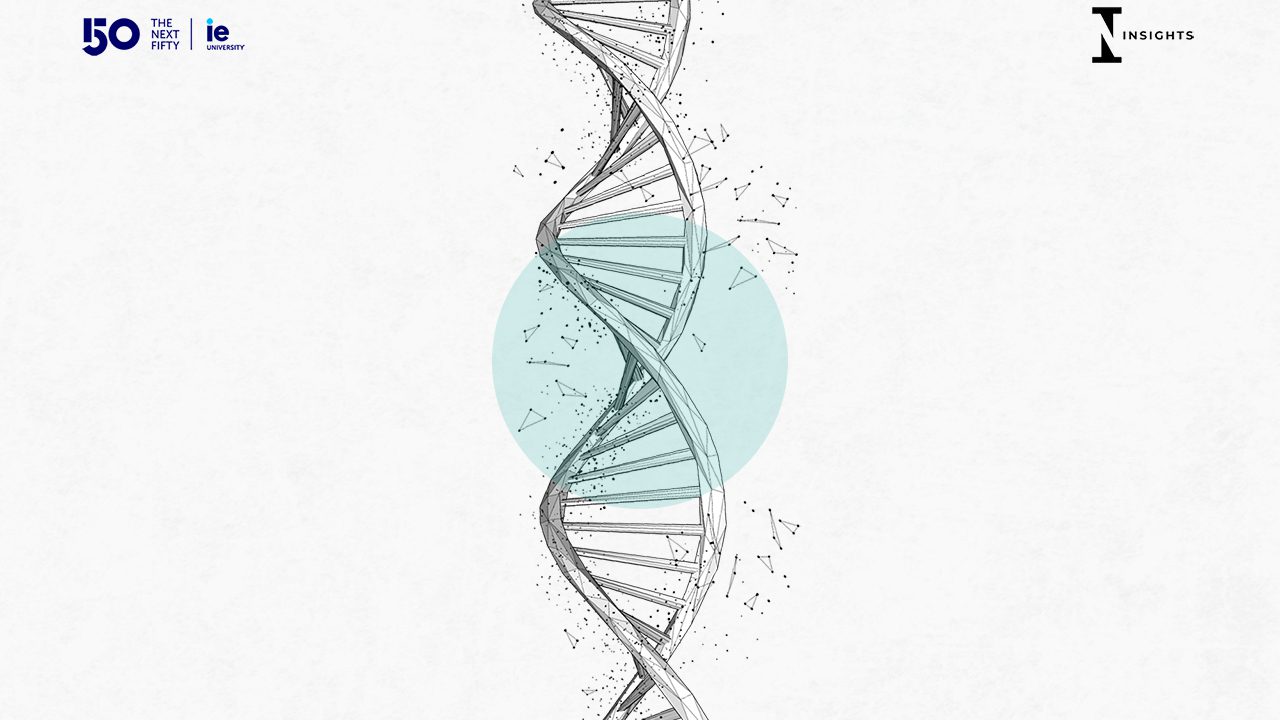
The Future of Biotech and More
The fusion of different fields of science will see groundbreaking developments in the field of biotech.
Biotech is about the micro-world. The one in all living creatures, be it plants, animals, or humans. And “tech” means that we can engineer it. Hundreds of years ago, there was already some engineering by simply sorting certain animals or plants with specific features and combining them with others. The discovery of the DNA double helix by James Watson, Francis Crick, and Rosalind Franklin in 1953, and the exact understanding of how proteins are built, opened many new opportunities in both, medicine, and agriculture.
Suddenly, one could manipulate cells to produce specific molecules and proteins, e.g., inserting a human gene into a bacterial cell to then produce insulin, which first succeeded in 1986. This was a revolution, but also just the beginning. With later developments such as CRISPR, a gene-editing tool that allows one to cut and paste genes or part of genes in any cell, new dimensions for disease treatment and for the food industry were established. In the future, CRISPR gene editing could even potentially be used to create new species or revive extinct species.
These and many other technologies in the biotech world are already being utilized successfully – the question is: What is next?
There are two types of developments: The ones slowly building on what was discovered and developed before, and the quantum leaps (or, more correctly: paradigm shifts), such as nuclear fission or the internet or the discovery of the DNA double helix. These are harder to predict.
What will have a strong impact is the combination or rather fusion of different fields in science, such as biotech and generative AI. One does not need to be very creative to think of all sorts of developments: Beyond curing genetic disease, they may be completely avoided. Beyond curing cancer, it may be completely avoided. Beyond curing Alzheimer’s, it may be completely avoided. Longevity, which constantly increased until recently, but since 2011 has shown no significant improvement, may increase again dramatically. DNA might be used for coding (DNA computing), and AI will be used to edit the DNA. Technologies will be intertwined. This may be happening as soon as 2030.
Then we have other combinations: Implanted chips (yes, with DNA computing) receiving and delivering information from brains, muscles, and other organs, diagnosing early failures, and linking individuals to therapies in real time. We will have support to augment both, physical capabilities, and brain functions. This might take a little longer, say, happening 20 years from now.
And in 50 years? Here the question about quantum leap developments is decisive. But it seems viable to have embryos being produced by any cells and babies growing in artificial wombs, people working less (given generative AI) and living longer, no lack of food supply, but also no need for messaging apps any longer as it will be possible to send a message by thinking only. Many of our senses (smelling, tasting, …) will be mimicked by artificial tools helping several industries. Mini robots will travel our bodies for repair. What about other challenges? AI will come up with many suggestions about how to best solve our most pressing ones. And will we travel by dismantling our cells and building them up elsewhere? Here I may be going too far, who knows?
Does this all sound surreal? It may today, but we very quickly got used to new, useful technologies in the past and we certainly will in the future.
Will all our problems be solved? Certainly not, especially as we, humans, are great at creating new problems, as our genes are still – and will probably still be – selfish.
© IE Insights.
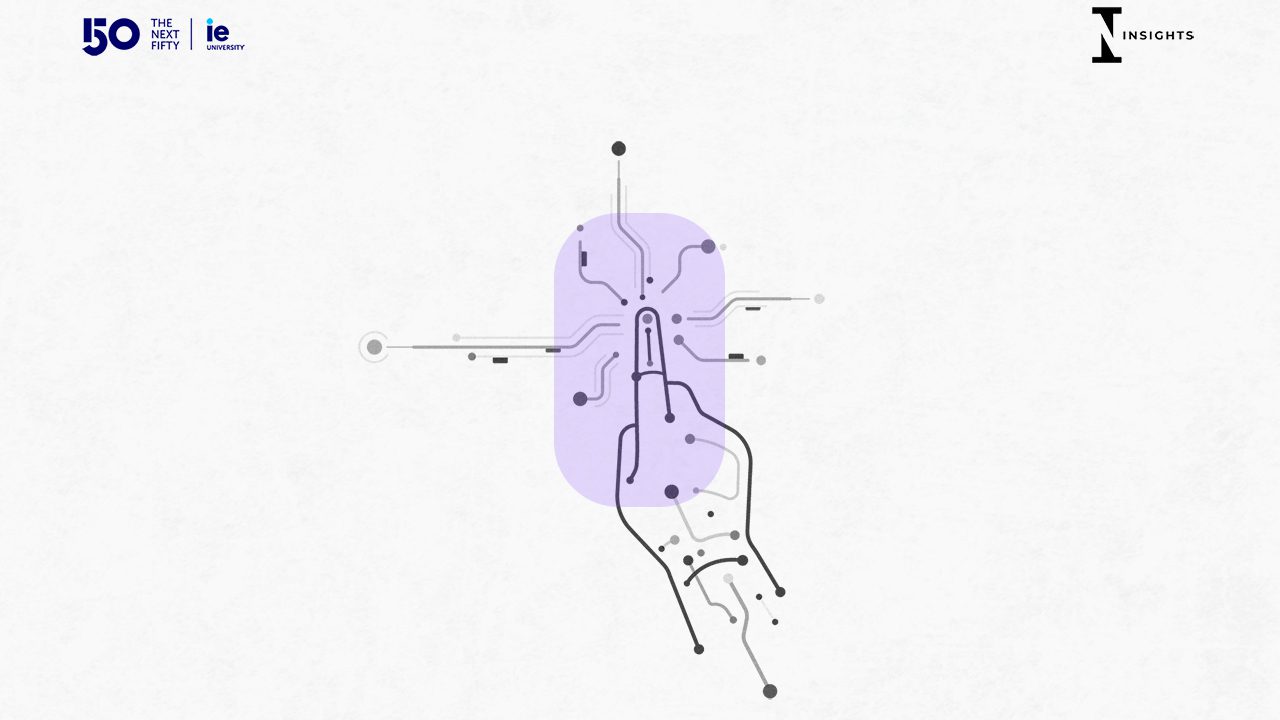
AI and the Future of Human Innovation
AI will see workers change their relationship with knowledge itself.
Most companies depend on continuous innovation to grow and stay relevant. Now with the advent of GenAI, many are left wondering how it can assist companies with contributions that have been firmly the domain of knowledge workers. I’m referring to idea generation, problem solving, complex reasoning, and decision making.
Knowledge work will evolve radically – and there is a place for humans to thrive within it. I’d like to offer a vision for this future.
To understand what that looks like, consider the notion of upstream work. In my leadership roles at Amazon and later in the C-suite of McDonald’s and Volvo, I’ve pursued innovation relentlessly and have found excellence at “upstream” work to be the best indicator of success when it comes to realizing the promise of bright ideas. This involves exploring and addressing unknowns before drawing conclusions, making decisions, and taking action. Unknowns describe the upstream world. Anything new and meaningful that a team is trying to create or solve will start with unknowns. Exploring unknowns, aligning the information gathered, and making decisions based on that information should not be left to chance and personalities.
But most organizations lack a method for it. In 25 years of business, I have never encountered a systematic way to deal with unknowns. Yet they are the common characteristic of any big bet, innovation, strategic initiative, or new growth opportunity.
To handle all aspects of upstream work, I’ve invented Decision Sprint, with detailed workflows that guide teams from the early stage of an idea down to specific actions to decide upon. One of the first steps is sourcing questions to explore. Let’s say you have a problem statement and there’s a period of time to collect questions from team members, so that an exploration can cover all the important considerations.
GenAI has the potential to speed up this kind of learning activity by raising important questions and subject matters to consider that would help your organization design better solutions, manage risk and reduce surprises. In the not-so-distant future, it will take the outputs of exploration – like answers to questions – and compose strategic business documents and critique those we write in the same way executives review the work of their teams.
But here’s the rub: it requires continuous input from human intelligence. By its nature, innovation has no precedent, no case studies to reference. And every company operates within unique circumstances like regulation, financial envelopes, business models, and technology environments. Prompting a public repository of knowledge through GenAI will likely produce limited value. Generic knowledge will not help accelerate innovation, but bringing out the intelligence of people within an organization – and asking AI what’s missing is more likely to produce benefits. That’s why it makes more sense to mobilize people to answer key questions, and later prompt AI for what’s missing. AI is helpful when we point it in the right direction.
When enough is understood about these unknowns through the work of exploration, teams move on to draw conclusions, set direction, and decide on actions. Teams may be presenting their findings and recommendations to executive sponsors. Humans may narrow in on some obvious or core recommendations but there may be more to it. Here’s where AI can help suggest recommendations on key actions and make them more complete.
When it comes to decisions, AI can help us score confidence levels for each recommendation. It will do so based on the questions and answers produced by humans on which any given recommendation stands. AI can qualitatively and quantitatively evaluate the substance and tone of what’s written to provide confidence and risk levels. With feedback loops, the precision of these scores will improve. Organizations can tap AI to speed up every step of the upstream work process, provided humans are the backbone of the workflow.
I’m an optimist when it comes to the future of knowledge work. Certainly, knowledge workers will have to up their game and, when companies employ AI, will have to change their relationship with knowledge itself. They will have to measure themselves on how valuable their contributions are to growing the knowledge companies need for meaningful innovation.
The best way to get started is to recognize the need for upstream work, and a way to navigate it, adding AI to take velocity to the next level. This will define the Second Information Age for companies, where knowledge workers will thrive with AI as a companion.
If you think today’s business environment is moving quickly, buckle up. Looking out 10 and 20 years from now, today’s fast-moving companies will seem like they moved at a snail’s pace.
© IE Insights.
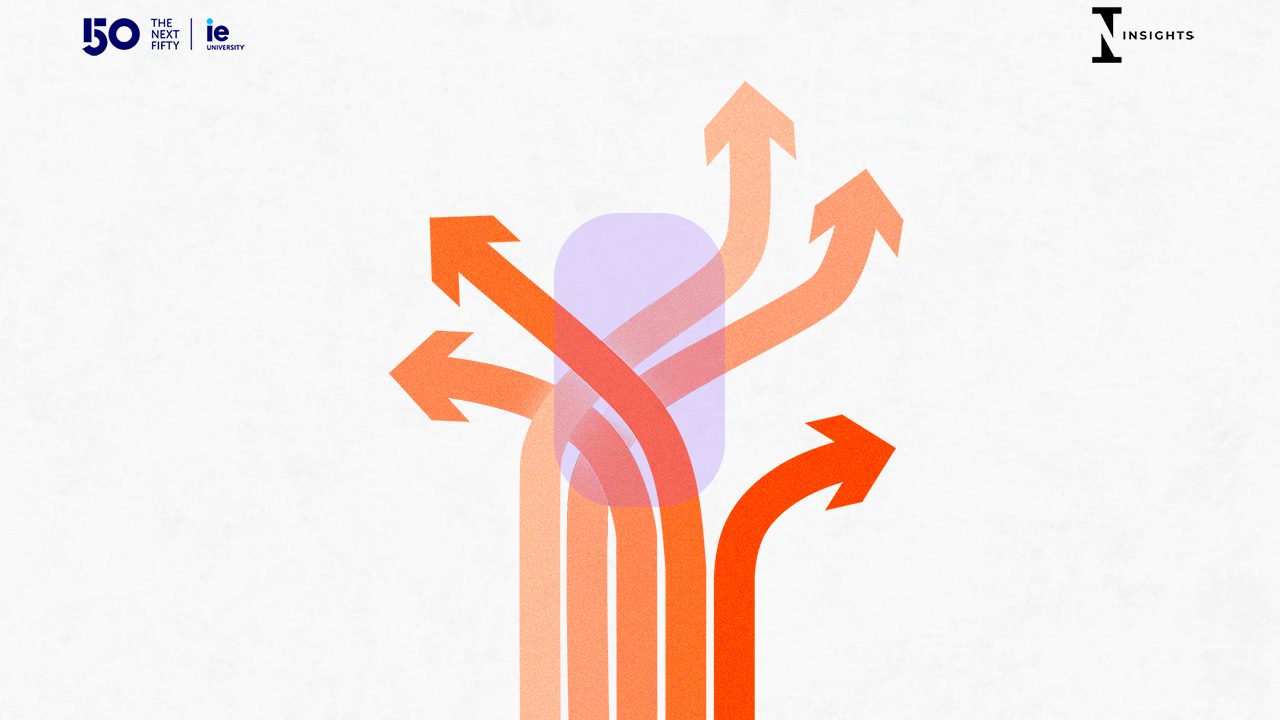
Marketing and the Future of Decision Making
Technology will improve our decision making in increasingly innovative ways, but the unpredictability of human emotions will remain.
Dr. Philip Kotler defined marketing as “the science and art of exploring, creating, and delivering value to satisfy the needs of a target market at a profit. Marketing identifies unfulfilled needs and desires. It defines, measures, and quantifies the size of the identified market and the profit potential.”
The future of marketing is pseudo-deterministic. In the future, it will be even more characterized by predictability – and randomness and uncertainty will be minimized. Using Kotler’s definition, there are three factors that will be differential in every marketing department of the future, with technology the key to achieving quality, reliability, and speed.
- Continued focus on the customer
Brands are nothing without customers and this will not change in the future. Thus, the customer must remain at the center of every marketing strategy. These customers will become increasingly sophisticated in their purchasing decisions, thanks to an unlimited amount of information at their fingertips allowing them to analyze products in a matter of seconds. Marketing professionals will need to stay on top of purchase drivers and ensure the brand matches them. Technologies such as machine learning will enable brands to optimize personalized customer segmentations and design customized marketing actions, for example through predictive modeling, which uses historical data to predict future customer behavior and preferences. At the same time, the IoT (Internet of Things) will become much more predominant. With more devices connected to each consumer, it will be easier to collect behavioral pattern data and thus facilitate more accurate and timely purchases.
- Satisfying experiences at every stage of the buyer’s journey
Because technology will help brands connect with clients like never before, companies will need to create tailor-made experiences that exceed expectations and generate engagement, a sense of belonging, loyalty, and a positive reputation. Furthermore, in the near future, brands will be called on to build homogenous customer experiences across online and offline ecosystems. Extended reality will likely play a leading role. Not only will clients buy into a brand for its offline experience, but they’ll invest in its alter ego in online environments like esports and metaverses. What’s more, purchasing decisions will be much more influenced by social proof. In other words, we’ll see an “Amazon Effect” across all sectors. Bad ratings and negative user reviews will make products and services disappear so that they won’t be available as purchase options for future users.
- Extremely sophisticated marketing processes
Marketing strategies help brands stand out and ensure that their products or services are the consumer’s first choice. This won’t change, but the processes that enable that differentiation will become even more decisive. Sophistication and speed will be crucial in reaching and convincing customers through tactical marketing techniques. In this case, AI-based technologies will help create and publish tailor-made content across different formats. What’s more, they’ll optimize processes related to client experience – from marketing campaigns to payment and logistics processes, customer service, and returns.
So, what does the future of marketing look like and, even more importantly, what shape will society take because of it? There will be deeper client-brand connections, experiences that delight customers at every stage of the buyer’s journey, and an increase in refined marketing actions that reinforce brand engagement and loyalty. Furthermore, as marketing becomes ever more streamlined and predictable, it will relieve us of the need to make choices.
It’s rather easy to envision a future in which all our purchases are machine assisted, and not just products and services – even the decisions we make around relationships might very well be outsourced. This leads to the question: What will happen to our decision-making autonomy?
Despite all this, I allow myself to be optimistic about what lies ahead. We will be assisted in our decision making in ways that we cannot yet begin to imagine – in a manner that goes well beyond product choices – and this will likely enable us to pursue a full and productive life. While machines and algorithms will help consumers make smarter decisions and help brands anticipate customer needs, humans will never be fully predictable. The truth is that the majority of our decisions are based on emotions. It’s our human nature. So, ultimately, the brands that will lead the way are those that can navigate that balance between technology and customer, between the predictable and the unexpected.
© IE Insights.
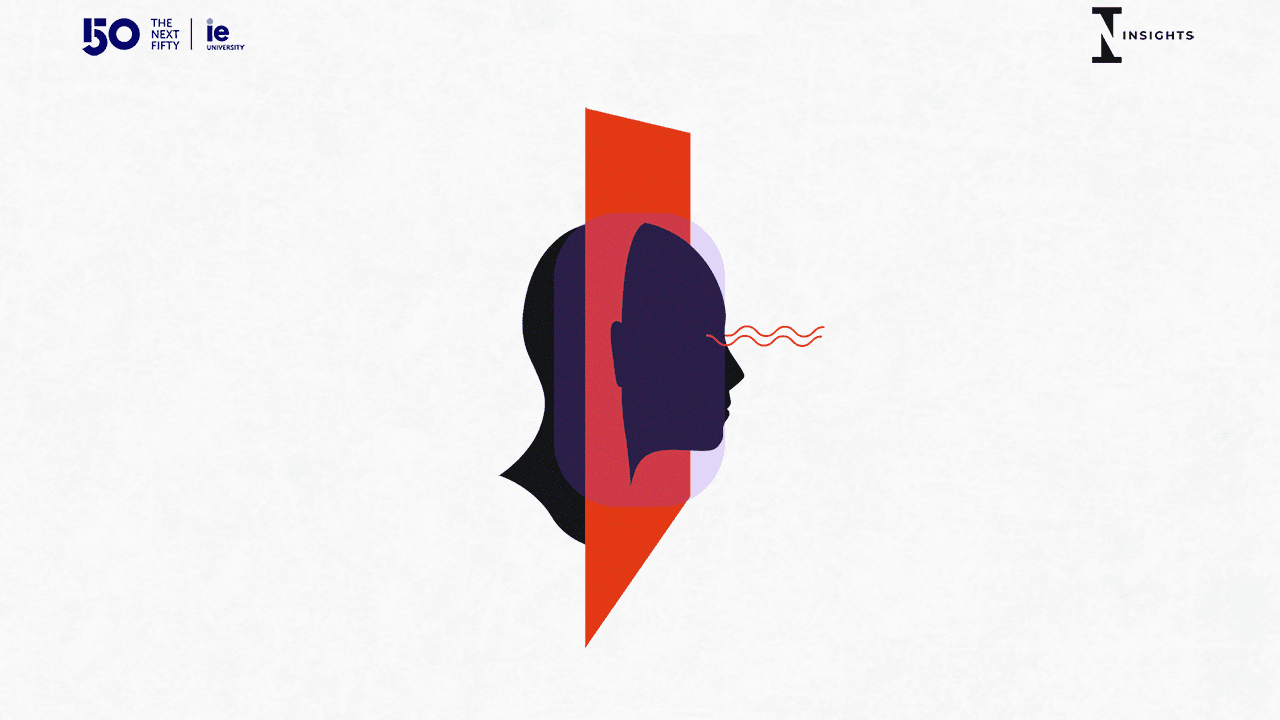
The Future of Art and Imagination
Creative spaces must be protected to allow imagination to flourish.
In our increasingly divided world, free expression must be guarded, and creativity treasured. As our digital lives become further dictated by algorithms and echo chambers, it is increasingly important to break out into the real world and build more spaces for discovery, discourse, and dreaming.
Writers and artists are central. The shared experience built between writer, reader, artist, and audience, allows a collective imagination to thrive and empathy to blossom. In our cultural world, generations blend, borders are crossed, and walls collapse, as we imagine possibilities outside our own experiences.
Our need for cultural spaces will only grow. Spaces where great minds won’t always think alike, where imaginations roam freely, and where solutions to the biggest issues of our times can be explored without prejudice.
And this is especially important for the next generation who enter a world so different to the one we did. The pace of change may be fast and our challenges greater often than we can imagine, but with a wealth of human creativity to explain, examine and debate our potential can be limitless.
It won’t always be easy. Over the past 36 years of The Hay Festival, we have seen how writers, thinkers, and artists have been attacked and punished for daring the edges of imagination. It is our duty to guard them, to welcome their challenge, and to continue dreaming of and working for a better world.
© IE Insights.

The Art and Reason of Communication
Meaningful communication will be reembraced to cut through the noise of the online world.
As an ’80s kid who grew up in a rural area, I had a neighbor with whom I’d exchange notes. Our mailbox (an old coffee can, which was blessedly rain-proof) was hidden in a far corner of my family’s property, adjacent to hers. We’d take turns writing to each other about our favorite TV shows, which Lisa Frank stickers were the coolest, which friends were being “so lame” at school. Interestingly, we weren’t best friends or even very close. We were just two kids who enjoyed expressing ourselves and sharing that with someone else. Sometimes, outside of my immediate family, she was the only person I “talked” to all day.
Contrast that with today, a typical Friday, wherein I’ve received hundreds of emails and texts, and none have been about fun things like TV shows and unicorn stickers. Maybe a handful of today’s communications made me feel connected to another human, and the rest were just a lot of noise. And sadly, its effect is like that of any noise – when it’s loud enough, other things get drowned out.
I’ve worked as a writer in the greeting card business for more than eighteen years now. How and why people connect looms large over what I do, and is an ever-changing target. Two things I’ve learned for certain about meaningful connection: it’s hard to find but when you do, it’s transformative.
Indeed, these days, moments of real contact feel few and far between. This could be, in part, because of the amount of pseudo-connection we constantly engage in – whether willingly or not – from spam texts and marketing messages to social media. We are frantically putting out and receiving communication all day long. How much of it is meaningful?
Maybe it’s because of all this pinging and grabbing at our attention, but we also seem to spend less time trying to understand one another. For example, Karl Pillemer of Cornell University recently found that over 27% of the US population reports being estranged from a family member, which means tens of millions of Americans are disconnected from at least one relative. More often than not, this disconnect between two family members can have a ripple effect on the family system as a whole. And this doesn’t even begin to touch on the divides that have happened among friends, over things like politics and COVID protocols. We have lost both the art and the reason of communication.
So how do we get back to notes in coffee cans? How do we set aside the noise that slows us down and the difference that divides us and elevate that which lifts us up?
It comes down to intentionality. Those of us who hail from pre-internet times can remember when there wasn’t really a choice: if you sort-of did and sort-of didn’t like that kid at the bus stop but they were the only kid at the bus stop, you found a way to talk. More often than not, it turned out better than okay and you ended up learning something about someone else and about yourself. Now, everyone is at the bus stop and we’re all just staring at our phones.
What we’ve seen recently — and what I think we as a society will continue to hone into the future — is the desire to be more thoughtful about whom we choose to connect with and how. Much like Marie Kondo’s notion of only keeping things that “spark joy,” we’ll hold close the connections that work, let go of the ones that don’t, and find better ways to block out the noise. And since a lot of that noise increasingly happens online and in the virtual world, I foresee a reembracing of some of our tried-and-true methods of communication, like the handwritten letter.
© IE Insights.

Banking on Sustainability
Europe's lead in sustainable finance can be expanded through decisive investment and regulation.
As the world pays ever closer attention to the climate emergency, a wave of positive change is sweeping through the financial industry. The result: I am convinced that by the end of this decade Europe’s banks will be fully established and embedded as central drivers of the transition to a sustainable future.
Deutsche Bank and others have already made sustainability a strategic pillar and helped to propel Europe into a strong lead in key areas of sustainable finance such as green bond issuance. Clients of all shapes and sizes are also increasingly committed to sustainable financing, whether to buy a home with a green mortgage or finance factories with an Environmental Social & Governance (ESG) loan whose terms are linked to reductions in CO2 emissions.
This increasing demand reflects a starkly changing economic reality: European companies have embarked on their sustainability journey. Much of the focus and environmental scrutiny is on companies and sectors which emit the most CO2, and rightly so. But I’m confident we are moving in the right direction because these companies are engaging with and requesting sustainable solutions. Many European utilities are leading the way in building a clean energy infrastructure, and many oil and gas companies are seeking to diversify their energy portfolios. Certainly, we need much stronger commitment but far more CEOs’ doors are open than closed.
At the same time, the growth in green bonds and similar securities is underpinned by surging demand from investors eager to embed ESG into their portfolios.
As awareness, expectation and demand for sustainable finance surges, banks continue to orient themselves around the move to a resource-efficient economy. Through strategic programmes of staff training, refining governance and re-allocating balance sheets, we will solidify our position as facilitators of the transition. In an ever-evolving macro environment, this necessarily includes ESG-specific risk management systems, next to innovative products.
However, to secure Europe’s position longer term, we need to look beyond banks.
Fundamentally, Europe has a capital problem and risks losing its lead in sustainable finance if it continues to rely on banks or governments as the principal source of finance. We must therefore urgently harness the power of investment through a Capital Market Union (CMU), without which we cannot raise the estimated one trillion euros required per year for the green transition – and without which there can be no Green Deal.
Alongside we need more supportive regulation of sustainable finance. The EU was an early mover with its Taxonomy process, defining and standardising environmentally sustainable economic activities. But we need to keep regulation simple and practical: the EU ESG framework has around 2,000 pages of rules and guidelines.
Sustainable finance is an area where Europe undoubtedly leads the world and there is a clear path to expanding this if we act decisively and with a sense of urgency at all levels. I am certain banks stand ready to be part of the solution and facilitate the green transition with experience, expertise and commitment to make this a long-term European success story.
© IE Insights.
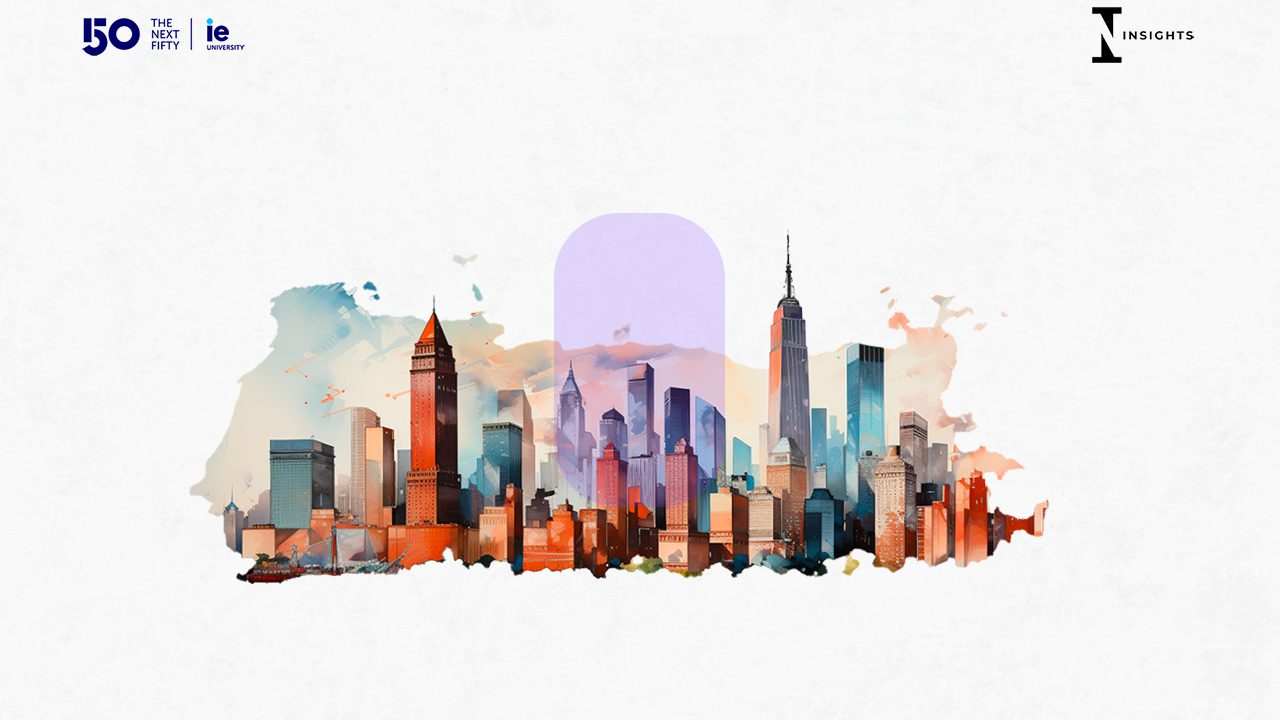
Creative Industries Will Transform Cities
Cities will be redesigned to meet the demands of the post-industrial, digital and creative workforce.
The cultural and creative industries are among the fastest-growing sectors in the world. With an estimated global worth of 4.3 trillion USD per year, the culture sector now accounts for 6.1% of the global economy with annual revenues of $2.25 trillion USD and nearly 30 million jobs worldwide.
Technology has opened new opportunities for the creative economy – 3D printing, artificial intelligence, augmented and virtual reality, blockchain, cloud computing, drones, and the Internet of Things (IoT) are driving the fourth industrial revolution. This is also impacting the way people (everyone, not just the so-called creative types) live, work, and move around. The need to stay creative in order to remain relevant means that our future entails co-existing with machines and managing the various and increasing options for instant gratification, which can often be followed by instant frustration.
Physical buildings will be called on to respond to this growth in creative industries and to the digital transformation of our lives by housing piles and piles of data – emails, digital files, images – even more so than they are today, becoming data centers in their own right. Factories and warehouses are already taking on new uses such as retail activity while, on the other end of the spectrum, even financial transactions have been removed from their traditional loci to what in real estate terms are called “new asset types.”
How will creative industries shape the cities of the future?
- Clustering of Creative Communities. Cities are places of artistic expression, culture, and economic development and these activities serve to revitalize the city from within – and this includes the adaptive reuse and repurposing of existing structures into new real estate products. Warehouses and underutilized spaces that become apartments and office spaces breathe new life into communities and as traditional industries decline or transform, their physical spaces can turn into studios, galleries, co-working hubs, contributing to the overall growth of the orange economy. This has already happened in Wynwood, Miami, a once-industrial neighborhood now a thriving arts district, and in Kakaako, Hawaii, an up-and-coming hub for artists, designers, and foodies. It is anticipated for London’s Queen Elizabeth Olympic Park, with its new higher education and cultural quarter. Meanwhile, the city of Madrid has renamed neighborhoods to demonstrate their new identities: MADBIT has transformed from an industrial neighborhood into a top digital hub of South Europe, Madrid Content is now the location of Netflix, and Madnum is home to companies including Amazon. As cities attract artists, designers, and other creative professionals – including creative digital workers – they also attract investment that in turn leads to the regeneration of existing communities.
- An increase in collaboration and shared third spaces. New business models based on two parallel forces in the workforce, the core crowd and the mind-machine paradigm, will create more ties amongst self-employed creatives, foster new business opportunities, and increase participation beyond traditional corporate rules. The collaborative nature of the orange economy will likely increase the demand for shared workspaces, collaborative studios, artist collectives, and other so-called third/fourth spaces and shared facilities. This will, in turn, influence the real estate market.
- More focus on sustainability and green spaces. The future heralds an increased demand for eco-friendly and energy-efficient real estate solutions, such as green buildings, eco-districts, and sustainable communities. The need for social sustainability will also increase. Of course, technology impacts our need for interaction and advancements in virtual reality, augmented reality, and other immersive technologies will revolutionize the way people experience art, design, and cultural events. This may reduce the demand for physical exhibition spaces or alter the requirements for real estate in the creative sector and, possibly, increase our feeling of loneliness and isolation. The creative economy must neutralize this by embracing technology to create meaningful social experiences that enhance our lives. In the future, people will want face-to-face contact and it is in physical spaces where this will happen.
The skyline of our cities is being redrawn to meet the demands of the post-industrial, digital and creative workforce – and will continue to do so well into the future.
© IE Insights.

Creating Our Future
The shared experience of creative collaboration will shape the future.
One of the most exciting transformations of the coming half-century will be driven by the intertwined relationship of human creativity and generative artificial intelligence (AI). We are today in the early moments of this change. Many of us have already begun to experiment with generative AI tools to produce novel images, conceptual designs, or texts. For the moment, most of it is of rather dubious quality, but the making of the work itself is somehow thrilling. It’s an experience that is at once exhilarating, terrifying, and slightly hilarious.
We are at the beginning of the beginning of what will very likely transform how and why creative work is done. New sorts of creative work will continue to emerge, following on the recent collaborations between artists and AI platforms like Midjourney, Stable Diffusion, and Dall-e.
Is this a threat to those of us who work in and educate for the creative industries? Perhaps. On the one hand, it seems likely that generative AI will be capable of doing some, or possibly most of what we currently do as architects, designers, and creative professionals. Many outward manifestations of creativity—the products of creative labor, we might say—can already be achieved using present-day generative AI tools, tools that will seem as primitive as Pong in a matter of years or months. The quality of this AI-powered creative work is uneven. It is wholly derivative of previous creative work. Yet the same could be said of some of what humans produce on their own. So, yes, we may be losing our monopoly on creative work. I would argue, though, that this development hardly makes us replaceable. Nor does it make creative work redundant or unnecessary.
In fact, the creative arts and industries—from the design of the city to the design of a table utensil—have an intrinsic function for humanity. Such work has value for the end user, certainly, but perhaps more importantly, it has value for the maker—for the person doing the creative work. Why have humans persistently left visible traces of themselves throughout time? Why have we felt compelled to narrate, depict, and interpret what we see? Why do we pick up the pen or the paintbrush? Why do we sing to ourselves when no one is listening, and compose pop songs, symphonies, and musical comedies about everything and nothing at all?
Why do we create? It’s simple: we are creators.
Creativity is useful, yes. It can help us solve crucial problems, in business and society. But more than that, creativity is at our core. To imagine and to make. To do. Whether or not it’s strictly needed, the child’s drawing or our absent-minded singing is an act intimately tied to our humanity, fundamental to human experience. Creativity is not simply instrumental. It’s essential.
In the coming years (and days), AI will lead to quite a lot of reflection on what exactly makes us human. And I would argue that doing, making, creating—these are at the core.
Now, this might suggest a radical turn to art-for-art’s sake autonomy. If we argue that the importance in creative work is in making the work itself (not the result), it could be taken as withdrawing from the challenges of the world into our own personal creativity. But let’s go beyond that. Because it is through making that we are able to understand and inhabit our world fully, and it is only through such experiential and contemplative action that we can hope to inflect the direction of external events and help solve the many problems that surround us.
Furthermore, with human creativity comes collaboration. We may enjoy working virtually, or with AI platforms, but we nevertheless find pleasure in collaborating with our human colleagues, coming together to learn and work and experiment. It is precisely this bodily, lived, shared experience that will shape the future.
The work of creation is important for what it does. It is also important in the doing.

Our Wild Future
Collaboration will be key to the survival of endangered wildlife and human beings alike.
Our future is intricately linked to the planet’s health and the wildlife we share with the Earth. Disruption of this balance is reaching a tipping point as one-quarter of all mammals are threatened with extinction. People and domestic animal populations are exploding and encroaching on the space our wildlife needs to survive. Today, humans and livestock comprise 96% of all biomass on the planet, and wildlife only 4%.
As the climate changes and people’s movements amplify, the disruption of the landscape and the pathogens we share is having global consequences – for example, COVID, Ebola, and SARS. A global pandemic has gotten our attention, and if we don’t act to change things soon, it will not just cause wildlife extinction but hurt our future existence.
Humans currently share more than 75% of new and emerging infectious diseases with animals. In order to stay healthy, we must be sensitive to how our patterns of disrupting the natural world can wake benign microorganisms into lethal pathogens. Front-line investigators need the resources to identify these pathogens before they spread over the planet. Unfortunately, these efforts barely exist, and most resources are targeted to patch the problem, as in creating a vaccine, rather than investigating the problem at its source.
As a wildlife veterinarian, I have witnessed devastating wildlife die-offs. I have seen herds of bighorn sheep lie dying on the landscape, gasping their last breath from pneumonia caught from a neighboring domestic sheep herd, a normal pathogen for the domestic sheep but wiping out 90% of their wild cousins. Wildlife are vulnerable to domestic animal diseases, particularly when the pressure of domestic animals grows around forests and pastures of wildlife preserves. On a global scale, some of our most beloved wildlife have been decimated by diseases that people and domestic animals have spread to them. Pathogens like the common cold in the great apes, dog’s parvovirus in wolves, and canine distemper in lions are a few examples of many that have reduced the numbers of wildlife and weakened vulnerable populations from reproductive recruitment.
Wildlife health is a vital part of the conservation toolkit needed to not only save our most critical species but also to improve the health of the people and domestic animals that surround Nature Preserves, and the global community in which we are all linked. Endeavors like mine, (the Veterinary Initiative for Endangered Wildlife) help conservation efforts build sustainable wildlife health programs. For example, over ten years ago, Nepal set out to double the number of tigers, one of the most critically endangered animals on the planet. Through government policy, concerted local and international conservation efforts, soliciting community involvement, and including wildlife health, Nepal is now the only country to achieve this outstanding goal. It takes a village, locally and globally, to achieve such success.
We already have the tools in conservation, medicine, technology, and education to make the changes to improve the survival of these species. What we need to do now is support these efforts wholeheartedly – because in the next 50 years, the collaboration and efforts of governments, individuals, communities, and international collaboration will become even more crucial for the survival of endangered wildlife, and the survival of our own well-being.
© IE Insights.
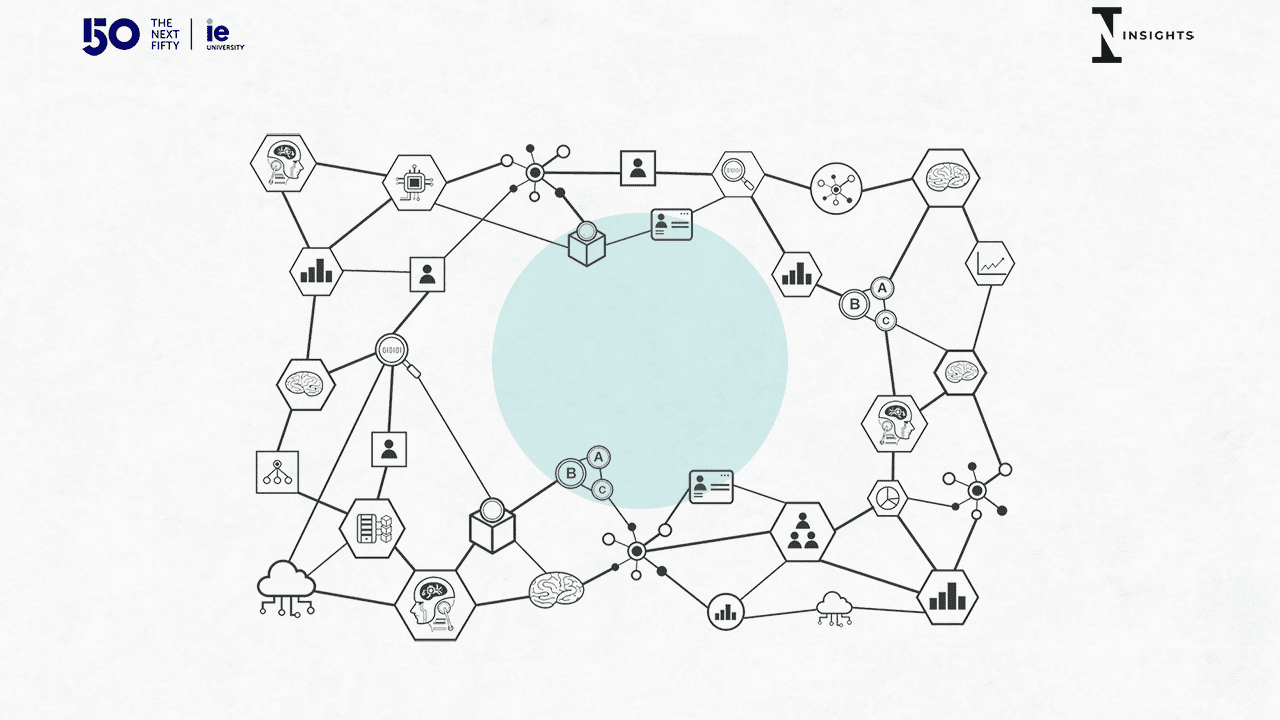
Artificial Intelligence as an Essential Part of the Future of Higher Education
Education must recognize that new technologies will be developed from artificial intelligence.
An institution like IE University must fight each and every day to ensure that the wisdom and success that comes from maturity and experience does not also build walls that keep change and the future at bay, and that the institution and its activities continue to transform the lives and education of its students. I believe that we have successfully anticipated key questions, such as how entrepreneurship, internationalization, innovation, diversity, and humanities act as motors that drive change in education, creating a foundation of learning and an instrument of differentiation and forward thinking.
As an academic institution, we live permanently in a world where ideas need to change at light speed in order to lead educational platforms. And now, at a time when we again ask ourselves where to direct the university, my first idea is that IE University must move now commit to artificial intelligence, which will be the basis from which the education of the world’s students will move into the future.
With this in mind, four months ago I asked the now-archaic ChatGPT 3 what it had to say about me. It created the following paragraph:
“Diego del Alcazar has been a major advocate for higher education in Europe. He has worked to promote the development of quality higher education and to ensure that all students have access to quality educational opportunities. He has also been a strong advocate for the development of research and innovation in Europe, and has worked to ensure that universities are able to attract the best talent from around the world. He has also been argued for the development of international collaborations between universities, and for the development of new technologies and approaches to teaching and learning”.
When I fed it more data about myself, it gave me an increasingly complex answer. When I asked it questions about education and IE, it “spat out” its thoughts, which you can read here.
All this is to say that artificial intelligence will inevitably be the backbone of production, education, and other fields. This tool will bring an impressive transformative power to almost all human activities. We must therefore push for it to become a medium that is easy for students and teachers to use, a cutting-edge resource to achieve differential goals. There is no end to how education and artificial intelligence will interact in the future and, thus, IE University should manage and embed it in everyday life and ensure that it drives our already well-established best practices. The future of education will be based, in any case, on artificial intelligence – as core and as a tool.
Perhaps with this choice, for my part, it is time to mention that AI will be the source of other technologies such as blockchain, the internet of things, big data, and virtual or augmented reality.
These new tools will give us the ability to develop different skills at an unprecedented level: from telecommunications to the development of protein structures in the field of medicine, as well as helping us to optimize the blockchain to avoid excessive energy consumption, and also to create technological systems that provide access to art, culture and literature. Educational institutions will be responsible for providing young people with the tools necessary to develop the critical thinking needed to ensure that AI will always be an adjunct to human endeavor.
Note that my aim is not to forget these other important sectors, but instead to point out that digitalization has reached a plateau and that it will be on top of artificial intelligence that the new technologies will be developed and that we should therefore focus on teaching our students and professors about the potentialities of artificial intelligence.
© IE Insights.

Brave New World
A fictional take on the role of humanities in the future.
The book that rested on his chest slid to the floor and violently hit the mat. The blow woke him with a start. He opened one slightly bleary eye and was suddenly invaded by a feeling of resentment, of subtle restlessness.
The crackle from the fireplace, of half-consumed firewood, soon soothed him. He managed to get up out of his chair, slowly, that pain in his hip forever limiting his movement. He opened his mouth in a full yawn, scratching the double chin that the years had drawn on his face, now aged and languishing. He looked around trying to orient himself from the deep lethargy that clung to him; those naps always kidnapped him.
His dazed look drew a glossy library, where he used to spend hours submerged between the pages of books, subjugated by the smell of wood and resin. “I have always imagined that Paradise will be a kind of library,” he laughed to himself, remembering Borges’ quote, as if he hadn’t woken up from a nap in this life but in the other. He looked down at the floor and saw the culprit of his abrupt awakening, an old copy, almost a hundred and fifty years old now, by Aldous Huxley. He adored those first editions, and when it was published way back in 1931, Brave New World was quite a revolution. Although he wasn’t born until fifty years after that milestone, literature was eternal, making him feel optimistic, humbly victorious.
He picked the book up from the floor and inspected the worn cover while meditating: society was safe from the Alpha, Beta, Gamma, Delta and Epsilon, those demonic breeds masterfully described by Huxley. Then he questioned himself: was it possible that today’s society had not yet eradicated wars or poverty? That we still struggled not to harm the environment? That we continue to be vulnerable to disease, far from the utopia of immortality? He had come to accept the imperfections of coexistence, that education was not the backbone of current societies, that happiness (oh, such a capricious yet comforting concept) did not shelter each individual and each community with its mantle… And, even so, even knowing that the world was far from those ideals, he felt proud because we had not fallen into the devilish temptation…
– “Do you need something? A coffee, perhaps?” – the metallic voice of his Artificial Friend interrupted him. Helpful, submissive.
“I need you to shut up. Don’t bother me.” His response was dry and dominant.
He picked up the glass of wine that he had set, before his nap, on the modern edition of Goethe’s Faust. His daughter had given him the book for Christmas and on the cover was the black silhouette of Mephistopheles on an indigo blue background. Yes, our society avoided a pact with the devil, he thought, and although technological advances were a never-ending source of temptations, we knew how to bend them to our will, to recognize the infinite risks they present. These days, technologies, digital or biological, were at our service, not the other way around.
Also, he smiled to himself, we’ve avoided succumbing to the cosmetic and self-imposed happiness with which we were invited to taste the apple, that neo-inquisition of “correctness” that would have turned us into servants, into castes of nothing, as in the book of Huxley. Rather, we dedicate ourselves to more humble, more respectful deeds, such as the care of seeing, of understanding, each individual, of delving into their singularities, their nuances. We are now far from the pestilence of those who sought to cancel behaviors that were not perversely stereotyped. Even so, one had to be alert, he said to himself, remembering Camus: “stupidity has a knack for getting its way”.
If fifty years ago he had had to guess at the current world, he would never have foreseen the speed of change (and back then, there were plenty of visionaries). It is thanks to literature, among other arts, that we have managed to preserve our memory, feed our imagination, and promote common sense, without which we would never had been able to guard against that threat to the essence of human nature.
Our society was imperfect, he smiled proudly.
© IE Insights.

The Key Technological Drivers of Decarbonization
The technological transition to decarbonization will be beneficial in all senses of the world.
The most important thing to understand about decarbonizing humanity is that it is the greatest, most decisive technological transition, as it involves shifting from a fossil-fuel civilization to one “powered” by electricity obtained from renewable sources. And renewable is meant, of course, in the strict sense of the word. Whatever the European Union says, gas and nuclear energy are not renewable – and we have no need for them whatsoever.
Why is it so difficult for us to imagine a world without fossil fuels? Quite simply, because decades of opportunistic misinformation peddled by the oil industry has led many to believe that the climate emergency was an issue that could be negotiated. Obviously, this is not the case: 100% of scientists agree that there is an emergency, and that it is not being caused by any kind of natural process or evolution, but by human intervention. Anyone who disputes this should be considered ignorant or irresponsible, and then swiftly removed from any center of decision-making on anything at all.
However, beyond the perverse machinations of an industry that decided to compromise the lives of future generations in exchange for short-term profits, we must understand that there is no going back on this transition, and not because we are extremely responsible (which is not the case). The fact is that this technology is intrinsically superior, not only because of its performance or because it is cleaner. It is better in the capitalist sense of the word because it is considerably more advantageous financially.
The two core components underpinning this technology, solar panels and batteries, are associated with huge technological economies of scale. In both cases, we are talking about technologies that bring dramatic cost reductions as more and more units are manufactured. Over the last two decades, as occurred with microchips and Moore’s Law, the manufacturing costs and prices of solar panels and batteries have fallen by over 99%, whilst making significant gains in efficiency. A solar panel purchased today is much cheaper than it was a few years ago and generates much more energy, and the same is true of batteries. In fact, the fortune of one of the richest people in the world, Elon Musk, and the astronomical valuation of his company Tesla, are based precisely on this logic.
In turn, and compounding the lies spun by the oil industry, all those who believe that these technologies are based on the use of scarce elements such as lithium and the so-called rare-earth elements, are mistaken. Lithium was thought to be scarce because we simply had not looked hard enough for it, and rare-earth elements were considered rare because we paid little attention to them. As soon as these materials began to be strategic, deposits suddenly appeared everywhere, and we now know that they are more abundant and widespread than we initially thought. We can safely say that the planet has all the materials we need for this technological transition, and that they can be extracted at a reasonable cost.
However, let us not forget that we are talking about a technological process: lithium is the core element of today’s batteries, but not necessarily of those of tomorrow. One of the most abundant elements, sodium, is emerging as a potential alternative, among many others.
The only thing that makes sense today as regards decarbonization is, firstly, to accept it as desirable and inexorable and, secondly, to put as much pressure as possible on our politicians so that they give the issue the utmost importance and maximum priority instead of simply using it to add a colorful (green) brushstroke to their programs. We are no longer talking about the future of our children or grandchildren, but about our own future. We do not have to act quickly, we have to act NOW.
© IE Insights.
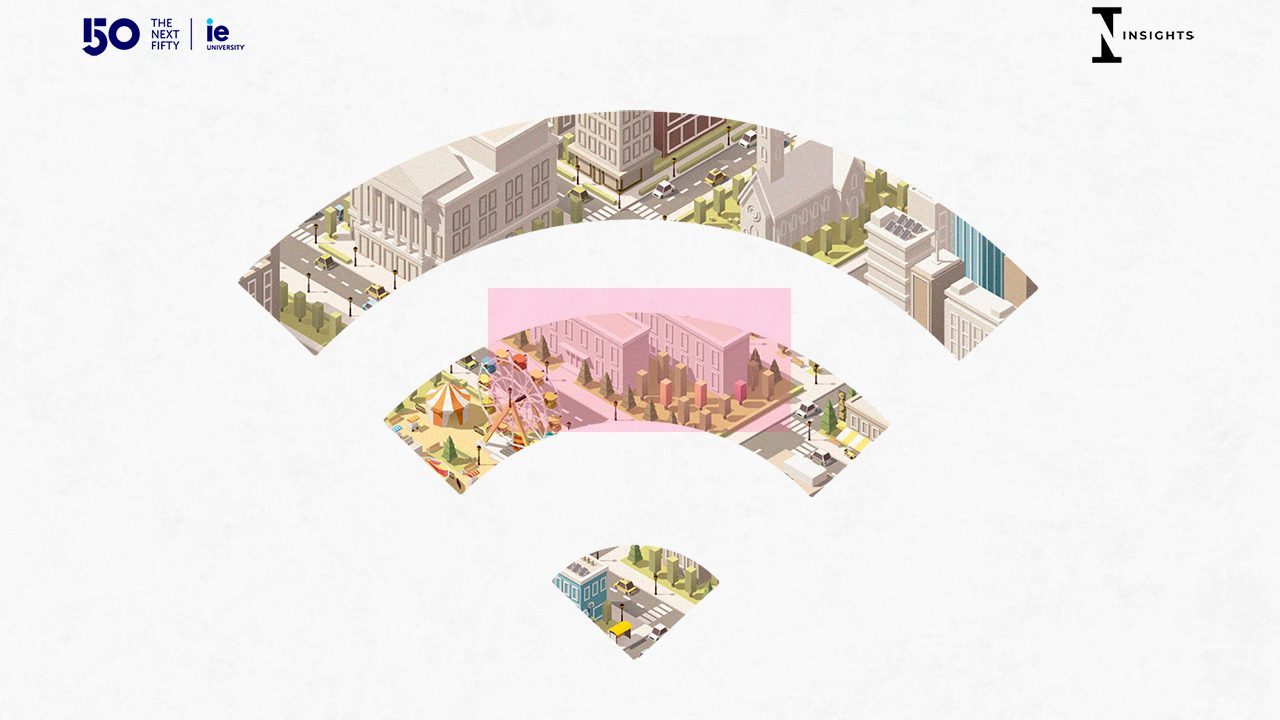
The Future of the Internet
Techno-solutionism versus governance to shape our digital life and spaces.
I’m sorry to disappoint you, dear reader. This article is not about generative AI, and predates the release of GPT-4. Back then, many technologists, businessmen, and consultants were selling the idea that the metaverse was the future of the internet. That was pure marketing. So far, what they called “metaverse” was only a rebranding of what we know as extended reality (XR), including virtual reality, augmented reality, and mixed reality.
Those technologies enable immersive education, digital twins, and other really interesting and potentially game-changing applications, but that is not the metaverse. If you want to understand why, and how misleading the PR claims are, I recommend this post by William Burns III who, amongst other roles, was Vice Chair of IEEE’s Metaverse Standards Group between 2010 and 2017.
Now that the new wave of generative AI has emerged, many proclaim that the metaverse is dead. The new cash cow has whipped the metaverse off the map. Web3 has also been left out of the limelight. Web3 (not to be confused with Web 3.0, or the ‘Semantic Web’) is a blockchain-based infrastructure for the distributed resolution of problems related to asset ownership. Blockchain is the technology that makes online decentralization possible. It brings new tools such as smart contracts, cryptocurrencies, and any other types of tokens.
Web3 evangelists say that the technology will give the internet back to the people, ensure privacy, end disinformation, and bring about participatory – or, at least, deliberative – democracy, amongst others. Will it get mainstream enough to deliver on its promises? That’s a different story. The so-called AI ‘foundation models’ – trained on an immense amount of data that makes them adaptable and capable of being applied to various tasks – could bolster both the development of the Web3, and the comeback of the Metaverse.
All of them: generative AI, blockchain, Web3, and immersive technologies could help build a better internet. They could also exacerbate existing issues within digital spaces: addiction, harassment, exploitation of privacy, discrimination, surveillance, disinformation, polarisation, job insecurity, social fragmentation, cybercrime… If the deployment of new technologies follows the same trajectory as social media and the big platforms, these problems are likely to be perpetuated and intensified.
How to avoid making the same mistakes? At this point, it’s clear that techno-solutionism won’t get us out of trouble. A proper governance system will. Governance is what the future of the internet is about. Governance to ensure that digitalization is fair, equitable, responsible, secure, and private; that serves the common good and shared prosperity.
Governance not only means rules, norms, and procedures, but also rights, incentives, eliminating barriers and fostering impact investment – putting money into innovation and into developing new technologies that help us to navigate all of the challenges that arise with digital transformation and connectivity.
Making the internet a healthier, more civic, democratic, respectful, responsible, resilient, and robust space is an obligation we owe to ourselves and to future generations. Getting the internet, AI, the metaverse, Web3, etc. on track will also mean ensuring that digital technologies make a significant contribution to global climate goals, and not the opposite (the AI industry is already more damaging to the environment than airlines, and Bitcoin consumes more energy annually than a country like Argentina.)
If the worst fears become true, the future of the internet could be similar to The Machine Stops, E.M Forster’s dystopia. A dystopia where we all live in an uninhabitable world, reduced to dust, where we are forced to live below the surface of the Earth, isolated in rooms, where the only thing that keeps us alive is our connection to the Machine. The Machine is a sort of metaverse that connects the world, where people interact through messages and holograms. It dominates everything and sets the rules of life.
None of this is inevitable. To avoid it, we must act, all of us: citizens, politicians, decision makers, business leaders, intellectuals, educators, professionals of all kinds, activists, caregivers… The moment to create the future is now. Paraphrasing my friend Albert Cañigueral: if you don’t build the future, others will do it for you (and you might not like it). A whole range of possibilities are at our fingertips. The destiny of the internet, and of humanity, too.
© IE Insights.
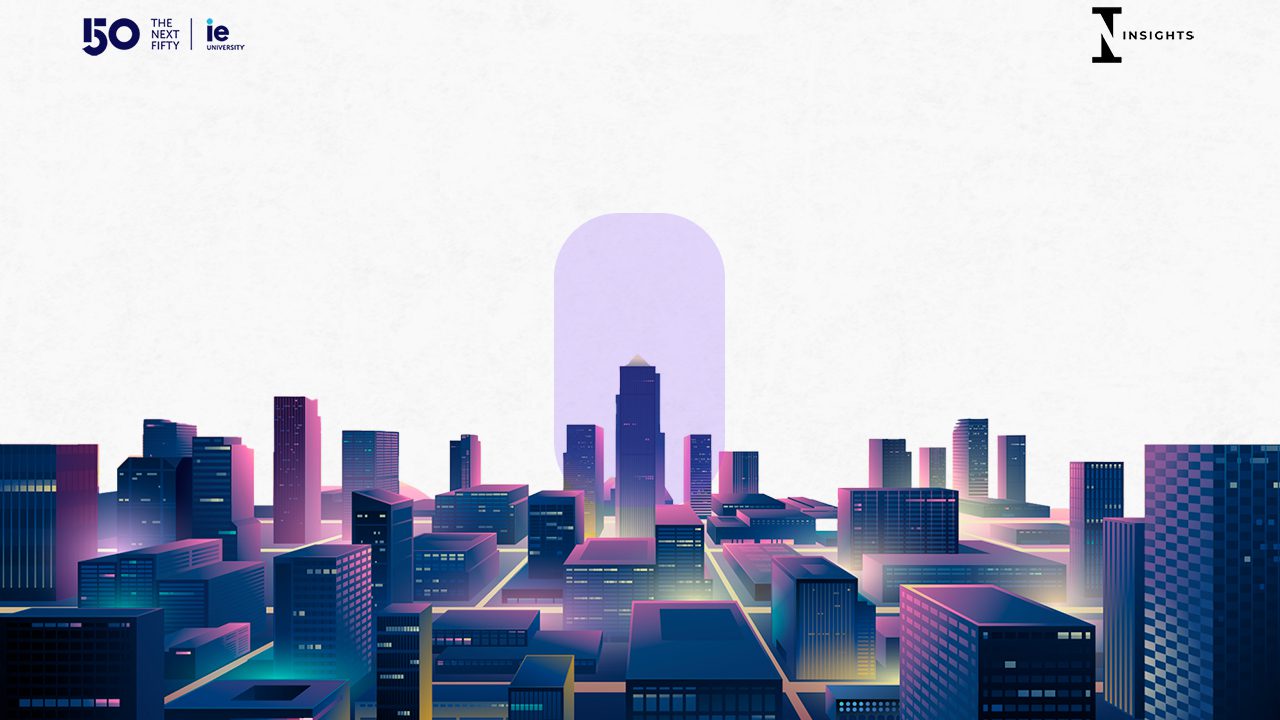
Coming Soon: Our Phygital Lives
The metaverse can transform the way we build and interact with our physical environment.
Architects imagine and create lasting structures, shaping habitats and environments. The field of architecture is constantly evolving, and this is particularly the case as technology advances. Of course, navigating these changes has proven challenging for the profession.
One of the most pivotal advancements for architecture of the last century has been computer-aided design, AKA CAD. Pierre Bézier, a French engineer working at Renault developed the mathematical principles behind CAD in the 1960s, enabling 2D digital drawing and 3D modeling. It took two decades – until the 1980s – for these digital creation tools to reach mass adoption, but when they were finally embraced, a variety of career paths opened up for architects. It then became possible to use imagination and skill to not only design and shape physical surroundings but also virtual ones, for example in video games, and cinema.
Now comes the metaverse. Let’s forget about the buzzword and define the concept. The metaverse refers to the evolution of the web from a 2D interface to a 3D one, the immersive internet where we connect through a network of interoperable platforms and experiences. Leveraging XR technologies and 3D designs, we can create completely new worlds, and digital twins and simulations, and we can transform the way we build and interact with our physical environment. This evolution of the web has brought about a new tangent for architects and professionals experienced in these technologies – and it is just the beginning.
A recent Delphi study by the Copenhagen Institute for Future Studies reached a consensus that the metaverse is already here, at least to some degree. “We are seeing fractions today of what will eventually become the metaverse, but it will still take some time for it to fully arrive.”
The advent of the metaverse is expected to be highly impactful on society by 2030, its influence on the profession of architecture is already unfolding. Architects are working alongside developers to design virtual experiences where we can enjoy music, arts, and fashion, virtually attend concerts, visit galleries, and shops with branded experiences aimed at Gen Alpha and future generations. There are AI-assisted augmented reality mirrors that interact with consumers in high-end retail stores. Physical objects such as handbags are linked to a digital twin with perks for collectors. Real estate digital twins facilitate off-plan sales, taking over the need for model homes.
Imagine you are investing in an apartment that’s under development. Now, thanks to the metaverse, you can experience the scale of the space through VR headsets – but not only that! You can also interact with your soon-to-be home, choosing the finishings, picking out flooring, bathroom fixtures, kitchen cabinets, essentially customizing your home in virtual reality before it is built. There are some studios that are paving the way in using virtual reality to challenge the boundaries of experience. Foster + Partners, for example, have warehouses dedicated to design reviews at a 1-to-1 scale using AR and VR with VR backpacks, holo lenses, and iPads to create virtually-enhanced walkthrough experiences of physical sites. This allows stakeholders to more accurately understand the spatial experience and how the building would fit within the city as part of the design and planning process.
The metaverse, in my opinion, has the potential to revolutionize the way we live, work, play, and express ourselves. Soon, our virtual and physical worlds will have merged in a way that allows us to freely navigate amongst them in our daily lives, particularly as AR and VR technologies become more accessible and affordable, and users become more comfortable and confident in living immersive digital experiences.
That’s essentially what the metaverse is all about: the seamless convergence of our physical and digital lives, bringing people, spaces, and things together in virtual or augmented digital worlds. It will be here sooner than we can even imagine.
© IE Insights.

The Past is Catchy. Be on the Watch!
As nationalism grows, will the repetition of history lead us closer to confrontation or cooperation?
The past is catchy, like a song, or as historians put it more formally, history repeats itself. The universal rule applies to major occurrences and small incidents alike.
The question of the past coming back – the myth of the eternal return, of palingenesis – has been raised in every latitude. In the West, the Stoics created a theoretical formula for the repetition of the world, an idea that was already circulating in Egypt: the world is extinguished through a great conflagration that in turn restores everything to its origin. In this way, events and happenings happen anew.
Meanwhile, in the East, life is well understood as cyclical. There is the representation of life in yīn and yáng (阴阳) and in Chinese cosmology, events and happenings repeat eternally, but with an added nuance. Repetition polishes events to perfection. The eternal return does not simply mean repetition but a moving towards perfection.
The snake that eats itself has also been represented, with slight variations (a serpent or a dragon, for example), in all cultures. The Ouroboros symbolizes our eternal yet futile struggle against the repetition of things. The word comes from the Greek βόρος, which means to eat, and from οὐρά, meaning tail. It was the concept of Ouroboros that led Nietzsche to the realization that it is not only events and incidents that repeat themselves, but also thoughts and ideas. Faced with the prospect of doing the same things over and again, Nietzsche’s superman (the Übermensch) can only be free by abandoning his fear of repetition.
Now, at present, there is a recurrent idea, one that has continually surfaced since the invention of the modern state (provoking any number of headaches), and that is nationalism. No matter where in the world you look, there it is, the great snake of nationalism biting its own tail. Every country has its measure but, as in all things, the degree of danger varies according to size. These days, there is no more pernicious nationalism than that flourishing within the two world superpowers, the United States and China. It would be naive to see the danger solely as one of military escalation. Ideas shoot first. It is the ideological escalation that sets military escalation in motion. Ideas are the trigger of conflicts.
American nationalism was relatively contained until President Trump let it off its lead – and it’s important to note that a characteristic of nationalism is that once its growth gland is activated, it never stops, resulting in what we might call nationalist acromegaly, or gigantism. Chinese nationalism, also relatively contained until recently, is showing signs of exponential growth in the Xi era, producing that pernicious escalation of ideas. It is a prelude to the worst portents.
What looms ahead for China, the United States, for the world? There may indeed be a tense decade before us, marked by national security, a decade in which an atmosphere of extreme suspicion and distrust reigns and, as the Chinese adage goes, even every blade of grass and every tree will be seen as an enemy soldier (草木皆兵 cǎo mù jiē bīng). Perhaps the decade will be shattered by an actual war confrontation, caused by a simple mistake or war hawks on either side.
Still, from this, there might be a path into the future that after a decade (or more) of fierce competition constitutes renewed cooperation. After the wildfire, there is new growth. Will it lead us to repeat the same thing or allow us to get a little closer to perfection? This thinking seems reserved only for those ultra-optimistic hopers, awaiting a World Government, as proposed by Einstein, or an Earth Constitution, as proposed by the Italian jurist Luigi Ferrajoli. Unity might only come from a more imminent danger directed at Earth, like a giant meteorite!
In any case, the future will come for us, so let’s be on the watch, as Charles Bukowski advised:
there are ways out.
there is light somewhere.
it might not be much light but
it beats the darkness.
be on the watch…
© IE Insights.

Water: A Journey to the Border Between Utopia and Dystopia
We live a dual reality: a journey to stark water scarcity or a future in which no citizen will lack access to the most basic of resources.
As you read this, young girls in the village of Katra (Uttar Pradesh, India), belonging to a lower caste, crampingly wait after dusk or right before dawn to go to the fields to relieve themselves. One day after another, they go in pairs to ravines and other isolated places to practice open defecation. Some of them are then gang-raped and murdered. Despite the claim in 2019 of having eradicated open defecation, 21% of rural households in the country still lack access to safe, private toilets.
384,400 km from there, on the Moon, all is covered in water and still our natural satellite is 100 times drier than the Sahara Desert. In 2020, data from NASA’s SOFIA mission confirmed that water exists in the sunlit area of the lunar surface (maybe also beyond) – molecules were found embedded, or even sticking to the surface of, grains of lunar dust. Small water ice deposits may not only provide water for future astronauts to drink, but water molecules can also be broken apart into their constituent hydrogen and oxygen atoms, thus allowing astronauts to breathe and providing an energy supply source. USA and China currently competing for those water resources.
Over the past 40 years, the world’s population has doubled; water use has quadrupled. In 2050, increased population will result in a 19% increase in agricultural water consumption in order to ensure long-term food security for circa 9.6 billion inhabitants. Overall water demand is projected to grow by 55% by 2050 (including a 400% rise in water demand for manufacturing). The global urban population facing water scarcity is projected to double from 930 million in 2016 to 1.7–2.4 billion people in 2050. This challenge is compounded by water quality degradation, since 90% of sewage in developing countries (80% on average worldwide) is discharged directly into water bodies.
We live a dual reality, a journey to the border between dystopia and utopia, to the heart of darkness or the blinding light of a future in which no citizen will lack access to water.
Somewhere between Uttar Pradesh and the South Pole of the Moon, AI is seemingly getting us closer to utopia, through predictive maintenance for water supply, future flood and drought risk prediction, analyzing water quality patterns, optimizing energy usage in water treatment and distribution (thus reducing costs and carbon emissions), managing infrastructure assets and water resources. Microsensors provide us with real-time information on our consumer profiles, distributed ledgers of information allow for accountable water use right trades, digital twins pave the way for the simulation of different scenarios, IoT speeds up data transfer… Yet, none of these technologies would deliver in the absence of new mindsets and redesigned incentives.
The daily strive for dignity of women in Uttar Pradesh and Dhaka and Lagos and the periphery of Lima or the suburbs of Nairobi… is not a symbol of the failure of new technologies, let alone the lack of financial resources. Rather, deprivation and violation of human rights to water and sanitation are explained by deep gaps in sound water governance, which not only needs to be transparent and accountable and full of integrity and meaningfully engaging stakeholders, but should also address the redesign of incentives, sectoral policy coordination, or the uptake of innovation.
Richard Feynman, Nobel Prize Laureate in Physics, 1965, once said: “It is much more valuable to imagine what exists than to imagine what does not exist.”
© IE Insights.
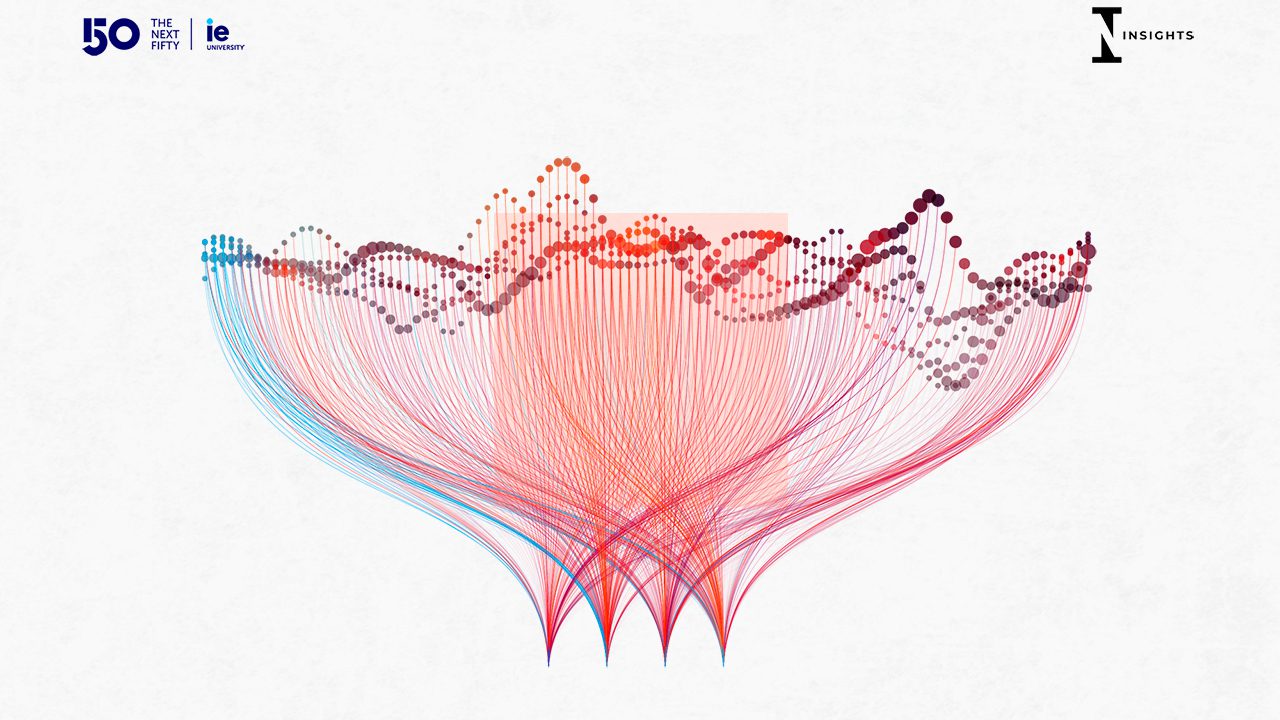
Breakthroughs in Science and Technology: Sci-Fi Made Real
AI, clean energy, and bio-convergence will drive a change greater than the Industrial Revolution.
In the next 10 to 50 years, we can expect to see continued advancements in technology, advancements that could solve major world problems and also make some of our current science fiction possible. These advancements depend on our ability to manipulate information (AI), extract clean energy, and converge information systems with biology.
Artificial intelligence will become increasingly sophisticated. We have already been able to collect and store information on behalf of virtually every person and machine on the planet. The internet has now become a massive library that can increasingly be used to find or predict information to make decisions automatically. This trend will not only continue but will drive a global change larger than the Industrial Revolution. We see this in the possibilities of ChatGPT, avatars, and machines that will seamlessly interact, like with humans. These ideas have been illustrated in sci-fi movies such as iRobot, Her, Ex Machina, the Matrix, and others that combine AI with robotics, virtual reality, and increasingly powerful computing.
Another major theme of science and technology is the possibility of new energy sources, ranging from clean hydrogen to cold fusion. Energy, particularly clean energy at a low cost, is not only a driver for the economy and global sustainability, but also for clean water, which is abundant if energy costs become negligent. Our energy currently comes directly from the sun like solar cells; indirectly from the sun like gas, oil, etc.; or from within the structure of atoms such as nuclear. So far, the most inexpensive energy source has been from carbon-based fuels. However, the cost to transform the sun’s energy directly to electricity, or to synthetically produced fuels, or to use fuel cells, has been decreasing. In the near term, cheaper carbon-free fuels are of course needed for global sustainability. In the longer term of 50 or more years, cold fusion, dark matter, or other atomic-level energy sources could provide an almost limitless source of clean energy, which could enable a new economy, global sustainability, limitless clean water, amplification of our food production, and low-cost manufacturing and supply chains.
The third breakthrough in science and technology is bio-convergence, which is also related to synthetic biology. Bio-convergence refers to the integration of biology, engineering, and computing to create new technologies and solutions. Advances in synthetic biology, biotechnology, and genomics will make it possible to manipulate biological systems, such as cells and organisms, in new and innovative ways. If we can connect our computer systems to brain and nerve interfaces, we will enable prosthetics that a person can “feel”, replacements for eyesight, digital twins of humans that can speed up drug discovery, and accurately predict the outcomes of medications. The ideas related to bio-convergence can also be seen in sci-fi movies that examine genetic engineering and cyber-biological systems such as Gattaca, Elysium, Minority Report, and Jurassic Park.
In conclusion, incredible science and technology-based advancements are possible from AI/computing/robotics systems, energy sources, and bio-convergence.
© IE Insights.

Shaping the Future of AI Governance
Thinking in the short- and long-term simultaneously will enable the creation of favorable AI governance systems.
The artificial intelligence boom may very well flatten out in reasonable time, but it will long continue to be relevant, particularly where it intersects with other technological advances. Roy Amara, former President of the Institute for the Future, famously said, “We tend to overestimate the effect of a technology in the short run and underestimate the effect in the long run.” And it is this misperception of the impact of technological change over time, this dissociation between present and future – between the now, next, and new – that has implications in the current AI regulation debate.
Technologies, especially emerging and disruptive ones such as AI, bring about constant and rapid change with profound consequences on prosperity, power, politics, peace and security, and how we understand “humanity.” To navigate the growing – sometimes silent – change to which these technologies expose us, and to narrow the aforementioned dissociation gap, it can be useful to position ourselves as futurists and cultivate a foresight mind with a panoptic vision of trends and futures.
Futurists think differently about time. As Amy Webb explains, for any given uncertainty about the future, be it a risk or an opportunity, futurists tend to think in the short- and long-term simultaneously. They do not use time lines; they use time cones, based on the concept of light cones proposed by Hermann Minkowski (who also happened to be a professor of Einstein.) The edge of the time cone (also known as futures cone) signals the present and highly probable events for which there is already data. The open ends of the cone take us into more distant futures for which there is no data or evidence, so uncertainty is the rule. They project possible, probable, plausible, and preferable futures, as illustrated by Trevor Hancock and Clement Bezold.
The debate about technological governance is very lively. A dichotomy may help explain the discussion. There is widespread situational awareness (and evidence) of the potential of AI as an agent of progress and social good. At the same time, there is broad caution about the future challenges posed by an increasingly closed AI, with less – or detached from – human interaction, which may pose existential risks for the future of humankind. Autonomous agents (AutoGPT) paving the way to artificial general intelligence come to mind.
AI governance raises a double dilemma. One is epistemological: does it make sense to regulate in a written-in-stone manner the permanent change that this technology entails? The other is a weighting dilemma: what should be regulated? AI applications, sectors, risks? And what are the values, principles, and interests to be protected? Is the canonical trade-off between innovation and security founded and sustained? Weightings are never zero-sum.
I align myself with those who prefer to dismantle the myth that governance stifles innovation. Governance is per se innovation. Regulation should focus on the three key elements of AI: infrastructure, algorithms, and data.
The best AI governance systems will be those that are capable of monitoring the entire lifecycle of the technology, the foreseeable and the unseen, ex ante and ex post, from its ideation phase to its implementation and peak, and the effects it generates, with a particular focus on unintended consequences and existential risks, and adapting quickly and responding to these unwanted effects.
Such governance models should update these risks in a transparent, multistakeholder, and expert-driven manner, according to Andrea Renda, Senior Research Fellow and Head of the CEPS Unit on Global Governance, Regulation, Innovation and the Digital Economy. They will be core elements of a new AI geopolitics currently being defined around multistakeholder hubs. AI literacy will thus be key.
The general trend shows a significant level of agency on the part of international organizations and G-summits in the field of AI regulation – alongside the progressive positioning of corporations through the adoption of codes of conduct, principles, and guidelines that nurture this nascent, congested, and fragmented AI governance ecosystem.
The proliferation of regulatory instruments on AI governance is a sign of our time. We can expect a process of extensive cross-fertilization between these principles and rules of hard and soft law. In the future, what may very well emerge is a self-contained regime of international law for the effective global governance of AI, consistent with the principles of technological humanism. The Global AI Agency may become a reality, though it is not poised to take shape immediately.
Our present day includes great power competition, breakdown of value chains, and signals of decoupling – it does not allow us to be optimistic. But let’s think like futurists – and with hope – about the next 50 years, that this is where AI governance might be heading.
© IE Insights.
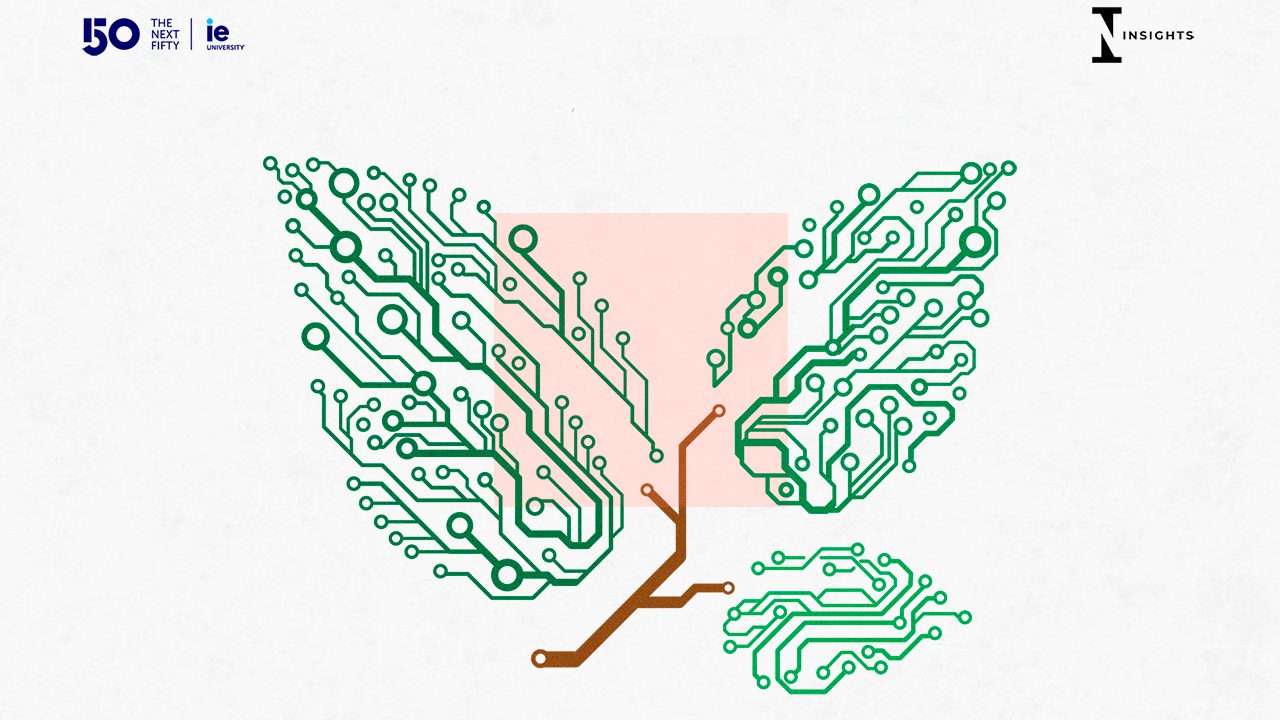
The Future Union of Nature and Quantum
An imagined future which sees quantum computing interacting with nature to spark the recovery of the planet.
May 10th, 2073. Madrid, Spain.
Estimated total population on Earth: ten billion five hundred and thirty-two thousand, six hundred and twenty-nine people.
People on Earth suffering hunger: none.
The emergence of the first cells on the early Earth was the culmination of 750 million years of chemical and geographical processes. Another 3.5 billion years of continuous learning, spontaneous mutations, and natural selection were needed to allow complexity to thrive, and to enable massive biodiversification of organisms during the Ordovician period. Unsustainable human activity could have washed out years of evolution in a nano-fraction of time.
On another time scale, in 1977, Frederick Sanger developed the first DNA sequencing technique. It took scientists 26 years and three billion USD to fully decipher the human genome. But once we had figured out the code, in less than five years, the world’s first genetic modification of human embryos was reported, unleashing a new era of possibilities for humanity. Events causing major exponential (non-linear) change are known to be disruptive. And once triggered, they’re unstoppable.
Back in 2023, finding a model that allowed us to shift sustainability from a “cost” to a “driver of growth and value creation” was at the top of everyone’s mind. Climate change was threatening the global economy. At a time were 40% of the food generated was thrown unused, how could we starve out 3.1 million children every year? As suggested by Voltaire, common sense isn’t so common.
The question became, how could we evolve from a culture of extraction to monetizing regeneration? How could we bring the systems of Earth back to health to revert the situation?
Tensions existed between the sustainability goals that climate activists were imposing and general business objectives. At least, it was seen this way from a corporate perspective. But, of course, a way of seeing is also a way of not seeing. Tricky, but true. Many times, it’s a matter of using the right lens, zooming out, or changing the time horizon. Is it us who impact? Or are we about to be impacted?
Wicked problems are always my favorite. The trouble with these mysteries was that the theory is so complex that no human mind can integrate all the variables and anticipate scenarios of the consequences that possible solutions can bring.
The goal back in 2023 was to achieve resource maximization to drive systems change towards regeneration, basically to generate a synthetic ecosystem they called “The Matrix”. For this, a pilot study was launched in the south of Spain during the summer. Excessive groundwater depletion was jeopardizing water supply for industries and citizens in the region. The idea was that the Matrix could have control over resource allocation and pricing; materials and energy would flow from one unit to another according to production and consumption demands. It was to be a perfect coordination where modularity enabled a set of distinct yet interdependent organizations to work together without adhering to hierarchy. The ground rules were simple: maximize material and energy, and prioritize transformation over extraction. No leaks and maximum efficiency. There was resistance in the beginning. Governments, private companies, and local owners wouldn’t fully disclose information. but, without this information in full, the system would never find its way through for joint value creation – so to avoid public disclosure of private data, blockchain was used to ensure transparency, immutability, and autonomy of data, materials, and products along the value chain. Applying the blockchain and big-data technologies also helped determine fair pricing and trading schemes.
The results were positive. Groundwater storage levels were recovering, and the units involved (public or private) had seen significant cost optimization. The Matrix unit was replicated throughout the world. However, there was no global interconnection between them and the model therefore failed to reach its full potential.
Einstein died with an unresolved equation, “the theory of everything”. The equation intended to be a coherent theoretical framework of physics to fully explain all aspects of the universe, how each component is created and all the links and interconnections. Putting this theory into practice would be reverse engineering, akin to mimicking the superpowers of mother nature. This, in fact, is what quantum computing is all about, it manipulates the quantum state of atoms, in a controlled way, to process huge amounts of data very efficiently and a million times quicker than the silica computers we used back then (microchips) in the first quarter of the century.
April 22 now marks the anniversary of the birth of the modern quantum environmental movement. No one knows who switched on the quantum computer, or why they did it without consent, but once it became active, all barriers vanished. The Q-Days had arrived and they are here to stay. Since then, things have changed, some say for the better, others for worse. It’s a matter of perspective and appreciation (it always comes back to our way of seeing). The fact remains, though, that in less than 30 years, natural recovery has skyrocketed. We all have food to eat, water to drink, and a decent life to live. I guess Nature and Quantum are indeed soulmates and they finally found a common language to save us all.
© IE Insights.
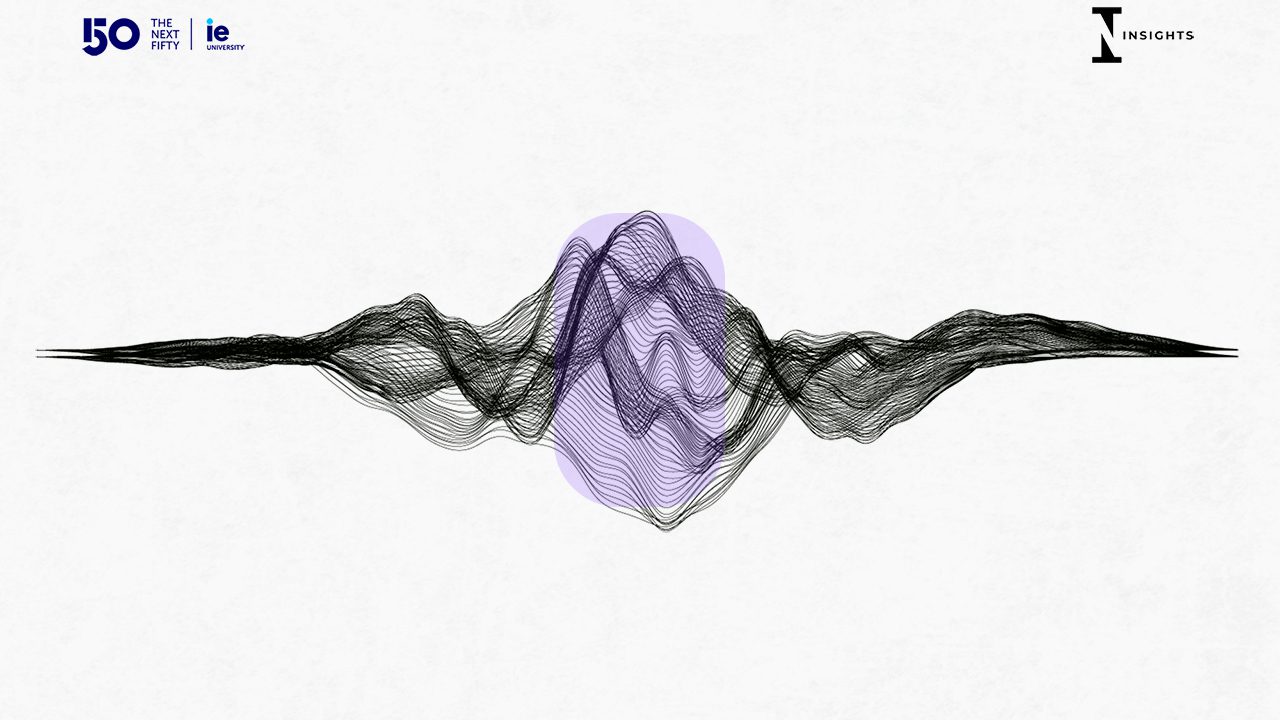
Music in the Age of Technology
Despite technological advances, the human will remain at the center of music.
Music as an art form has always been driven and furthered by innovation. From the microphone in the late 1800s to the electric guitar in the 1930s, from the popularization of analog synthesis in the 1970s to samplers in the 1980s and digital audio workstations in the 1990s, and most recently, the internet and social media over the past 20 years, all these innovations have contributed to democratizing music. Today, there is more music being recorded and released than ever before, with reports stating that 60,000 tracks are now uploaded to Spotify every day.
So, what does the future of music hold? The emergence of artificial intelligence (AI) into the public realm has been a much-discussed and divisive topic in the audio-visual world. Over the next few years, the impact of generative adversarial networks (GANs), which can create new music by analyzing existing compositions and using that data to generate entirely new pieces, will be felt. This impact will hit hardest for commercial and advertising composers the most, as it will make unique yet derivative music instantly and cheaply available at the touch of a button. In terms of music as art, it will raise discussions on copyright and plagiarism, as AIs learn through analyzing artists’ discographies and back catalogs to reproduce songs “in the style of…”. Therefore, AI is likely to cause a reactive resurgence in artists playing live instruments in live settings as the audience places more value on something that is “human.”
In addition to live instruments, I see electronic music moving towards a more multimedia arena, with a popularization of music installations that incorporate many different mediums, including sound, video, light, and virtual reality, to create a fully immersive experience. We are already seeing a prominence in “virtual reality” nightclubs and concerts, where artists and audiences congregate online to experience a live music broadcast in a virtual environment, and this will only expand.
Advances in technology will signal an even more significant increase in the volume of music being created, so there will be more reliance on “experts” or “tastemakers” to filter out what is deemed “good”, as opposed to a reliance on algorithms which cannot make value judgments. This is something that is already prominent, through mediums like Spotify playlists, and this concept will only increase in importance as technology develops.
Music, like all art, is a reflection and reaction to wider developments, good and bad, in other spheres of society. The changes in politics, economics, and social interaction will continue to influence the direction music moves in, but despite technological advances, the human will remain at the center of the art form.
© IE Insights.
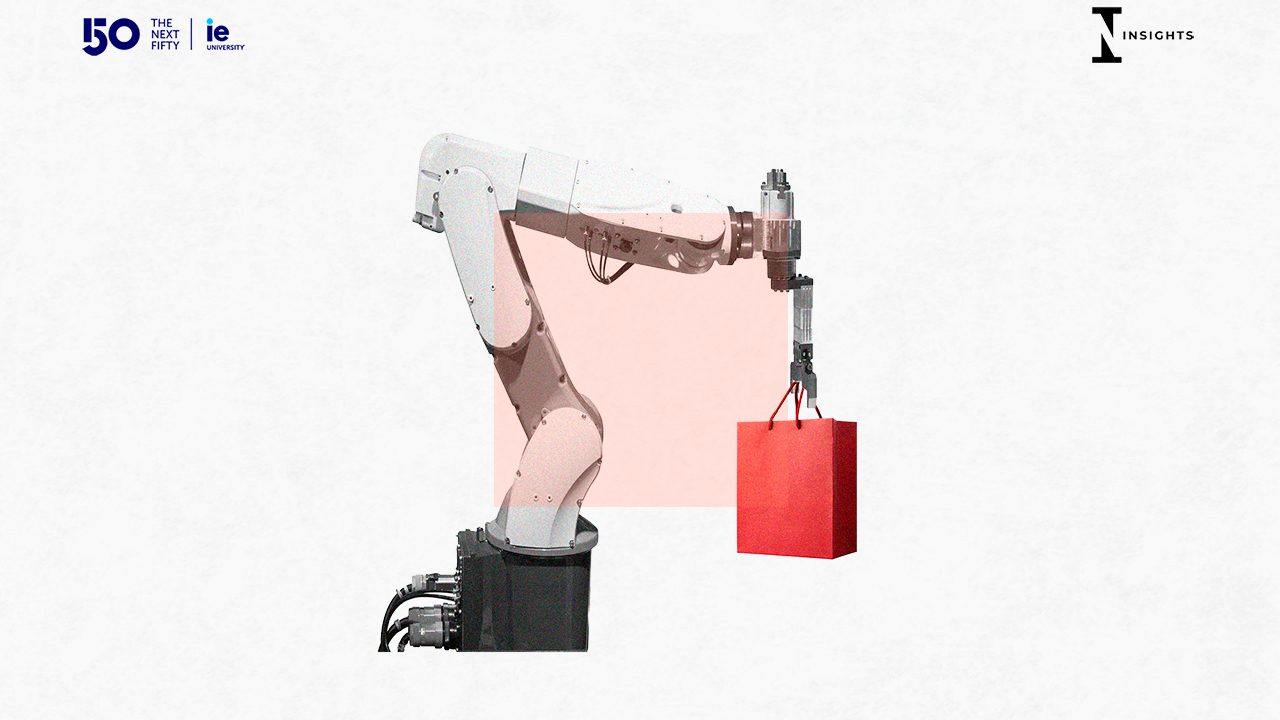
The Future of Sales Is Not Just Automation
AI will open new paths for sales with a focus on human-like communication.
Artificial intelligence is all the rage. How could it not be, when it seems to be the solution to all our problems?
When we think of AI, we commonly associate it with ChatGPT: a text interface with Google-like responses that are a bit smarter and more interesting, and almost as if they had been written by humans. However, AI is a technology that has been around for a long time and in various areas of our lives, such as voice recognition on our devices and predicting fraudulent transactions in our payment systems.
There is one area that has, so far, been largely overlooked and that is Customer Experience, often used in the context of sales, onboarding, after-sales, and customer service, flows more effectively, by enhancing customer relations and communication. These days, in a world where immediacy has taken center stage, companies have introduced automation tools in practically all their communication processes with customers. This is a valid approach, of course, but it has generated a vicious cycle of communication that lacks empathy, has a negative impact on customer relationships and damages their overall experience.
For example, faceless chatbots do not understand people’s natural language, at least not yet, and sometimes they simply respond in the best way they can, which is usually not the best. We are bombarded with contact forms that no one has time to fill out and pushed to contact call centers that do not solve problems, and instead make you wish you had never picked up the phone in the first place.
This contrasts greatly with the way people interact online, with influencers who understand that trust is essential to sales, and entails guiding their followers rather than aggressively pushing a product or service. The human factor is still essential when it comes to connecting with, yes, other humans. The success of influencers and streamers on virtually all social platforms bears this out.
AI’s ability to generate highly effective, fully automated content means that it will play an increasingly important role in the future of sales and customer experience. The only way for this to be a success is for communications to become more human-like, throughout each and every stage of the flow (prospecting, sales, post-sales, upselling.) And there is no doubt that companies will need to understand this; to treat their customers as unique individuals, making them feel like each message they receive is intended solely for them – even though the entire process was automatically generated. The bonus being that the effectiveness of this content will be analyzed and continually adapted for improved conversion rates and loyalty over time.
The reality is that, thanks to AI, the way companies communicate with customers has already changed and will continue to do so in the coming years. This is good news! More and more companies will use artificial intelligence to build new ways of business-customer communications and sales.
Those who do, will eventually take the lead.
© IE Insights.
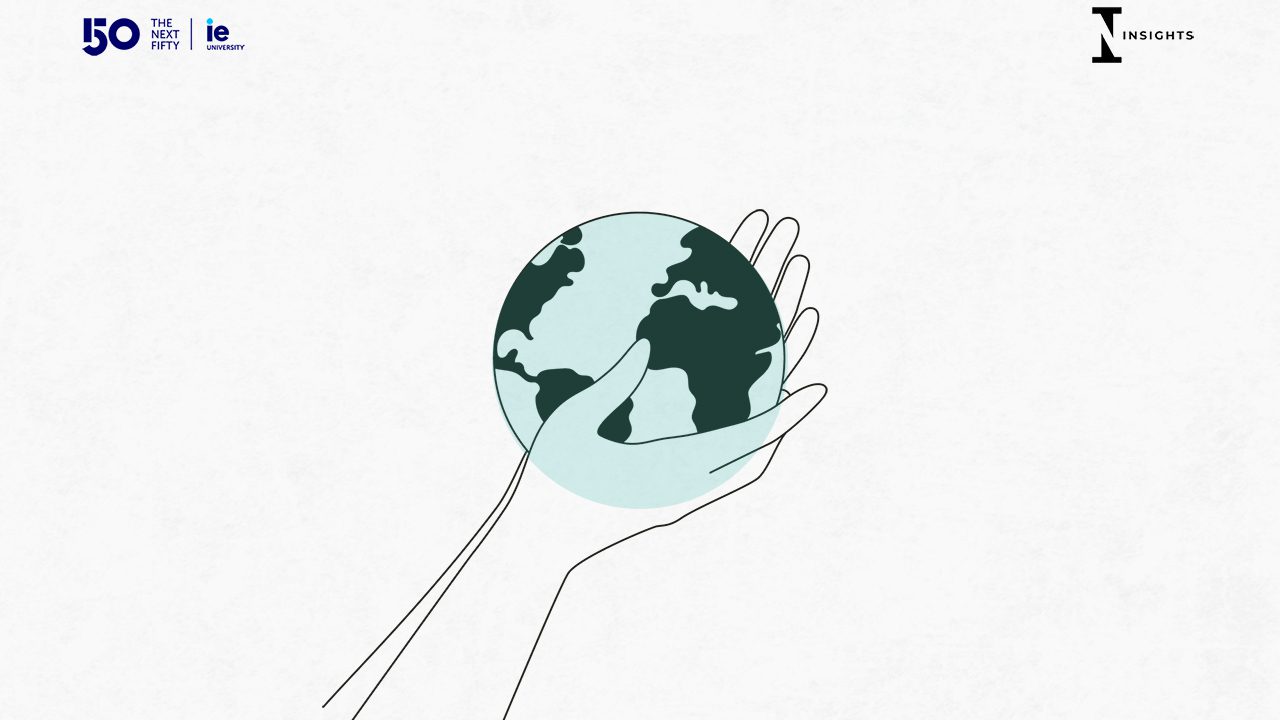
The Climate Crisis & Business Education
Business schools will educate a new generation of leaders who are dedicated to the challenges of sustainability.
Hotter temperatures. More severe storms. A warming, rising ocean. Increased drought. More health risks.
Those are the dire consequences of climate crisis, the most significant threat to the planet since the invention of the atomic bomb.
The dangers of the crisis, however, have been a wakeup call for governments, companies, and universities all over the world. And increasingly, the pursuit of sustainability careers among young professionals is skyrocketing.
The world’s business schools have responded, embedding ESG issues into their core courses, adding electives and graduate degrees in sustainability, and putting society’s biggest challenge front and center. This means that for prospective students who care deeply about the environment, there are more options than ever before to prepare for a career with positive impact.
After all, today the fastest-growing segment of the economy is directly linked to combating the climate crisis. Green jobs are exploding, and climate change may well become the defining theme for tomorrow’s business leaders. According to LinkedIn’s Global Green Skills Report 2022, green jobs grew by more than a third from 2015 to 2021, from 9.6 percent to 13.3 percent, and renewable and environmental jobs grew by a staggering 237 percent over the last five years. “The Financial Times reported that CEOs are finding it challenging to find talent that understand how businesses affect the climate and how the climate affects business,” they write. “This skills gap only looks to widen in the near future.”
Not surprisingly, American University’s master’s degree in sustainability management is the school’s fastest-growing program, with applications up 100 percent year over year. And business school deans, from Columbia Business School in New York to INSEAD in France, have made climate change a top strategic priority.
This is also true at IE Business School in Spain. This year, the Financial Times MBA Ranking put IE Business School No. 1 in the world in ESG and Net Zero Teaching and second in the world for its carbon footprint. IE is one of eight top European b-schools that have partnered together to accelerate the business response to the climate crisis. The group, Business Schools for Climate Leadership, just held its first in-person conference at IESE Business School in Barcelona.
At Stanford Graduate School of Business, MBA students are publishing a newsletter aptly named The Gigaton to quantify, in actual gigatons, the impact emerging solutions have on the climate. Their target audience? Talented young professionals looking for careers with impact.
Business schools have already moved beyond rhetoric in this field. The hope is that they continue to do so and to innovate new research, courses, and degree programs to play a critical role in training and educating a new generation of leaders who want to dedicate their lives to the opportunities and challenges our world now faces. What is certain about the future is that we will need leaders who can rise to the occasion. Business schools are uniquely situated to prepare them for that endeavor and if the schools dare take the gauntlet, our future will be the better for it.

What Is the Future of Cybersecurity?
Cybersecurity will shift from being human-dependent to being human-focused.
Nowadays, organizations and society rely on technology – and where there is technology, there are concerns about cybersecurity. The industry is currently at a crossroads. Heightened concerns over cybersecurity, coupled with an ongoing shortage of cybersecurity professionals, will drive changes to cybersecurity strategies. According to the US Bureau of Labor Statistics, the cybersecurity analyst career is expected to grow by a whopping 31% between now and 2029. This is much faster than the average of all other careers.
One of the major issues is that cybersecurity is still heavily reliant on human behavior and manual activities such as password entry, as well as human decision-making and reaction. The ‘human factor’ has been identified as the weakest link in the development of safe and secure digital environments. According to a study by IBM, human error is the main cause of 95% of cybersecurity breaches. In the long run, cybersecurity will shift from being human-dependent to being human-focused.
Emerging technologies such as quantum computing, embedded devices, biometrics, and artificial intelligence will all have a significant impact on cybersecurity.
The future of cybersecurity is undeniably artificial intelligence (AI). Humans are incapable of performing detailed and repetitive tasks. AI will aid in the automation of many cybersecurity tasks while also increasing detection, prevention, and anticipatory responses. AI Security technologies that run continuous data analytics on monitored security event data can detect new threats much faster than humans. AI will also play an important role in advising and alerting humans in real time about specific cyber risks.
Quantum computers will be able to solve problems that classical computers are incapable of solving. This will benefit cybersecurity by improving encryption systems as well as detecting complex cyber threats. The race to become the quantum and AI leader has only recently begun, and governments and corporations are making significant investments in the field. Recently, the United States Congress passed a $280 billion technology bill, with the majority of the funds going toward semiconductors, quantum computing, and artificial intelligence.
To return to the password issue, will they vanish? I am afraid not, with the digitalization boom in the last years, we have more passwords than ever before. They will not go away anytime soon, but they will change. We will have more ways to authenticate without them, as well as the ability to combine them with other biometrics data. A futuristic approach identifies human evolution as human-cyborgs, which is a promising approach for securing systems in terms of privacy and security. In the future, we will be more like cyborgs, with embedded chips and devices that will allow us to use alternative authentication mechanisms.
So, the one million dollar question: Does it means that all these new technologies will solve all cybersecurity problems? Actually no, because new cybersecurity risks will evolve as new types of cyberattacks etc. As companies and users update their cybersecurity systems, hackers also learn new ways of attacking. Furthermore, the development of the metaverse, virtual avatars, and digital twins will cause security issues with our virtual humans.
There is no 100% secure system but we can use technology to mitigate most of the common cyber risks. Cybersecurity is something that demands, without a doubt, continuous attention.
© IE Insights.
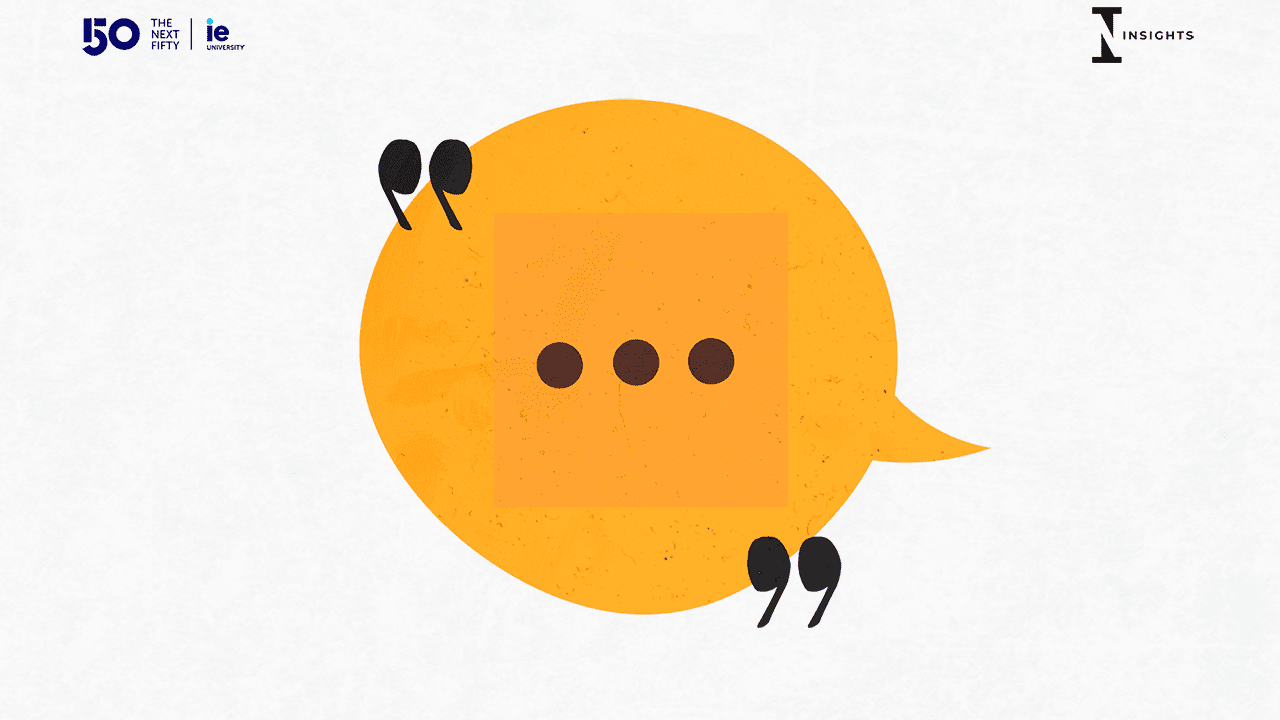
The Future of Language
Will improvements in machine translation and the spread of English lead to a monoculture of language?
You are what you speak. If you ask people around the world what groups they belong to, many will name a linguistic one. Danes, Catalans, Tibetans, Kurds, Arabs, and so on are, in large part, what they are because they speak Danish, Catalan, Tibetan, Kurdish, and Arabic. Unfortunately, our linguistic identities are often in conflict. Spain is one place where such issues are in the newspapers almost every day.
How will this change in the next 50 years? One prediction is that machine translation will soften such conflicts. Many people already use tools like Google Translate on a daily basis. Some even use the tools in which you can speak one language into your smartphone, and it will speak the translated sentence a moment later. These are bound to improve, so much so that some people think that this will replace the need to learn foreign languages. Everyone will understand everyone.
I am not so sure. For one thing, smaller languages are badly underserved by such technologies. English-to-Spanish automated translation is good; Basque-to-Icelandic is rather worse. Second, this prediction treats language as, primarily, text. But people will still want to have warm, face-to-face conversations. Imagine a first date mediated through the translation on even a miraculously improved smartphone, and you will have a sense of why a universal translator in your pocket will not remove all barriers between people.
Another prediction is that English will sweep the world, becoming everyone’s second language. In this scenario, it would become less and less associated with Britain and the United States, and instead what was once dreamed for Esperanto: the neutral language that a Pole uses to talk to a Brazilian. The value of learning English is growing literally every day, as a generation that has never learned English passes away, and one that has never lived without it grows up.
But English sweeping everything in its path would also be sad in many ways: a homogenizing of linguistic life. No one wants to live in a monoculture. So, my wish for the future of multilingualism is that regardless of whether machine translation or English becomes the standard for business and tourism, that all people—with Europeans taking the lead—learn another language besides English.
If Spaniards learn French, Germans learn Italian, Japanese speakers learn Korean, Argentines learn Portuguese, and my fellow Americans learn Spanish, then we can have the best of all worlds: an identity rooted in a native language, a useful auxiliary for practical and wide communication, and the knowledge of another language (perhaps that of one’s neighbors) to foster intimate human connections. Multilingualism is not easy, but it is certainly possible, and its benefits—for reducing conflict and for fostering understanding and empathy—are hard to overstate.
© IE Insights.
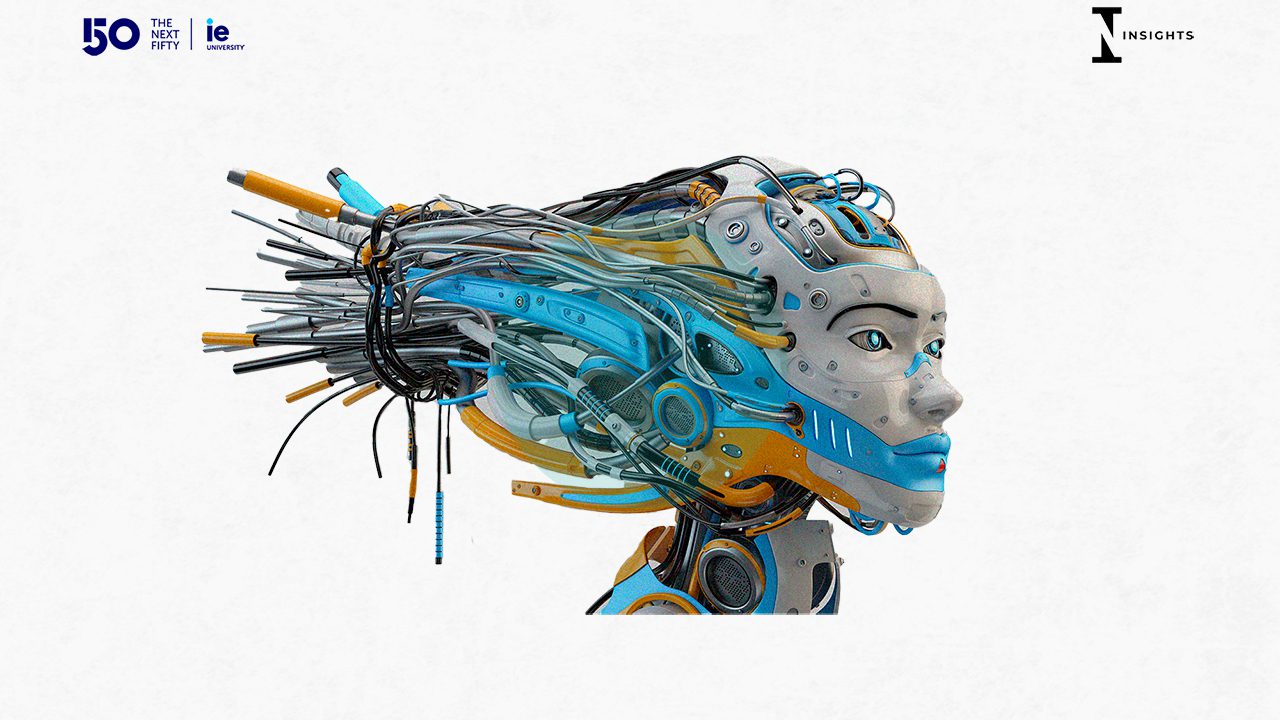
A New Era for African Women in STEM
African women can seize the opportunities provided by automation.
The world of work is undergoing a rapid transformation, driven by technological advancements and the rise of automation. As industries and job markets evolve, the future of African women in STEM is also changing. With the growth and development of the African continent depending heavily on the participation of women in STEM fields in the next decade, it is imperative that these women are prepared to adapt and embrace the opportunities that lie ahead.
One of the keys to increasing the participation of African women in automation-related industries is through significant investment in education and training. This requires providing access to quality education, vocational and technical training programs, mentoring, and networking opportunities, as well as funding and scholarships to overcome financial barriers. Encouraging and supporting research and development in STEM fields through partnerships and resources can also boost the involvement of women in these activities. Moreover, creating a supportive workplace culture that promotes diversity and inclusion through policies around flexible work arrangements, parental leave, and equal pay for equal work can attract and retain women in STEM fields.
Despite these efforts, African women face unique obstacles that hinder their full participation in automation-related industries. For instance, the lack of representation and visibility of women in STEM fields can discourage young women from pursuing these careers. Without role models and mentors, they may find it hard to see themselves as future leaders in these fields. Therefore, platforms like TechWomen and Levers in Heels are crucial in promoting representation and visibility of women in STEM fields, inspiring more young women to pursue STEM careers, and dismantling barriers that prevent them from fully participating in these industries.
African women in STEM can also play a vital role in the development of automation-related technologies tailored to the needs and realities of the African continent. This requires collaboration and partnership between governments, the private sector, and civil society, as well as significant investment in research and development. By leveraging their expertise and knowledge, African women in STEM can help create automation technologies that address the unique challenges faced by the African continent, thereby promoting its growth and development.
As we move into the next decade – and beyond – African women in STEM have a unique opportunity to thrive in the gig economy and other flexible work arrangements. As technology advances and automation continues to disrupt traditional industries and job markets, highly skilled workers who can work on a project-by-project basis will be in demand. African women in STEM who can leverage their expertise and skills in this way can benefit from the flexibility and independence that these work arrangements offer while also contributing to the growth and development of the continent.
The changing landscape of work in Africa suggests that African women in STEM must be ready to embrace change and capitalize on the prospects that await them. To establish a more fair and comprehensive future, the cooperation of governments, NGOs, the private sector, and educational institutions is essential. It is only by working together that we can guarantee that the upcoming generation of African women in STEM have the opportunity to realize their full potential and make significant contributions to the advancement and progress of the continent.
© IE Insights.
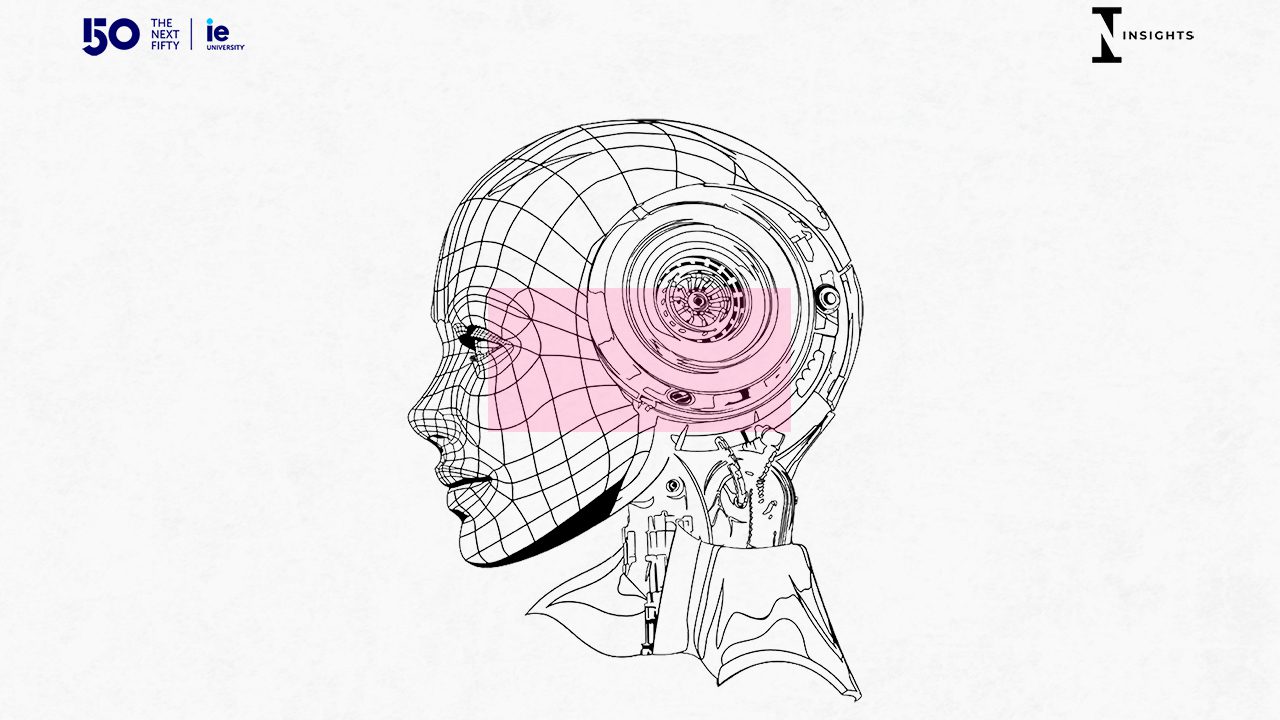
The Future of Work
Project work, competency ledgers, and augmented reality will harbor a revolution in work.
Date: Monday morning, May 15, 2050, 8:17:00 CET Name: Harper Knowles IDs: Global Citizen GC-13253131421, Global Worker GW-J33KW921DM (Psuedonym BrandSparkler) Body Status: Blood Glucose +6, Cortisol +2, Oxytocin -1,
Serotonin +3, Endorphins +5, Dopamine -3, Testosterone/Estradiol: 0 Device Inventory
- ExNR: In-skull extended neural reality chip
- BodyBot: In-bloodstream circulating nanobot
- HoloBar: Desktop holographic room projector
Professional Competency Ledger (PCL)
- Core PCL: Marketing Automation (Level 5), Brand Proliferation (Level 5),
Digital Retail Design (Level 4),
- Sales Algorithm Design (Level 3), Immersive Experience Development (Level 3), <more>
- Intra-Human PCL: Focus (A-), Multitasking (B+), Time Management (B), <more>
- Inter-Human PCL: Project-Teaming (B+), Mentoring (B), <more>
- Human-Bot PCL: Prompt Formulation (A), Algorithmic-Adaptation (A-), Feedback Provision (B), <more>
Current Workboard
- Project Nike-DE-524342, Role = Lead, Mission = Rebrand NutriFit ExNR Module
- Project IKEA-SE-953113454, Role = Support, Mission = Prelim Design for SleepPod Retail Kiosk
- Project BritAir-UK-54425, Role = Mentor, Mission = Skill Transfer to Level 1 Brand Proliferator
<more>
“Welcome to Monday, Harper, you have 45 minutes before your first meeting. I gave you 17 minutes of extra sleep to maximize your cycle, but now you need to get moving! Nothing urgent on your message radar, for once. Shall I add almonds and fruit to your morning probiotic yogurt to boost blood glucose? You’ve got a meeting with ‘you-know-who’, and we both remember last time – it didn’t go well. You were tired, low blood sugar, and emotions ran high. You said some things you wish you hadn’t…” said Syro, Harper’s intelligent personal assistant via her ExNR.
Harper stayed up later than she wanted last night watching a 2026 drama about workplace politics and intrigue. It’s hard to imagine people used to work like that. They had a job, a title, a boss, worked for a single company and spent large amounts of time staring at paper and computer screens – doing tasks that by today’s standards were boring and menial, like messing around with numbers in 2D tables called spreadsheets and sitting in long meetings arguing about things that team-bots can resolve in seconds.
***
WorkNet: The new network of project work.
The world of work has undergone a remarkable transformation over the past two decades. In Harper’s world, routine and ongoing company processes are managed largely by bots overseen by humans working in Process Management roles. Meanwhile, non-routine activities like developing new products and services, launching new commercial campaigns, and driving process improvement are carried out by people working in Project Professional roles that are facilitated via a trans-company and trans-national network of projects called WorkNET.
Competency Ledgers: The new economy of skills.
Within WorkNET, professionals like Harper win projects through a digital marketplace where their work-bots negotiate with company bots to match project requirements with their specific skills. These bot-to-bot negotiations also determine fees and other contractual terms. Skills are stored in distributed Professional Competency Ledgers that get updated as a professional gains experience. Bots efficiently handle the collection and processing of project feedback from both humans and bot team members, as well as the company as project owner. The ledgers also get updated with project outcome quality. All of this information becomes part of every professional’s competency ledger.
Augmented Reality: A world without “the office”.
In this new world of work, professionals like Harper seamlessly blend social and professional lives. When she’s not feeling well or has family obligations, she stays home and works with project teammates (human and bots) in rich digital workspaces using her ExNR system. On most days she goes to a few of the thousands of Work Hubs in her city where she rents a 3 square meter isolation booth. There she can work independently using her ExNR or alongside dispersed colleagues working on the same project. At her favorite Work Hubs, she plays sports, eats, and relaxes with others. Because WorkNET not only considers an individual’s Competency Ledger but also the combined ledgers of professionals who have formed Guilds, Harper’s hub-based professional relationships allow her to win better projects and work with the same people with some frequency, enhancing her professional relations and social friendships.
***
“Harper, you’re tired, I can tell… your BodyBot doesn’t lie… how about a break? You haven’t spoken with your friend Kim in a while. I just communicated with her IPA and Kim is available. Would you like me to bring her up on the HoloBar, send her some D-coins, and invite her to join you for a quick drink?”
© IE Insights.

What’s Ahead for Entrepreneurship and Innovation
Community, data, and AI will shape the companies of the future.
The future of entrepreneurship and innovation is bright. Early-stage startups have the chance to capitalize on the trends shaping the world and create successful businesses and community. Some of the most important trends that are shaping the future of entrepreneurship and innovation include:
The rise of artificial intelligence. AI is rapidly becoming more sophisticated and is already being used to create new products and services. For example, AI is being used to develop self-driving cars, virtual assistants, and medical diagnostic tools. Companies like OpenAI, DeepMind, and Waymo are at the forefront of AI research and development.
The increasing importance of data. Data is becoming increasingly important in the world of business. Businesses are using data to make better decisions, develop new products and services, and target their marketing campaigns. Companies like Databricks, Tableau, and Domo are providing businesses with the tools and infrastructure they need to make the most of their data.
The rise of community-driven companies. They are businesses built on solid relationships with their customers and partners. They often have a clear mission and purpose. Community-driven companies include Canva (whose mission is empowering the design community), Airbnb (whose mission is to create a world where anyone can belong anywhere), and Notion (whose mission is to make it possible for everyone to shape the tools that shape their lives in community).
These are just some of the trends that are shaping the future of entrepreneurship and innovation.
© IE Insights.
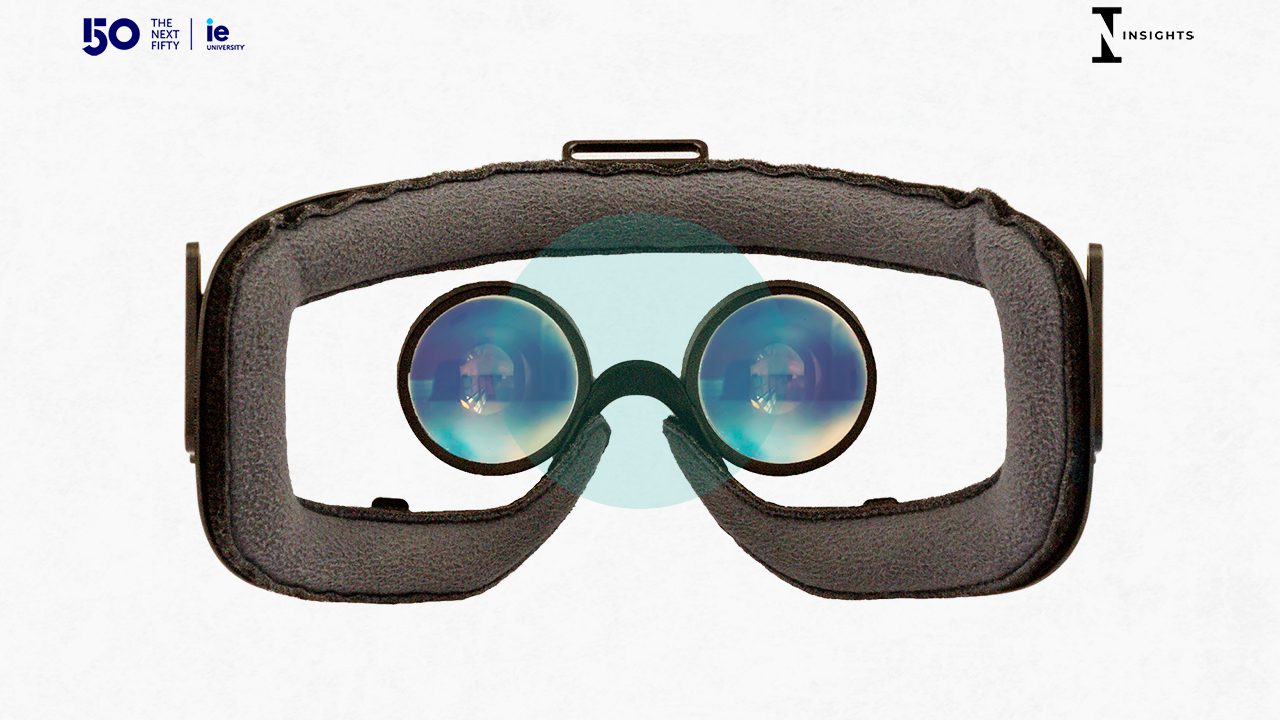
The Future of Trend Forecasting
From futures-as-a-service to futures-as-a-modus operandi.
The forecasting industry as we know it today in the Western world has roots in fashion and the military, with some suggesting fashion forecasting began in France during the reign of Louis XIV. It was in Europe in the 1850s, however, with the rise of capitalism and industrialization, that product-makers slowly began to transform their businesses into brands in order to stand out from the competition and communicate their existence and relevance to potential customers. With the sole goal of making profit, and then increasing that profit incrementally, it wasn’t enough to keep doing what they had always been doing. Businesses needed to appeal to consumers at multiple levels, and the products that stood out were those that brought something new with them. This awe with newness and innovation from both the consumer and business sides drove the push to find and offer products, services and behaviors that were inexistent or emergent in that market.
Of course, after World War II and globalization, forecasting started to spread far beyond fashion and the military. However, professional trend forecasting companies only began their official services in the 1970s and 1980s, which makes it a relatively recent industry. By mapping out the most innovative brand and independent initiatives, along with emerging technologies, forecasters were then able to identify the main directions a chosen field was moving in, and examined these findings with data projections, primary qualitative work and intuition. These pieces of analyses then served as the basis for macro-level strategic business recommendations.
Fast-forward to 2023, the industry is still not in complete consensus about terminology (Trend forecasting? Futurology? Futurism? Foresight?). Some differentiate the terms by relating it to their particular approach: ‘futurism’ is often related to practices that rely more on technology-driven innovation, ‘trend forecasting’ has largely become associated with the fashion industry, social media and more near-future trends, ‘foresight’ is usually associated with the academic world, and so on. There are many disagreements on what the industry and profession should be called, but regardless of name and nuances in how they approach futures, these professionals are strategic thinkers that use research as the tool for garnering evidence that backs up – and leads towards – effective brand strategy that culturally connects with the current and upcoming Zeitgeist.
So far, these professionals have been working mostly in qualitative research and cultural insights consultancies. As external consultants, they are able to have an unbiased view of the client’s challenge, a broad spectrum of innovations from many industries to pull from, and the blue-sky thinking to creatively conceive future goals and how to get there.
Looking towards the future, companies and brands will have to incorporate futures thinkers and makers into their staff. Futures literacy will become one of the most important soft skills for professionals in any area. It will only be through teaching future literacy to people in HR, IT, customer service, accounting, management, legal, operations, purchasing/sourcing, etc., that the company as a whole will be able to create and conceive long-term vision of its business, and to act on it. Foresight must move beyond marketing and R&D in order to give people intelligence autonomy, informed decision-making, and tools to take risks and transform the future.
© IE Insights.

What Is the Future of Democracy?
What will effective governance look like in the 21st century?
Political systems can have three types of legitimacy: input, throughput and output legitimacy. Input legitimacy is dependent on the ability of citizens to participate in political processes and to have ownership over the outcomes. Throughput legitimacy is built on the transparency and efficiency of the policymaking process. Output legitimacy, in turn, depends on the specific results, be they economic or social, that a system is capable of delivering. They are all important, but I would argue that a lot of our public debate is today focused on output legitimacy.
Are democracies capable of delivering long-term economic growth or are they beholden to short-term thinking because of the nature of their electoral cycles? Can democratic and open societies deal with health crises, such as the Covid-19 pandemic, while at the same time respecting their core values and principles? Isn’t it the case that authoritarian states are better at deploying emerging technologies such as AI for their benefit and that of their citizens? These are questions that citizens around the world are asking themselves.
The case of China is particularly relevant in this debate. China’s rise is an extraordinary feat. And one that is built on the back of a non-democratic political system. One could argue that the Chinese system lacks almost all input and throughput legitimacy. It is entirely reliant on output legitimacy. The system is good because it produces certain levels of social stability and economic growth. So, the fact that it might be attractive to others, or to put it differently, the fact that China’s rise has truly global systemic implications is a consequence of the fact that it shifts the legitimacy debate and builds an alternative to the predominant view that democracies are the only system capable of truly tending to peoples’ needs.
All of the above points to a fundamental issue: the future of democracy globally will to a large extent be dependent on its ability to continue to deliver results. And whether it will or not will itself be a product of the capacity of democracies to use emerging technologies in an effective way and without renouncing their core values. Effective governance in the 21st century will depend on having access to GovTech tools. These can provide transparency and fight corruption. Or they can help make public services more widely accessible or less costly. Additionally, emerging technologies can help underpin democratic processes, as well as protect our public debate space by fighting disinformation. In essence, technology, when well governed can help foster democracy.
© IE Insights.

The Future of Health, Well-being and Human Potential
Taking responsibility for the future of health and well-being is imperative in ensuring a fairer and happier society.
Everything is changing. The pandemic has led to a boom in the use of technology. It has also profoundly changed the way we study, the way we work, the way we do business, the way we shop, and also, of course, the way we relate to one another. Social networks have gained a level of influence, for better or for worse, that never ceases to amaze us. In addition, there is growing concern about how society is becoming increasingly polarized, and how the middle class in many countries is gradually disappearing. Migration and climate change are high on the agenda and the word “sustainable” – with all that it implies – is gaining traction in our businesses, our cities, and in the world at large. The current geopolitical tensions worry us all, because we cannot see a way out of the conflicts that cause so much suffering. So, the question is: What can we do to shape the future?
We must find a way to look ahead with serenity, hope, and optimism. It is easy to play the victim who does nothing but complain or ends up feeling overwhelmed by the sheer scale of the issues. Today, we must tap into three of our natural capacities: creativity, entrepreneurship, and teamwork. Human beings are social creatures, and therefore, the solution to the major challenges ahead is not in the “you” or the “I”, but in the “we”, in collaborative intelligence. You might be wondering what this has to do with the future of health, well-being, and human potential? I would say everything, and I would like to explain why.
Everything in human nature is connected and so, in our body, mind, and spirit, we will find a way to unlock our true potential. Companies today are surprised and bewildered by the alarmingly high levels of burnout among workers, regardless of their status. The increase of anxiety and depression in society is daunting, and the degree of uncertainty experienced by younger people is creating major distress. Many of them are perhaps wondering where their lives are going, whether they should be focused on earning money, or on being happy.
The future of health, well-being, and human potential will be what we want it to be. And this decision will affect every single part of our lives. Universities, companies, and societies must either revolve around people, their health and well-being, or they will not generate that explosion of potential that needs to emerge for our desired and extraordinary outcomes. These results cannot be achieved if we see people as vehicles for profit rather than as human beings who want to give their all. The best is not what they have, but who they are. So, if we do not all take a more active role, and work together to improve our health, our well-being, and live up to our full potential, we will not be able to tackle the challenges of the future.
This is why we need to take responsibility, today. We need to take care of our bodies by being mindful of what we eat, of the exercise we do, and the hours we rest. We need to focus our minds and concentrate on the here and now, and we need to embrace compassion and forgiveness. Basically, we need to take responsibility for our well-being because our tomorrow depends on it.
Albert Einstein said: “The real problem is in the hearts of men” not in the atomic bomb. If we are well, the world will be well. Einstein himself reminded us that the separation between the inner and the outer world was merely an optical delusion of our consciousness. So, let us all learn to look after ourselves and look after others. If we take this seriously, our future will be much healthier, more harmonious, more balanced, and with a fairer and happier society.
© IE Insights.
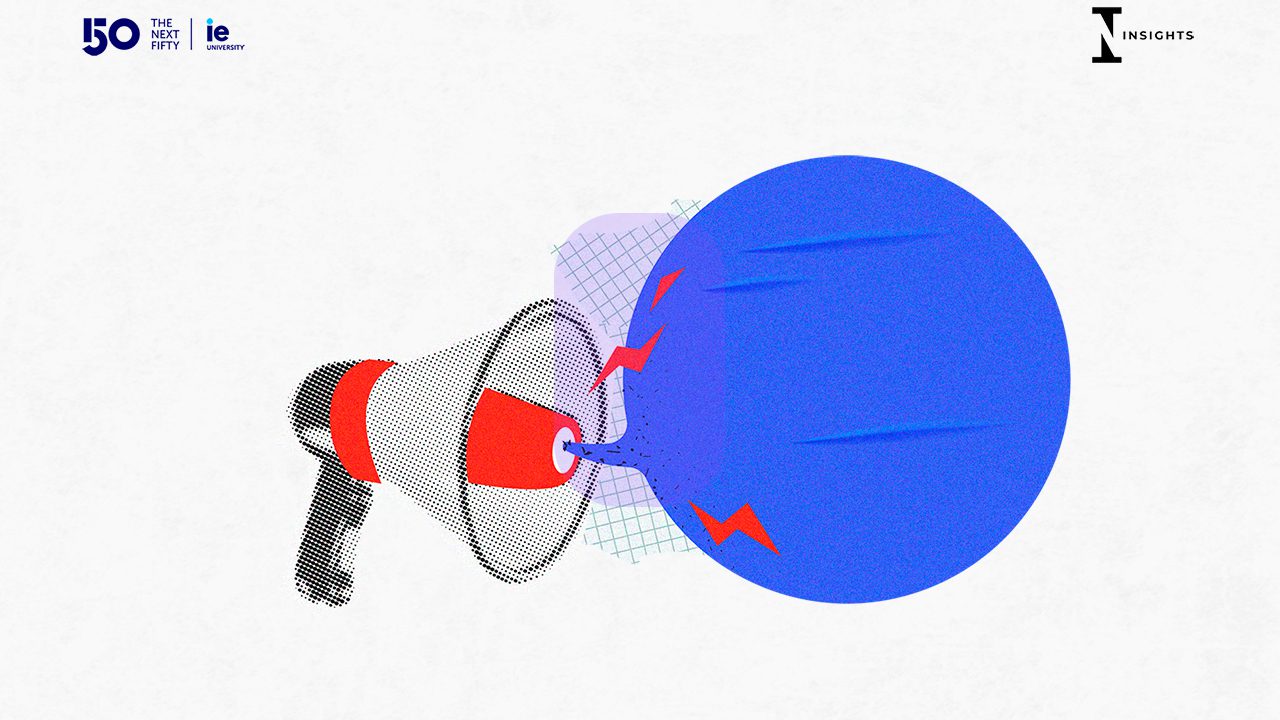
The Future of Advertising
Purpose-driven marketing and customer-centricity will drive the brands of the future.
There are many ongoing discussions about the future of advertising and communication, as understood in its broadest sense. What image do brands and their products project abroad, and how do they reach and communicate with their target audiences?
The word “advertising” derives from “advertere,” the Latin word for “to turn the attention.” These days, however, the fragmentation of audiences, constant distraction, the emergence of connected devices, and technology in general, has radically changed the way we communicate with one another and the world at large. So, how do you capture the attention (the right one) in today’s world? Which trends will change the shape of communications?
All experts agree that artificial intelligence will play a much larger role in the coming years (or months!). Machine learning will bring efficiency to brand communication and performance through the management of data in a way that will allow greater personalization – and this personalization is key for brands if they are to be relevant to consumers. Plain and simple, nobody wants to be bombarded by advertising.
Yet, all legitimate concerns about privacy aside, we all want to feel like we are the most important person for a particular brand or product. (Funny enough, this is much the way traditional business used to operate, really getting to know their clients and treating them in a way that made them feel special.)
Today, brands must be socially relevant and value aligned, and their messages and products must reflect this in an authentic way. This means no more social or greenwashing, no more vague promises or “Peace and love” phrases. It’s essential that companies and their brands walk the talk of their advertising, and this will only become more fundamental as we move into the future.
This is because each new generation is increasingly more demanding in regard to a brand’s authenticity and coherence in their communications, commercial or not. Purpose-driven marketing has emerged as a powerful tool for brands, and just as ESG objectives are now part of growth and investment for companies, their messages must reflect in a measurable way how they are creating a better world.
Yes, technology has become an essential asset for brands (if they make good use of it), but the truth is that – even in tomorrow’s world of AI and augmented reality – content will always be key. To attract, engage, and retain customers, AI is not enough. Perhaps even more so in our technologically dependent future, brands must continue to find new ways to provide consistent, valuable, relevant content (i.e., not just messaging) and make it really “edible” and personalized for consumers. Because what won’t change in the future is the very human desire to feel special.
© IE Insights.
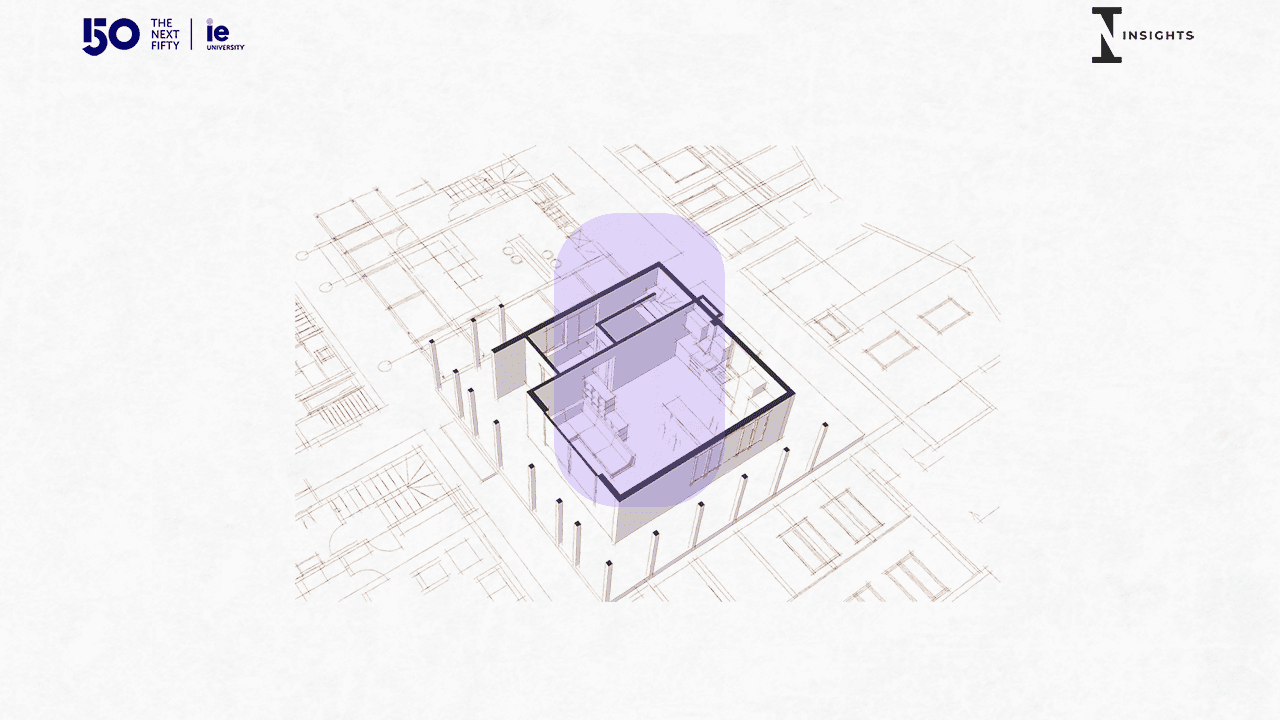
What Are the Future Game Changers in Architecture?
Renewable materials will make a return to the center of future architecture.
Architecture is that field that helps create our built environment and must respond to multiple factors ranging from users’ needs, legal constraints, budgets, culture, context, and increasingly global matters such as climate change and the proper use of our finite resources. Traditional, renewable, and recyclable materials used in new and creative ways are paths to reducing the carbon footprint and conserving resources while still making our built environment the most functional and beautiful that it can be.
With global warming advancing at an alarming rate, we must eliminate all CO2 emissions from the built environment if we hope to meet the climate target to limit global warming to 1.5 degrees Celsius, compared to pre-industrial levels.
It is estimated that buildings account for about 40% of annual CO2 emissions. This comes mostly from the operations of buildings (where siting, design, and insulation play a role) but a significant part also comes from the fabrication and transport of materials and the construction (and waste generated) in the building processes.
Wood, a renewable resource has always been used in construction, yet it is sometimes popularly considered weak or even dangerous. Today, we see that wood can be safely used for building structures as well as finishes.
In Milwaukee, in the U.S., an 86.6-meter tower with the entire structure above the concrete base and stair shafts is made from wood (cross-laminated timber and glulam). In Europe, a mixed-used building for hotel, offices, and residences rises just over 85 meters and is located about two hours from Oslo, Norway. Of course, there are many lower buildings throughout the world using wood for structures, facades, and finishes.
Other European initiatives include the Build-in-Wood program, a European-funded Horizon 2020 project to drastically increase the proportion of timber construction. The city of Paris has introduced a low-carbon mandate that requires all constructions for the 2024 Summer Olympics of eight floors or taller must be constructed of timber.
Wood is but one traditional, renewable material to be considered for our buildings of the future. Along with using wood, we need more research about new ways to manage forests and responsible processes to design and manufacture building components. Policies and ordinances need to adapt and permit this material as an accepted, safe one for buildings of all sorts. Rammed earth offers other possibilities as a building material, especially in certain areas where construction may be a vehicle for training and jobs as well as buildings. And finally, keep your eye on mushrooms and other types of vegetation for sustainable structures. In 2019 an arched structure, four meters high, of mycelium was presented at Milan Design Week, and this gives us a taste of things to come!
© IE Insights.
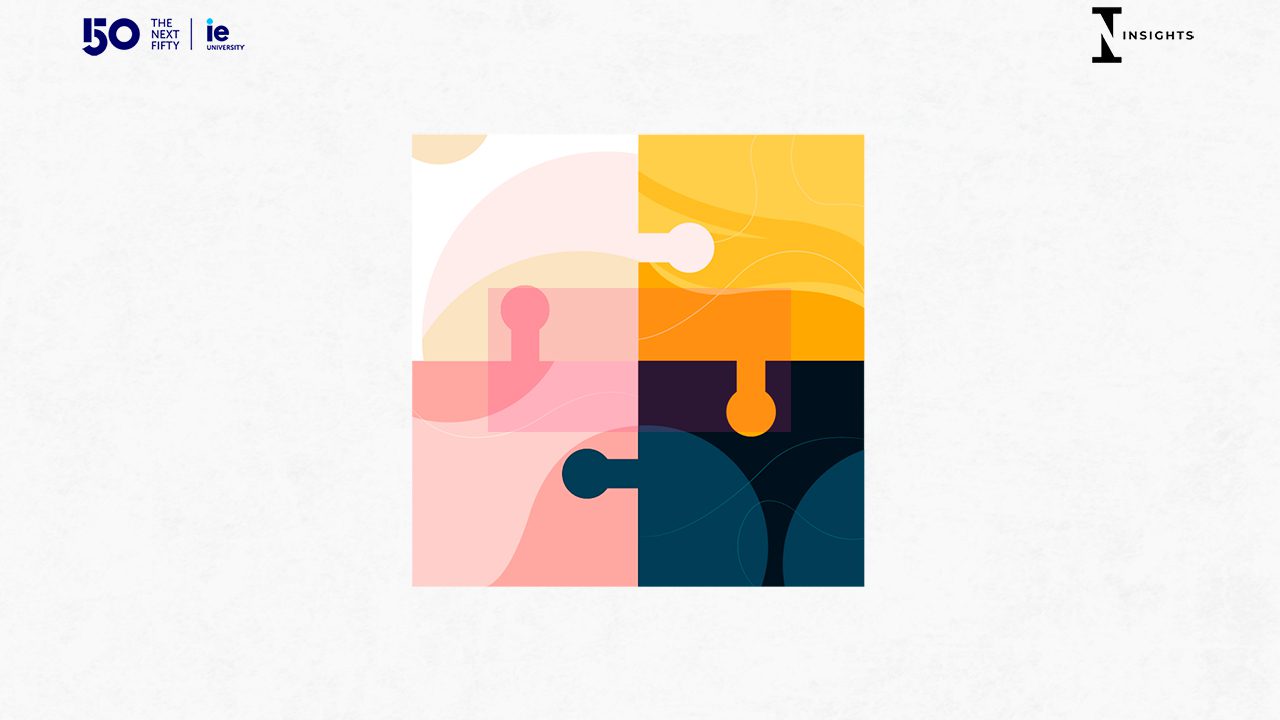
Redefining the Investor
Replacing the conventional stakeholder categories with an explicit analysis of wagers can revolutionize corporate governance.
In a recent op-ed, my colleague and I pointed out that the corporation’s board of directors owes its fiduciary duty to the corporation, not the shareholders.
In a wholesale rejection of our argument, a financial economist responded that modern theories of corporate finance make no distinction between the corporation and its shareholders.
Yes, financial economists often think of shareholders as if they were the principal and the board as if it were the agent in a principal-agent relationship. Here is the problem, though: The fact is that the corporation is a separate legal entity owned by no-one and the board is not an agent of the shareholders but a fiduciary of the corporation.
In her 2012 book The Shareholder Value Myth, Cornell University legal scholar Lynn Stout noted that the shareholder-primacy premise may persist simply because it provides “a simple, easy-to-understand, sound-bite description of what corporations are and what they are supposed to do.” And this is precisely what as-if thinking provides us: A way to think of a complex issue as if it were something simpler.
Can complex governance decisions be guided by simple premises? They can, but probably shouldn’t.
An idea for the future? Let us replace the emotional comfort of simple rules with an analytical mindset that takes the context seriously. Most importantly, boards of directors should broaden their view of what it means to invest in an organization. Here are some ideas that might be useful:
- Acknowledge that the foundational organizational problem that corporations face is how to secure and maintain the contributions of all those who create value in the organization.
- Acknowledge that some of those who contribute are more vulnerable in that they are asked to put more at stake than others.
- Ensure that the corporate governance system is designed in a way that protects the most vulnerable.
Who are the most vulnerable? Conventional wisdom suggests that because shareholders are the last in line to receive economic benefits from the firm, they are also the most vulnerable. Indeed, firms cannot pay dividends to shareholders unless they have paid all their invoices, salaries, taxes, interests, and other mandatory obligations.
It is high time we put the conventional wisdom to pasture because in today’s organizations, shareholders are not the only vulnerable constituency that merits the board’s attention. Imagine a technical expert who joins a high-tech firm to further develop its highly strategic technological competencies and patents. My key message is that just like the firm’s shareholders, this person is placing a wager on the future of the firm, only the currency of their wager is different than the shareholders’ wager.
Of course, there are also employees who provide the firm with generic skills they could in principle offer to any other organization; in fact, this is the essence of the word general in the title General Manager.
I invite you to replace the conventional stakeholder categories (shareholders, employees, suppliers, customers, etc.) with an explicit analysis of wagers. Then ensure that those who place the highest wagers are prioritized in governance decisions.
I predict that as boards view stakeholders through the lens of wagers, conventional categories fade into the background. Questions such as “Are shareholders more important than employees?” lose their meaning. Instead, questions such as “Which employee groups should receive special attention in governance decisions?” and “Which shareholder groups are more vulnerable than others?” gain traction.
This is not just about the future of corporate governance, there are much broader issues at stake. For example, for almost two decades, policymakers in the EU have lamented the low levels of innovation in the region. The problem is often portrayed as an underinvestment issue, effectively suggesting that the problem arises from insufficient investments in equity by shareholders. I am convinced that we could make much headway by embracing the idea that to be innovative, firms must be able to attract investments that extend beyond those made by shareholders.
Consider this: What is ultimately more challenging, raising equity financing or attracting technical experts to join a risky startup that involves highly organization-specific skills and technologies?
These are the kinds of questions that boards of directors, as fiduciaries of the corporation, should be compelled to ask.
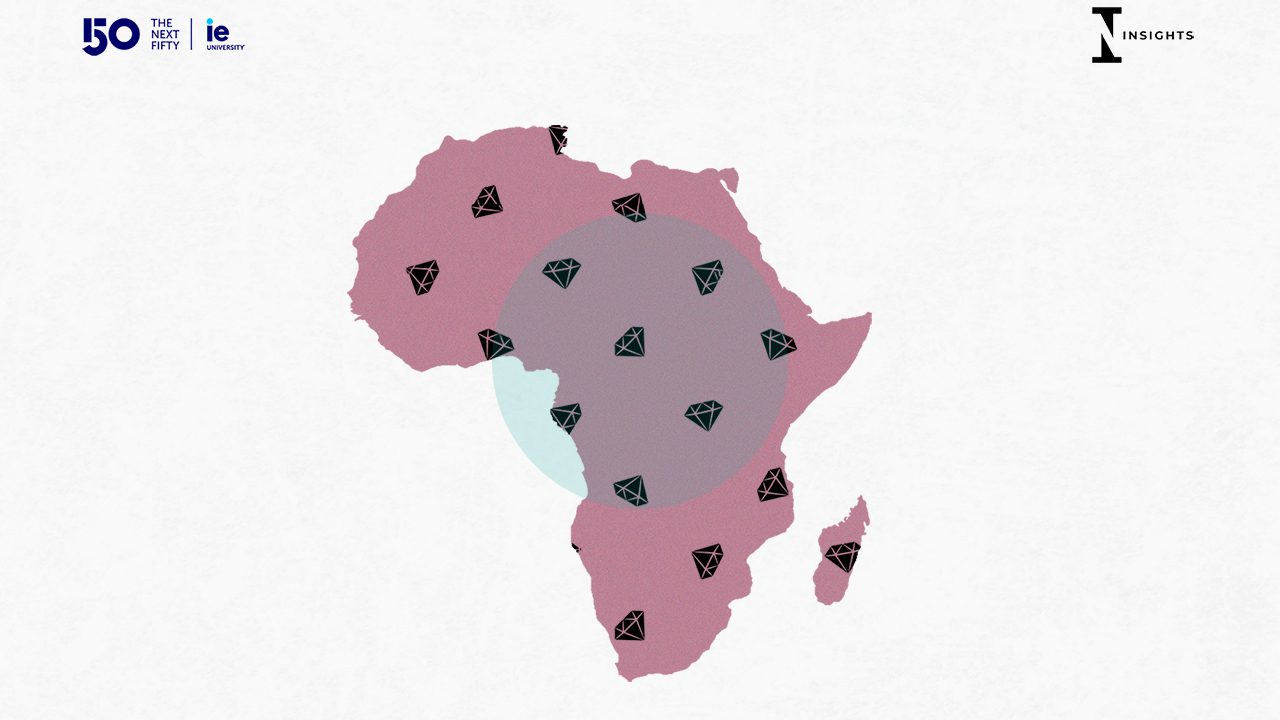
Where Is Africa Headed?
Africa is shining like a diamond and nurturing its young talent will bring the continent into its next phase.
In an ode to her beloved, Rihanna, the priestess of song, quips “we’re beautiful like diamonds in the sky.” With its youthful population, energy, and optimism, so too is the African continent shining “bright like a diamond.”
The analogy of a diamond goes further: diamonds are multi-faceted, reflecting light in many directions. I don’t think there is a better way to appreciate the African continent than as a diamond: culturally rich, complex, multi-national, multi-lingual, with elaborate institutions and forms of governance and a shape, that however the light hits it, can go in many directions.
Talent development is one example. The current median age of the population in Nigeria is less than 18 years old. In Lagos, the youthful energy, reflected in the creative sectors and in entrepreneurship, is unparalleled. However, the largest number of out-of-school children in the world is also in Nigeria, and the impact, in terms of inequality and the scarcity of technical skills, is deeply felt. The latent potential, unmatched by adequate investment in that potential can go in multiple directions.
One direction is innovation in skills development, led by technology and the drive of young people to create opportunities. Thanks to platforms like Coursera and EdX, young professionals are in a much better position to take advantage of learning opportunities that might otherwise be inaccessible. Even within the context of my own team, online learning platforms have proven to be essential in terms of making talent development affordable for emerging and resource-constrained organizations. For example, after co-creating a capacity framework and selecting relevant online programs to build their talent, my colleagues have found they are often eligible for scholarships to formally register for prestigious online university courses. The low set-up costs of talent pipeline development are great news for Africa’s young organizations and this points to a future of promising business development and opportunity.
Innovation in the design and delivery of education is widespread. Gaps in traditional educational services in Nigeria have facilitated the development of novel programs driven by the private sector, and this is very likely to continue. Already, this is particularly evident in the tech sector where companies like Andela pair skills development with industry placement but can also be found in areas such as entrepreneurship training, which is most notable for its diversity of design and delivery models. These changes are significant for the future and should be watched closely: we have a lot to learn from the wide array of education models that are now being deployed. The way they accelerate skills and talent development in Africa helps us rethink how to reshape education, and thus the future, not just on the continent but globally.
Africa as a laboratory for innovation is one direction that the metaphorical light may reflect. Another direction is less optimistic. Inequality in many African countries is both high and persistent. Stories of innovation and entrepreneurship are more likely to emerge from cities and regional centers, but even within urban areas, there is low trust in institutions and poor co-relation between academic and professional achievement. This has led to an exodus of educated professionals, known in Nigeria as japa. If Africa continues along this path, the future does not seem as bright.
But here Rihanna’s ballad holds another lesson: shining “bright like a diamond” depends upon the strength and support of relationships. A concerted effort to nurture constructive relationships will develop meaningful opportunities for young talent and that talent is what will carry Africa into its next phase. Likewise recognizing and addressing deep structural challenges that constrain how young people are able to access and capitalize on educational opportunity will make all the difference in how the light is reflected.
© IE Insights.
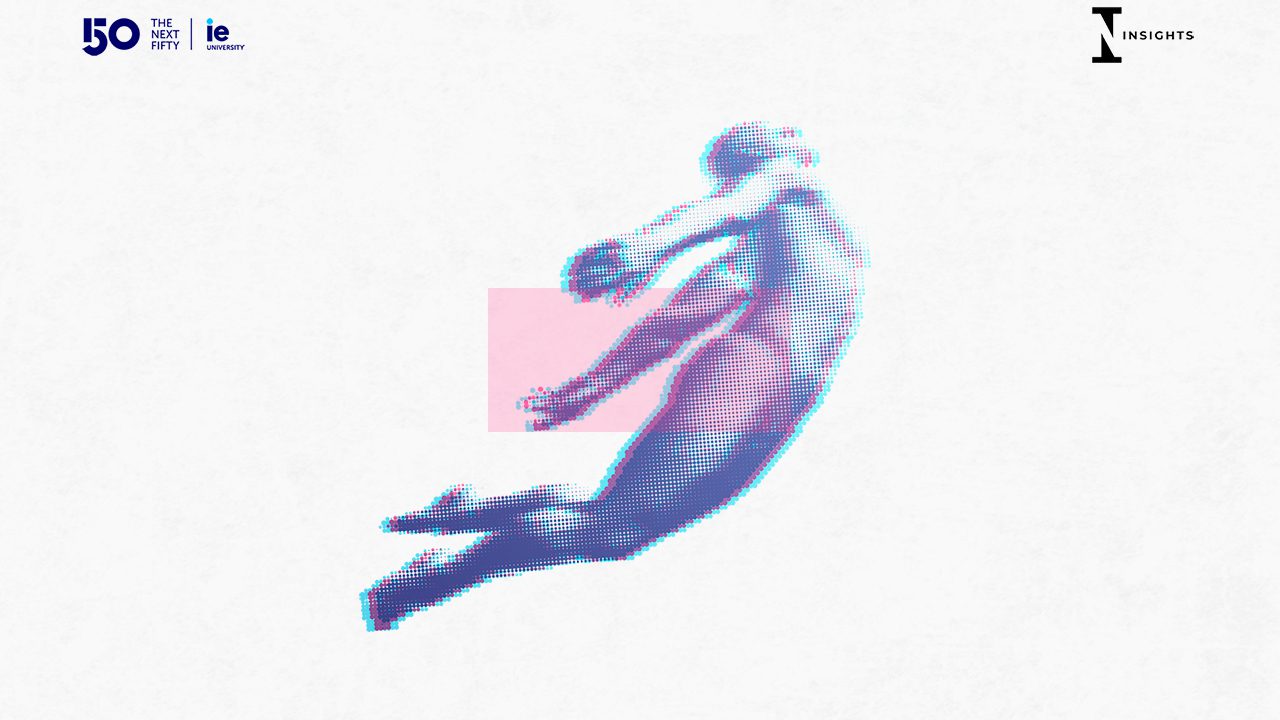
A Liberated Future in Africa
Four revolutions will nurture a liberated future in Africa.
Since the dawn of the 20th century, humanity has been sounding the alarm on the profound impact of our actions on climate and the environment. It has become increasingly clear that the escalating consequences of climate change are mere symptoms of a system deeply rooted in exploitation. Despite the efforts of multilateral organizations, governments, businesses, and civil society, breaking free from this paradigm has proven to be a formidable challenge.
Nowhere is this struggle more evident than in the intricate web of issues facing regions worldwide, particularly the African continent, still burdened by the legacy of exploitative colonial practices. However, amidst these trials lie the seeds of a revolutionary transformation. With Africa’s vast expanse of uncultivated arable land accounting for a staggering 65% of the global total, and an estimated 42% of the world’s youth set to reside in Africa by 2030, the future undeniably belongs to this continent.
Yet, realizing this future will not occur spontaneously, it demands the unwavering pursuit of four pivotal revolutions that pave the path towards global equity and a thriving biosphere.
Liberating from the Grasp of Past Liberators
The leaders of African decolonial movements have yet to truly deliver a just and equitable future. Revolutionary ambition has been replaced by political and financial ambition, reinforcing the exploitative model their fellow people fought against. The challenge of this generation is to reimagine and rebuild a political framework that restores African civilizations, prioritizing an ethos of relational wellbeing.
Building a Business Landscape of the Future
A successful political paradigm shift must be paired with a business landscape geared towards society-building, not solely wealth accumulation. This is increasingly important when considering the youthfulness of the population amidst a landscape of rapid technological advancement. Liberating the future will require more than facilities, infrastructure, and energy availability. It is about creating a self-interrogating business sector that embraces regenerative models to equitably meet the needs of current and future generations.
Embracing Circularity and Sustainability
Addressing material needs, however, is not without its complexities. Equitably meeting the needs of current and future generations requires a community-centered approach to ensure that Africa, its people, and its resources are best positioned to serve humanity. This calls for an investment in research closely tied to addressing societal challenges. It goes beyond circularity in the movement of materials in society; it requires a circularity of knowledge exchange where governments, businesses, and communities learn through open communication and collaboration channels.
Moving from Globalization to Global Cooperation
The final revolution requires rejecting neo-colonial economic and political relationships favoring collaboration between nations that respect autonomy and sovereignty. Increased globalization has reinforced the exploitation of African natural and human resources. A shift to global cooperation requires mutuality to pursue common goals and address global challenges, emphasizing shared responsibilities and goals. Mutuality necessitates more robust local governance and agency of all actors, making them less vulnerable to ecological and socio-economic abuse and destabilization.
These four revolutions are profoundly complex and interdependent. By nurturing a liberated future in Africa, we can build a foundation for global systemic transformation – reimagining civilization from the world’s first civilization.
© IE Insights.
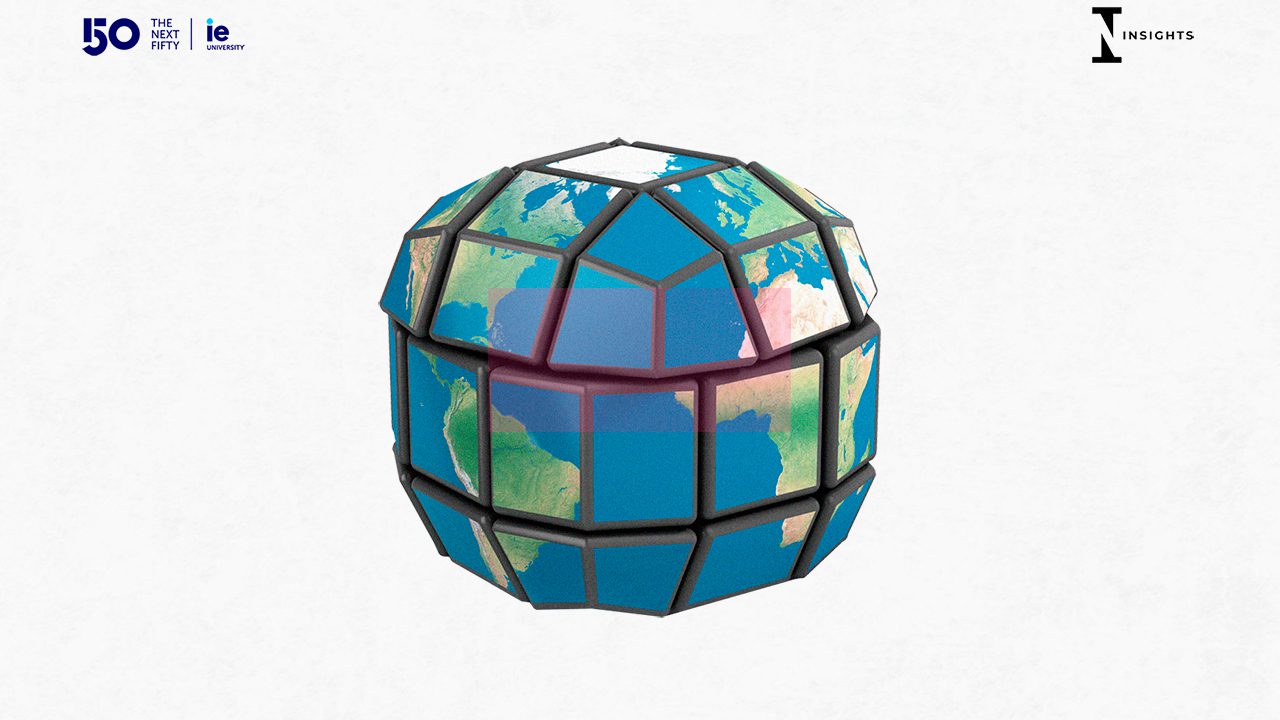
Our Multipolar Future
Prosperity will spread across the world and a truly multipolar global landscape will emerge.
Over the next 10 years, the reigning oligarchs of the global order – the United States and its allies in Europe – are going to have to make their peace with a relative decline in stature and clout. But this decline has a corollary that is worth celebrating from a global perspective: the rise of other parts of the world that have long been deprived and marginalized.
From Asia to South America, the nations of the so-called Global South have begun to climb the pot-holed path to greater wealth and clout, a process that will be accelerated in the near-mid future. The great “divergence,” whereby the living standards of a few countries in the West pulled ahead of most others following the Industrial Revolution, will be replaced by a “convergence,” as the rest of the world catches up with the developed world. Put simply, prosperity will spread across the globe, and at an accelerating pace, although from the point of view of those at the top of the current world order, it will be perceived as a loss, a “crisis.”
Demographics is one of the reasons for this shift. Take for instance, Brazil. With a 214 million-strong population, it has more than three times as many people as France. But Brazil itself is a population pygmy when compared to India, a behemoth that accounts for almost 18% of people on Earth.
As disparate and lacking in coherence as the diverse countries of the developing world can seem, they are where the world’s economic dynamism is moving to. Morgan Stanley estimates that India’s GDP is likely to more than double from current levels by 2031, which would make it the world’s third-largest economy. In a long-term economic forecast covering 65 economies, Tokyo-based think tank Japan Center for Economic Research has predicted that China and India will account for 35% of the world’s GDP in 2060, nearing the U.S. and European nations’ combined share.
We are going to see the emergence of a truly multipolar global landscape: not only a contestation of different political centers of power, but also of ideas and values. Only 30 years after Francis Fukuyama proclaimed the “End of History” we are entering an epoch where any certainties that were considered settled – from democracy to economic liberalism and secularism – will be opened to dispute. “Like-mindedness” is going to be a strategic luxury rather than a taken-for-granted fact. And terms like the “civilized world,” which make universalist claims but in fact refer to the rich countries of the West, will be relegated to the dustbin of history.
© IE Insights.
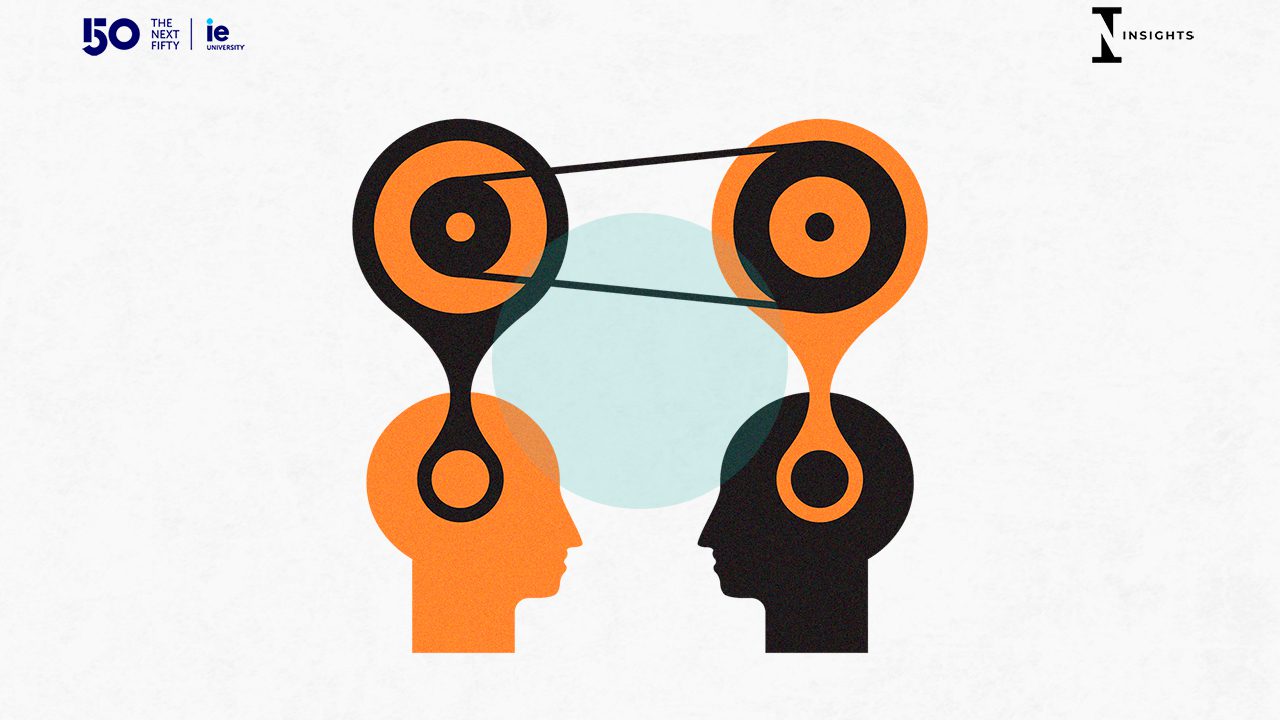
The Future of Mentoring is the Future of Management
Mentoring will help organizations be "more human" in the age of tehcnology and amplify under-represented voices.
There are five generations currently active in today’s workplace. This, alongside an increased disclosure of personal characteristics (such as gender, sexuality, neurodiversity, disability, and ethnicity) is a boon to the modern-day workplace. It does also open up the opportunity for views and opinions to become polarized and disjointed, something that is particularly likely if a company culture of collaboration and inclusivity is not prioritized.
After the pandemic, multiple research studies found that leaders need to be “more human” in their approach to leading organizations. The business world now operates within a high VUCA environment and organizations must pivot their culture towards a focus on skills as opposed to jobs. However, when we talk about leadership in the future it is important to note that it is not the idea of leadership to which we have grown accustomed and, indeed, the archaic hierarchical model of leadership is already losing its effectiveness. Employees – the people who are the company – are gaining more power.
Employees are already showing us that they need to feel respected, listened to, and ultimately valued. This is where mentoring can make a difference – and in the future, it will have an increasingly prevalent role throughout organizations, not only in the capacity of HR and company culture but in a tactical, day-to-day, operational manner. Reverse and reciprocal mentoring will become the norm because of the way it helps amplify under-represented voices, voices that will demand and deserve to be heard and upon which the future success of any company will be dependent. By matching senior leaders with mentors who can provide a different perspective on the world – whether through age, ethnicity, race, sexuality, or disability – this type of mentoring is a management tool that lessens the gaps among employees and empowers them to share their views and impact change.
Mentoring is, in fact, already extremely popular. Eighty-four percent of Fortune 500 companies now offer mentoring programs and the demand for mentoring software is set to increase by 20% over the next seven years. Now, just imagine the role and shape mentoring will take twenty years from now. It will completely revolutionize what we consider today as “management.”
Across all age groups, from Gen-Z to Baby Boomers, the resounding message is that individuals require career development, meaningful work, and compassionate and inspiring leadership to feel satisfied in their roles and mentoring is key in addressing these ‘softer’ needs of employees.
Benefits of Mentoring
- Human –When we build deeper relationships at work, our network expands, we feel more supported and therefore our sense of belonging increases.
- Skills enhancement – The ability to have a deeper understanding of someone else’s role, whether it is directly related to what you do or not, will help to develop a growth mindset
- Organizational silos reduced – Have you ever been surprised at how quickly solutions can be found when different departments simply take the time to talk to each other, in a free, non-defensive, and unhurried way?
- Employee Engagement – When employees feel more connected to each other and the organization, their level of commitment increases and employee attrition decreases. This means that the discretionary effort to ensure that the best solutions are found for each other and ultimately for customers is pursued more intentionally.
The combined outcome of the above is that organizations benefit from an increase in profits through increased productivity, reduced attrition, and better customer satisfaction.
As we continue to evaluate the impact that artificial intelligence will have on the workforce, it is clear that organizations must also become more “human” if they are to retain the best talent. Mentoring will most certainly be a tool that will be implemented more widely to help achieve this.
© IE Insights.
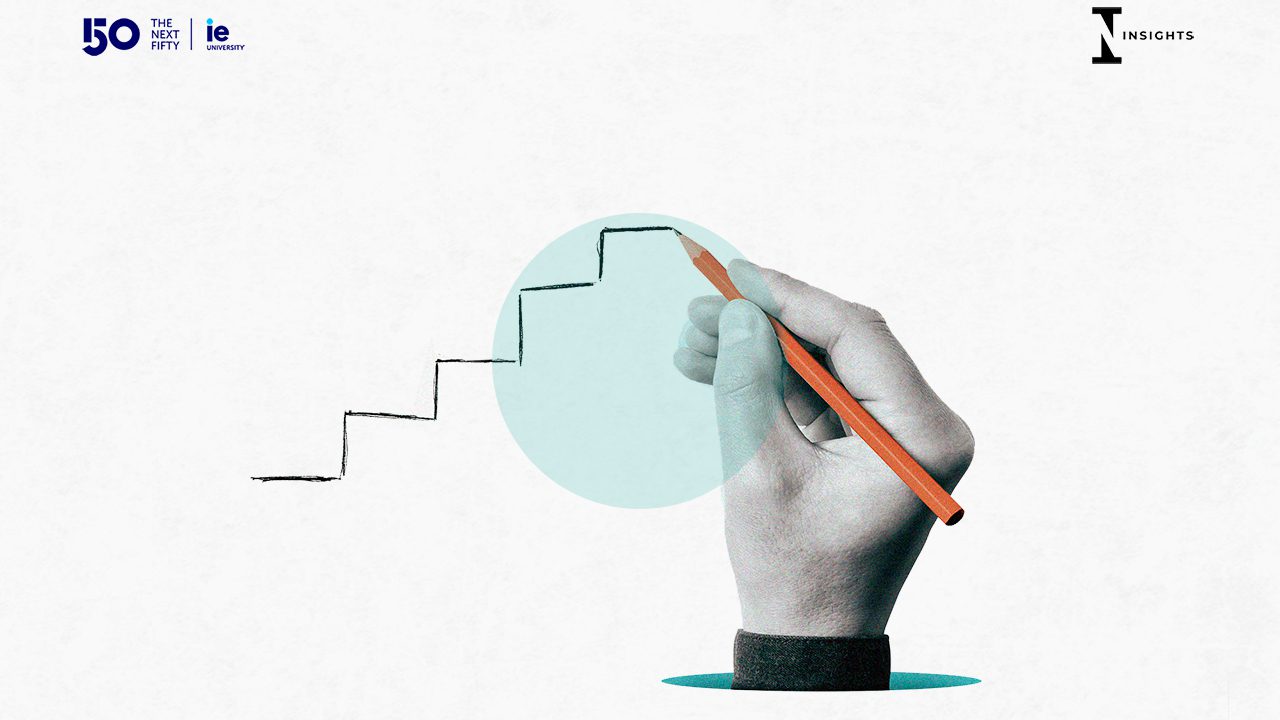
Towards a More Humane Leadership
Leaders must create safe havens for staff to learn, experiment and thrive as fully-rounded individuals.
How do companies prepare their leaders for a future that defies prediction? Not long ago, hiring a senior executive often came down to a simple question: “does the face fit?” Outward impressions counted for a lot. The archetype was a tall, white, western, middle-class male. He was expected to demonstrate high levels of mental and physical energy, decisiveness, analytical and strategic skills, and be familiar with a variety of international business cultures. His goal: to boost shareholder value (and probably his bonus too.)
However, over just the past five years, new dynamics have reshaped the business world, and with it our understanding of corporate leadership. The economic center of gravity shifted from the traditional international manufacturer to the omniscient tech colossus. Globalization, seemingly stagnating, has simply continued online. A combative China (not to mention Russia) coupled with a popular backlash against job losses in some Western economies has darkened the mood for ‘Davos Man.’ And Covid lockdowns have fuelled anxiety and cynicism about government overreach, and transformed work norms.
Meanwhile, a new, more idealistic, digitally native generation has moved into management. Younger leaders now want their companies to fight climate change and further social goals, tapping into more diverse talent pools. Thus, in a very short space of time, the old multinational company leader has started to look outdated.
Indeed, the very purpose of a company has changed. A forthcoming Headspring survey of corporate leaders in Europe and the Middle East found that only 13% now consider shareholder value as a long-term priority, less than half the number who prioritized ‘social responsibility’ or ‘diversity and inclusion.’ All stakeholders now matter. Decision-making, the most important leadership quality according to the survey respondents, is now less about leading from the front, and increasingly about delegating and dispersing authority while trying to maintain efficiency.
Many – though certainly not all – leaders have adapted well to these changes. But more profound upheaval is coming, and fast. One in four respondents in Headspring’s survey, for example, say that they look only two to five years ahead when preparing new leaders for senior roles. Predicting what companies might need from leaders in, say, 10 years, is unknown, and even frightening. If, for instance, an algorithm produces consistently better decisions than a CEO, where does the proverbial ‘buck’ stop – with the leader or the algorithm’s programmer, or no-one? When no person can explain how the algorithm reached its decision, how would we know if it is the ‘correct’ decision? There is no guarantee that technological progress will make life easier for employees. Will it mean ‘fewer hours’ or ‘survival of the fewest?’ Will the next generation of leaders herald a golden age of inclusive debate or end up enforcing a simplistic consensus, resistant to alternative viewpoints?
Tomorrow’s leaders will have to determine which path is taken. Are we heading towards an AI-driven dystopia of relentless measuring and tracking to extract every drop of value from employees, before discarding them? Or preparing the ground for a more ‘humane leadership,’ a sort of modern version of the old ‘paternalist’ company, providing a safe haven for staff to learn, experiment and thrive as fully-rounded individuals? What was once futuristic speculation may come to define the very essence of great leadership sooner than we imagined.
© IE Insights.
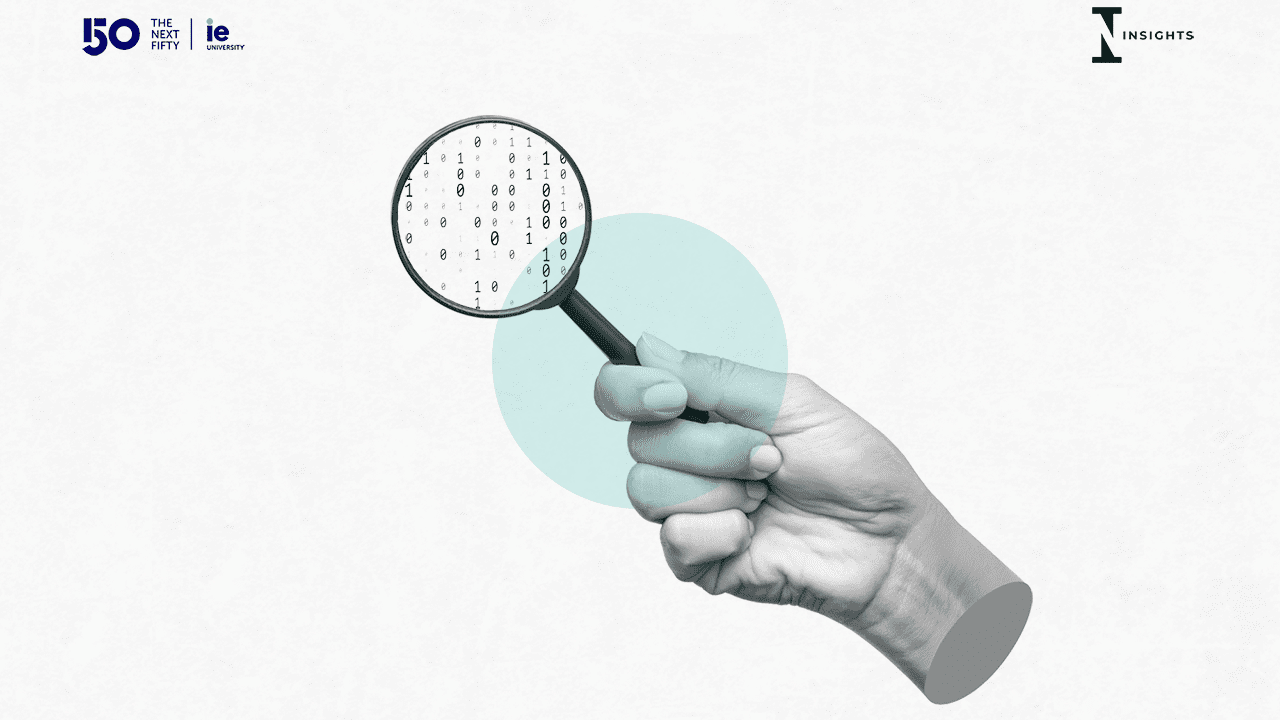
What Comes Next for Education
New technologies will create unimagined possibilities in education but the professor will remain at the heart of shaping the lives of students.
Technology is evolving at an incredible speed – and because of this, from generative and explainable AI to robots and quantum computing, the world of tomorrow is almost unrecognizable. This is the case for education. It is very difficult to predict what the future holds for learning in the next fifty years.
Education is affected by numerous factors, of which technology is only one component, though it is a major one. Societal and cultural changes, as well as economic development, will also continue to influence equitable access to education and the profound changes that are to come in regard to teaching and learning models. These forces and their outcomes are sometimes positive, sometimes detrimental, but what is apparent is that they are increasingly fast-paced and radical and, thus, another factor that will impact the future of education is our ability to accept what’s yet to happen. As higher education becomes more dependent on technology, effort must be put into preparing our students for this change – in addition to ensuring that professors accept this dependence and learn how to use technological resources effectively.
Over the next 50 years, we are likely to witness a greater dependency on online and lifelong learning. New technologies such as Intelligent Tutoring Systems (ITS), computer programs that use AI to provide adaptive and personalized learning environments for students, Chatbots (and now ChatGPT), natural language processing, and conversational AI will evolve and be integrated into all disciplines and by most, if not all, higher education institutions. That is, of course, if care is taken to balance the risks and the opportunities that these technologies offer.
More universities will come to use adaptive learning and personalized curricula, because more data will be available to help us understand how students learn. Immersive experience and gamification will become the name of the new learning game. In many ways, we are already on this path. What is most important to note is that – even amongst all these new and exciting technological developments, some of which we cannot even fathom at this moment in time – the role of the professor in academia and in shaping the lives of students will strengthen as more space is opened up for AI assistance in the classroom.
Educational institutions will rely more and more on data analytics in driving decisions, primarily in curricular development, staff hiring, and program design. With the rise of automation and AI, many college degrees will disappear and be replaced by those that emphasize critical thinking, problem-solving, and creativity. Quantum computing, if and when it becomes a reality, will open the doors to new and unimagined possibilities in research and investigation. Academic institutions will be forced to develop new curricula, tools, and resources.
In all of this, we can also strive to create a future in which education is truly inclusive and diverse, a future in which we are able to address many of the stereotypes and gaps that are currently affecting our ability to teach and learn. We must do more than simply hope that the advances in technology will allow equal access to education, for it is the cornerstone of human development.
© IE Insights.
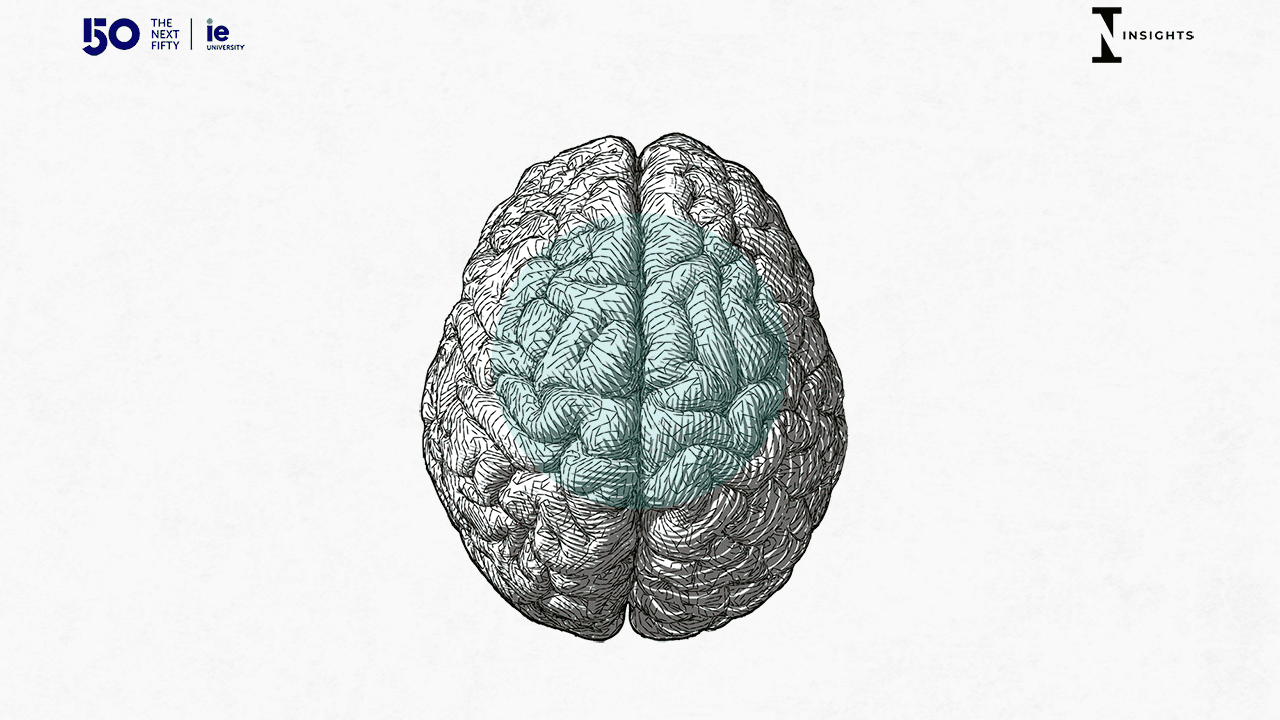
The Next Big Challenge: Redesigning Our Brain to Boost Its Capacities
Understanding the composition and function of the brain is key to unlocking its potential.
The latest advances in artificial intelligence fascinate us and represent a Copernican revolution for education, our access to knowledge and formulating a new vision of the world.
In contrast with the evolution of technologies, our bodies and our brains have evolved little over the past millennium. One of the main challenges for the next 50 years is how to redesign our brain to enhance its cognitive, intellectual, and emotional potential. The original design of our brain dates back to the age of reptiles. The new challenging environment requires a sublime shift of our intellectual capacities.
However, the brain is still the North Pole of scientists and philosophers: still largely unexplored, contested across a range of disciplines and a source of rich resources. We might have a better understanding of how we think, decide, and behave if we knew more about the composition and functioning of our brain, but much of it is uncharted territory. In recent years, a growing range of disciplines have begun exploring how our brains work, and one of the newest and most interesting is neurophilosophy, which posits that mental states, such as our thoughts, memories and feelings, have a physicochemical origin within the brain. For example, the happiness we experience when we see a loved one after an absence happens because our brain secretes certain hormones, specifically oxytocin and vasopressin, which make us more sociable, empathic, and cheerful. These processes typically involve different areas of the brain: neurons receive visual information through electrical impulses from the optic nerve; the ability to recall information is provided by memory, along with many other neuronal interactions or synapses, all of which take place within milliseconds.
We humans use our neuronal capacity throughout our lives, producing synapses as a result of learning, experience or the association of ideas and knowledge. Other mammals use their neuronal capacity for finding food, defending themselves and reproducing. That explains why mammals such as bison walk from birth and soon learn to feed themselves.
As we know, human babies are dependent on their parents up to relatively advanced ages compared to other species, during which time they develop greater intellectual capacity. In light of this marvel of evolution, we must wonder if the brains of those who succeed us over the centuries will develop an intellectual capacity we can only imagine. But as things stand, it seems more likely that artificial intelligence and machine learning will evolve much faster than the brain and perhaps develop into a more skilled species than human beings themselves.
The potential of psychopharmacology is a fascinating avenue for development and could have transformative effects on our body and our mind, including the enhancement of our brain capacities. If our brain is not going to evolve organically to keep up with technological and social change, why not resort to nanotechnology and chemistry to make us more intelligent and have richer cognitive and emotional experiences? This is not tantalizing: as has happened before, reality will likely outdo fiction.
Until our brains reach that stage of evolution, the best possible solution for expanding our mental capacities is through lifelong learning. Here, the good news is that our brain is amazingly flexible and can generate new neurons over time. Some experiments have shown that studied, intensive exercise of our intellectual faculties can facilitate the growth of neurons. Indeed, there are reasons for hope in the next 50 years.
© IE Insights.

The Future of Banking
Human capital, cross-industry consolidation, and customer-centricity will be at the center of the banks of the future.
The banking sector is at a turning point. There will be a significant need for banks to undergo fundamental transformations in the future, driven mainly by technology such as artificial intelligence, machine learning, augmented reality, and open banking platforms. Of course, we may not know yet exactly what banks will look like in the future, but banks, as always, will be able to successfully transition, grow rapidly, and become more profitable.
To achieve a successful transition, the most important element will be to invest in the readiness of the human capital to mitigate resistance and reach digital maturity. Human capital is the heart of innovation, they hold the passion and creativity to reimagine business models, strategies, processes, technologies. Advanced training and education for both sides of the transaction is needed, both employees and clients need progressed development and learning. If banks invest in human capital and education, everything else will follow.
This transformation will require banks to look beyond mere financial services, cross-industry consolidation will play a major role in how banks operate and the services they offer. Banks will focus on offering more distinctive customer needs, partnering with tech giants and other non-bank organizations. These cross-industry consolidations will offer an abundant horizon for opportunity, new revenue streams, and higher margins. If banks are open to adopting these future platforms into their strategies, they have a chance to thrive.
But this is one dimension of the equation for the future of banking. Other external factors are uncertain, such as new technology innovations, regulation, and geopolitical shifts. These can drastically have an impact on the course of how this sector will develop.
The biggest danger is losing sight of changing customer behavior and losing our customer base to other non-banking players. Moving fast is key, banks need to be ready to hit the ground running and dive deep into real-time services and create and cater to customers’ individual and unique needs to be able to compete.
The truth is, banks remain to have substantial advantages to help them avoid decline; their reputations are extremely powerful, familiar, trusted, experienced, secure, and regulated, while new entrants of alternative banking providers lack all these. Banks also have a strong position in controlling capital flows, impacting themes and customer behaviors, they keep investing and reaffirming their roles in society which leads to secure relationships with policymakers.
Banking keeps reinventing itself, and the banks that embrace the transformation will have a stronger positioning in the future; incorporating new platforms, adopting new technologies, and understanding shifting customer behaviors will eliminate the barriers and shape into an ecosystem that rewrites the banking sector’s narrative.
© IE Insights.
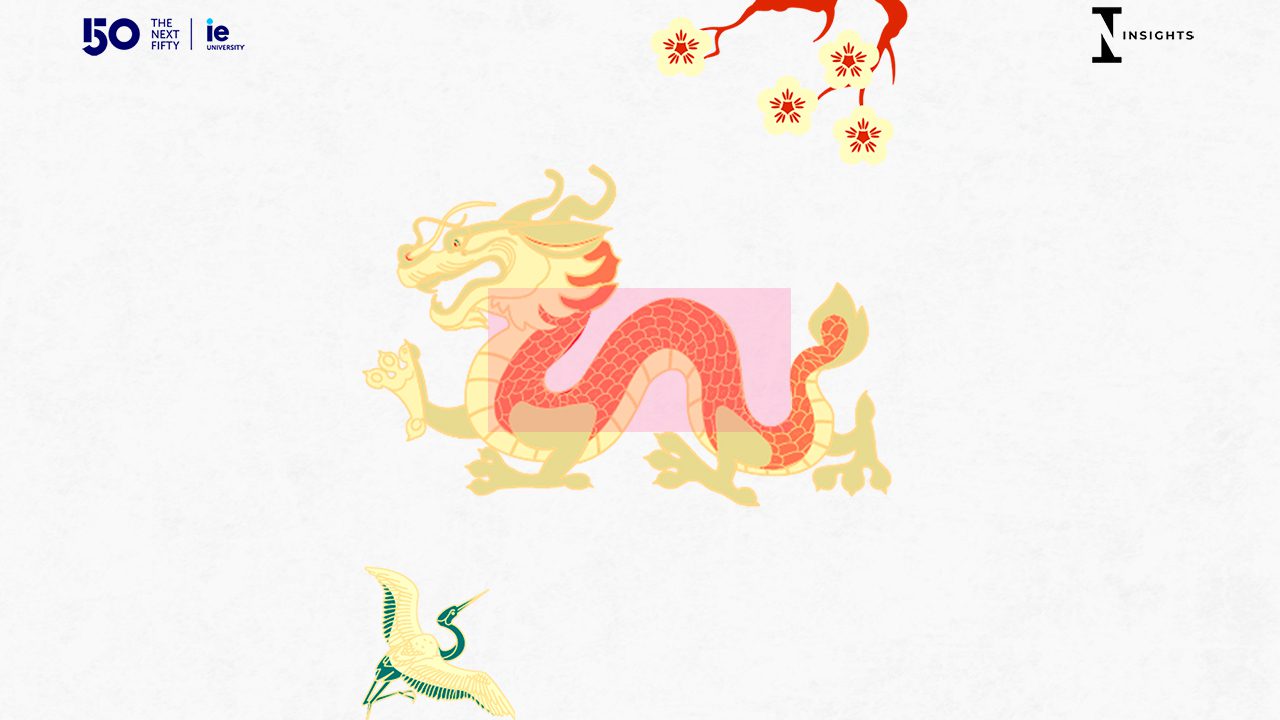
Where is China Headed in 50 Years?
The fate of the 21st century hangs on China's decisions in the next 50 years.
At the turn of the 20th century, the UK was the dominant global economic force. But underneath that veneer, the US had already displaced the UK as the world’s largest trading nation and Germany raced to rival its naval dominance. The subsequent 50 years brought a US-led global order, a flourishing Western democracy, and modern-day global trade and technology. The world is undergoing profound shifts again – the historical parallel is astounding – as China unseated the US as the world’s largest trading nation, creditor nation, and in owning the world’s largest naval fleet.
The 21st century will chart a course no less dramatic, with US-China relations a central nexus. In 50 years – marking three-quarters of the 21st century – where will China be?
Economy. China faces mounting debt burden, shrinking demographics, and restricted access to technology. However, by implementing prudent and pro-growth policies, China should still have the capacity to deliver a mid-4% range growth over the coming decades and – assuming the US continues to grow at 3% – will become the world’s largest economy. China may succumb, however, to its fiscal and financial crisis, deflate its asset bubble, and lose its manufacturing dominance on account of demographics. If China enters into “Japanization,” the global economic order could see an entirely other dramatic shift over the next 50 years, with the US remaining the preeminent global economic leader, India ascending as the second-largest economy, and China as the third most powerful (while remaining a significant force in global innovation, high-end production, and talent creation.)
Politics. In 50 years, the Chinese political landscape will be the most unpredictable, given the inherent uncertainty of authoritarian rule. Today, the Party exercises absolute control over economy, society, and culture. No convincing evidence supports the argument that China will converge with Western liberal democracy, but it is plausible that the general direction of China’s political climate will lean towards more freedom and openness, with more free press, free speech, free thinking in education and innovation, and more freedom in religion and the arts. Even without universal suffrage, China could empower a reasonable degree of public contestation, development of civil society, check and balance on the government’s accountability, and the rule of law, which would usher in another era of economic renaissance. Yet, if China’s political system were to be dramatically altered, it would open even wider possibilities.
Military. China’s Military Modernization Plan outlines that, by 2050, its military will be top-tier in the world and, given its drive to narrow the gap with the US, Chinese defense spending could be at parity with its superpower rival in as little as 20 years. This military expansion is closely associated with China’s now-widened global interests. With multi-trillion-dollar infrastructure investments across the developing world, immobile and vulnerable to political upheavals, China needs diplomatic and security capabilities to safeguard its overseas assets, personnel, and interests. In 50 years, we will likely see Chinese military in ports on the Indian Ocean, the East coast of the Atlantic Ocean, and the South Pacific Islands – not to mention its planned Moon base which will turn China into a formidable space power.
Global Influence. In China’s economic ascent, it first served as the exporter of cheap labor and now also exports technology, knowledge, and industrial supply chains. While China’s domestic economic well-being will be a constraint, China will inevitably continue on this path exporting technology, capital, infrastructure development, and industrial capacity to Africa, the Middle East, ASEAN, and Latin America and, in exchange, remain the largest importer of resources, food, energy, and a growing importer of primary and intermediary industrial goods from the developing world. Over the next 50 years, the Global South will witness a faster speed of growth compared to the Global North. China sees itself as a leader and a designer of an alternative rules-based multilateral order parallel to the Bretton Woods Institutions and will therefore continue to develop multilateral frameworks in the region in addition to its current prominence in the Shanghai Cooperation Organization, the Asian Infrastructure Investment Bank and the New Development Bank, and BRICS.
There are, of course, contingencies and uncertainties. Chinese Communist Party’s “core of the core interests” is Taiwan. The issue is in countdown mode, with the Chinese leader proclaiming national unification cannot wait for the next generation. In the next 50 years, according to the Chinese timetable and calculus, Taiwan unification would have long been completed (despite its actual outcome). There are two means for China to achieve this: peaceful and military. China has placed both on the table.
There hangs China’s destiny and the fate of the 21st century, between peace and war. The latter would quickly escalate on a global scale and deem all the previous and, indeed, all empirical predictions invalid.
© IE Insights.
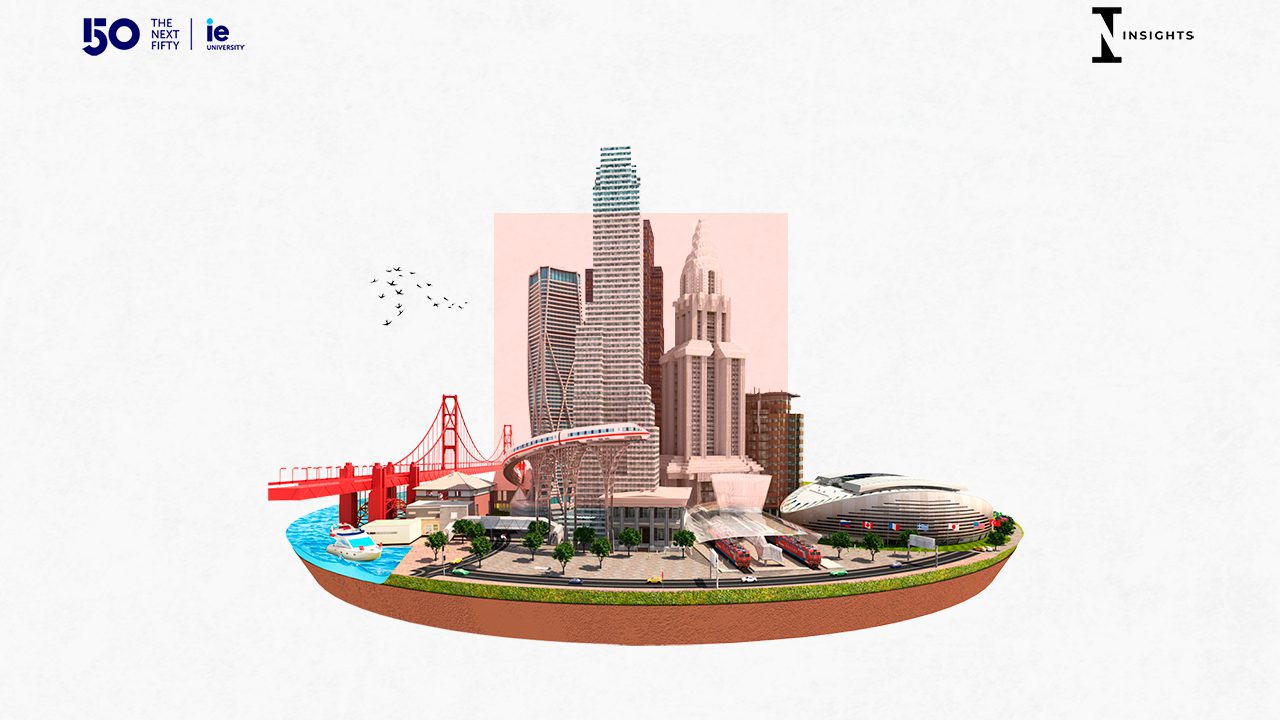
The Future of Cities
How could a post-car city work for its residents?
Almost every urbanist in Europe agrees that the future of cities should be largely car-free. I agree: cars have made cities more polluted and dangerous, have stopped children playing on the street, and they take up space that could be used for the essential purpose of city life, which is helping people meet. Imagine, for instance, all the encounters, health, and happiness that we could create by turning parking spaces into café terraces, mini-parks, vegetable gardens, ping pong tables, and so on.
But we need to think honestly about the people who will lose out from car-free cities. The deputy mayor of a big German city, which has been taking away parking spaces, muses: “People come up to me and ask, ‘Where can I park my car?’ I say, ‘Firstly, I don’t know. Secondly, it’s not really my problem.’” That’s an unsatisfactory answer to people who are now car-reliant. How can we make the new city work even for many of them?
They will benefit from the advent of the first autonomous vehicles likely to enter common use: driverless buses. The technology to create a driverless car that travels different routes all the time isn’t there yet. Such a vehicle would also be prohibitively expensive for one household, and would mostly just perpetuate the problem of cars taking space from people. But what is within technological reach – and much more useful – is driverless buses each programmed to travel one particular route, back and forth forever. Without a human driver, the cost of a bus approximately halves. That means you could have far more buses traversing the city, reducing the need for private car ownership.
But the most important new vehicle in the post-car city will be the electric bicycle. A decent one costs about €1,000, or about the price of two months’ car ownership, if you count the costs of the car’s depreciation as well as petrol and repairs. E-bikes work even for older people and those in poor health. And since e-bikes can comfortably travel at 25km an hour, they can do the journey from many currently car-reliant suburbs to downtown in about half an hour. That answers a charge often made by the car lobby: that bikes only work for hipsters in city centers. E-bikes extend the domain of cycling. No wonder they are spreading fast. In the Netherlands, the most advanced bicycle country, 57% of new bike sales in 2022 were of e-bikes. Then there are cargo e-bikes, which can carry 25 kilos of freight and could replace many delivery vans.
The car-free city will only be accepted if we can make it work for most of today’s drivers. Happily, that’s doable.
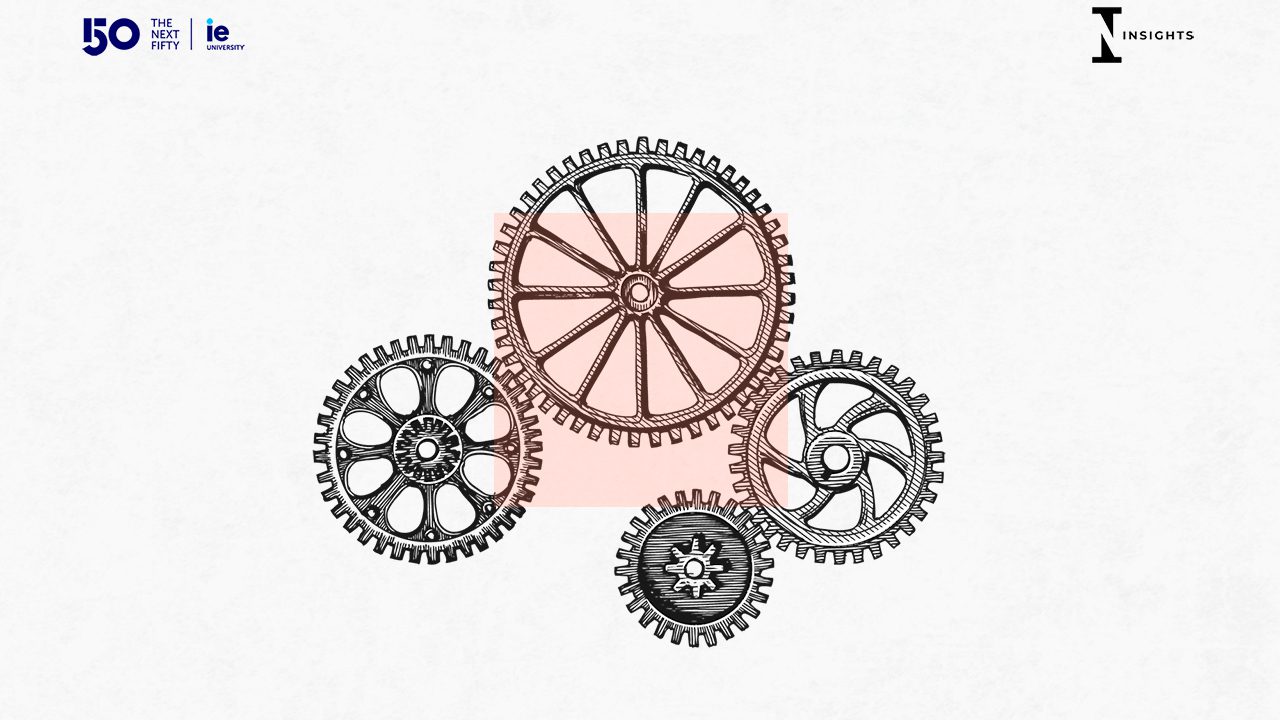
The Future of Business and Society
Business will take on a new role and connectivity in society.
History is likely to name our age as the Age of Connectivity. That is largely down to the extraordinary leaps forward in communication technology that we are all lucky enough to enjoy. The connectivity of the past few decades will now power up to another whole level with AI and make what we all thought was science fiction, science fact.
I would suggest that alongside this transformative connectivity technology has brought us there is another very profound connective change underway in our society – business is much more connected to our lives and more at the center of our societies generally. Gone are the days of business being nothing more than an isolated financial activity, which it has been seen for many decades.
The historic view that business was for the elite only and dominated purely by major financial interests is now changing. While small groups of businesses and businesspeople still do have huge power – in some ways more concentrated than ever and the power of financial capital is certainly as strong as ever – we are now seeing other stakeholders becoming much more engaged, powerful, and increasingly influential.
Equity capitalism will remain a central force because of the importance of funding but other stakeholders from regulators and politicians to employees, customers, communities, and NGOs are going to have a much greater role and power than ever before.
This transition to a more complex stakeholder world is an enormous challenge to this generation of leaders as it involves much greater engagement and accountability on a wider group of societal issues. Many have described this as ESG, but I would argue that it is actually the beginning of business increasingly being asked to play a much more central role in society. Our progress will be marked by a tsunami of non-financial reporting in a way we have never seen before. It will be an era of data capture and transparency which will bring huge changes, particularly as we begin to assess the impact of externalities that currently do not sit on our balance sheets or profits and loss accounts.
To be a business leader now you will be asked, indeed expected, to consider your workers’ health, mental health and well-being in a way you never were before. Outside of your own employees, business will be asked to find solutions to climate change, pandemics, community problems, inequality, diversity. All manner of new demands will arrive on your boardroom tables. You may not be able to solve these huge social and environmental problems, but you will be asked to play a part in a solution rather than just be seen as being part of the problem.
This is a fundamentally different role and connectivity for business in our lives and in our society. That connectivity has profound implications in the same way connectivity through technology is changing our world. Indeed, they will overlap in a number of ways.
Two obvious examples are the creation of a new superpower in AI and, partly linked to that, the beginning of a new generation of health solutions. For these to be developed safely and positively engaged, if not controlled, by the wider stakeholder community is crucial. We will need this development to be guided by our social values and beliefs not just businesses’ ability to maximise their profitability.
Our track record of developing global solutions without a wider connected view is not strong. Take the world’s progress in developing solutions to pollution and climate change, or the distribution of global vaccines during the COVID pandemic. However, leadership in business is adapting fast to these impacts and externalities in our current system. Progress and change may not be as fast as many would like but a different view – a multi-stakeholder view – is now being developed and applied in Boardrooms much more widely.
Leading universities are playing a crucial role in helping future leaders build the capabilities to deal well with this new environment, preparing them to tackle the huge challenges and opportunities ahead. Management has become more accessible to more people and turned into a genuinely 3D activity – broader and more exciting in many ways. One of humankind’s greatest traits is the ability to continuously adapt, if leadership can do that in this changing environment, I believe business can become an even greater force for good, not only in generating better sustainable growth, but to deliver more genuine broader benefits for people all around the globe.
© IE Insights.
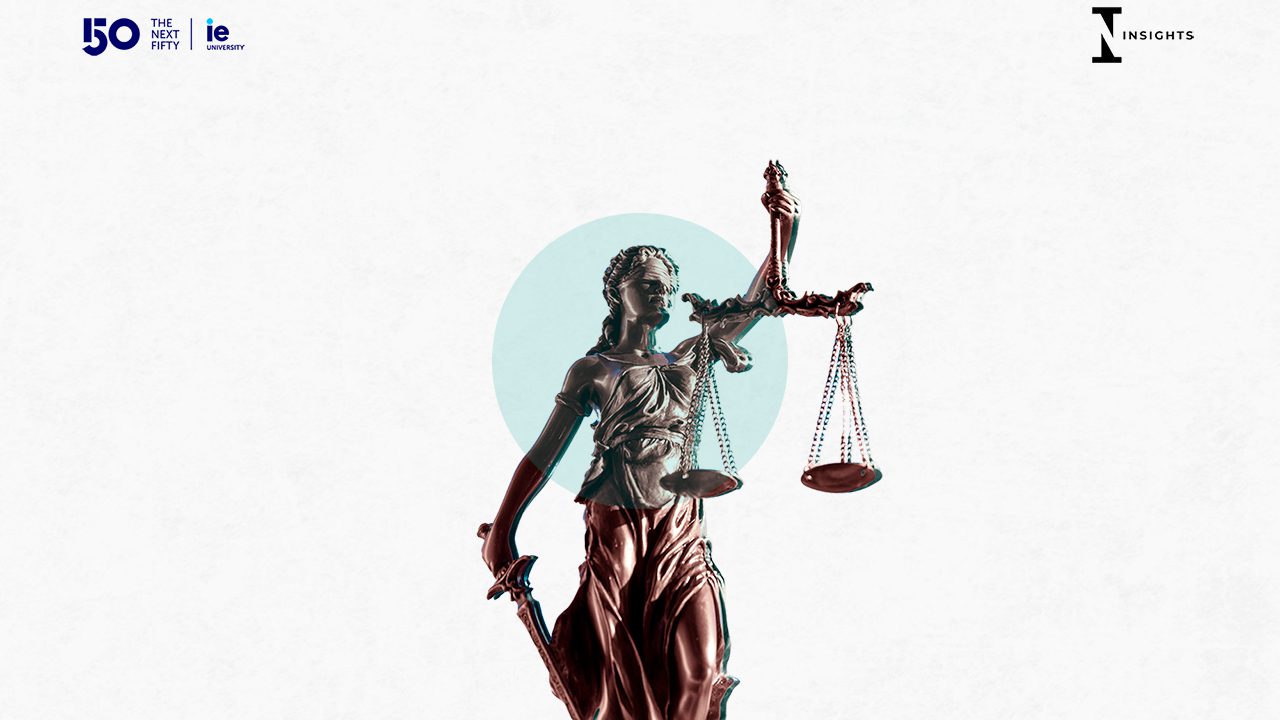
Future of Law: Evolving Education Trends
Internationalization, multidisciplinarity, and digital immersion will transform how law is taught.
Law was first taught in Europe in the 11th century at the University of Bologna. By the 12th century, around 50 to 60 law schools were using Bologna’s teaching model, including the faculties of Lerida, Perugia, Oxford, Cambridge, and Toulouse. In the United States, the first law school was William & Mary in Virginia, founded in 1779.
Today, law is taught in public and private universities, and many faculties train students to become lawyers. It is a heavily regulated profession with high entry barriers. In many countries, it requires an undergraduate degree, a graduate degree, an internship, and an entrance exam to join a professional bar association.
As society and higher education in general have evolved, so has the teaching of law. More and more universities are turning to less theoretical and more practical training through different teaching methods, such as case studies, the Socratic method, and problem-solving. Many law schools have also included skills-based training in addition to specific legal knowledge.
Currently, there are three main challenges that will impact how law is taught in the future: internationalization, multidisciplinarity, and digital immersion.
Nowadays, the professional practice of law, and of other legal fields such as the judiciary, has a marked international focus, not only because of the importance of large global business law firms, but also because the issues that most lawyers must deal with are increasingly international in nature, due to the globalization of the economy and the flows of people and services around the world. Therefore, this reality of the practice of law is one of the factors that must be reflected when teaching this discipline, with training that responds to the international legal services model required by society – as it is today and as it continues to evolve tomorrow.
The second element of teaching law in the future is multidisciplinarity. This element gains relevance as law schools move away from theory and towards practice. The law cannot be practiced in isolation from other disciplines, since the legal industry does not exist in isolation from the economy or from politics, for example. Thus, the teaching of law cannot remain oblivious to these other disciplines, which play such an important role in legal institutions and in conflict resolution.
Thirdly, law and legal services are changing in lockstep with the evolution of the digital society. On the one hand, regulation in the area of digital and technology law, including artificial intelligence, is increasing. In addition, legal advisors must provide advice to their clients’ transactions, taking place while the digital transformation of their business is happening. Consequently, the teaching of law must reflect the new reality of the legal ecosystem and of the services provided by the legal profession.
Law students of the future need training that reflects the international, multidisciplinary, and digital approach if they are to respond to the future challenges of the labor market and continue to play their essential role as architects of society.
© IE Insights.

Turning on the Lights
Enabling people to find their group and making them feel special is the management challenge for the age of AI.
History, as Mark Twain observed, may not repeat itself but it certainly rhymes. And the future of management is likely to rhyme with great resonance over the forthcoming decades.
Nearly a century ago, in 1926, the Laura Spelman Rockefeller Foundation awarded a grant of $100,000 a year for five years to the Committee on Industrial Physiology of Harvard University. This was hardly headline news. But the research undertaken proved truly groundbreaking. The grant was used to explore the reality of working life. How did people really work in factories? What concerned and motivated the people actually doing the work? What factors affected their morale and productivity?
In asking such questions the researchers were taking a radically different route from their predecessors. Their aim was later described as to achieve an “intimate, habitual, intuitive familiarity with the phenomena.” This eventually produced more than 20,000 interviews. The resulting experiments, run by Elton Mayo but involving other researchers (including Harvard’s Fritz Roethlisberger and William Dickson), were carried out at Western Electric’s Hawthorne plant in Cicero, Illinois between 1927 and 1932.
The Hawthorne studies began with experiments in which the lighting in the factory was altered. The theory was that brighter light would raise morale and, as a result, increase productivity. The researchers set out to establish the lighting level which maximized productivity without being prohibitively expensive. This seemed straightforward, simply a question of finding the balance between cost and effect.
Hawthorne workers were separated into two groups. In one group the lighting levels were increased: productivity increased. In the other group the lighting remained at its normal level: productivity increased. Lighting levels were further increased, but still the productivity levels in the two groups remained much the same.
This seemed surprisingly inconclusive. How could productivity rise when the lighting remained exactly the same? The researchers, therefore, started reducing lighting levels. They reduced the lighting in one group drastically: productivity increased. Eventually, the light was reduced to extreme dinginess. It was expected that the workers would be depressed and irritable working in moonlight. In fact, their productivity remained at a similar level, and sometimes increased. To prove the point, two workers were isolated in a very small room with minimal lighting. Their productivity continued at a healthy level.
The researchers shook their heads and contemplated what all this meant. They were confused but, being researchers, returned with a more complicated experiment. In the factory’s relay assembly test room, a group of six women who assembled telephone relay switches were selected and isolated in a test room. There they were diligently observed. Conditions were changed and tinkered with. But, nothing seemed to reduce productivity.
The conclusion from the research team was that they had missed something. This something was the relationships, attitudes, feelings, and perceptions of the people involved. The research program had revolved around selecting small groups of workers to be studied. This, not surprisingly, made them feel special. For the first time they actually felt that management was interested in them. The second effect was that the people felt like they belonged to a select team. “The desire to stand well with one’s fellows, the so-called human instinct of association, easily outweighs the merely individual interest and the logic of reasoning upon which so many spurious principles of management are based,” commented Mayo.
History rhymes. In the age of AI and the metaverse, organizations are managed by and for humans. Simply, the management challenge of our times is to make people feel special and to enable them to identify with their group.
© IE Insights.
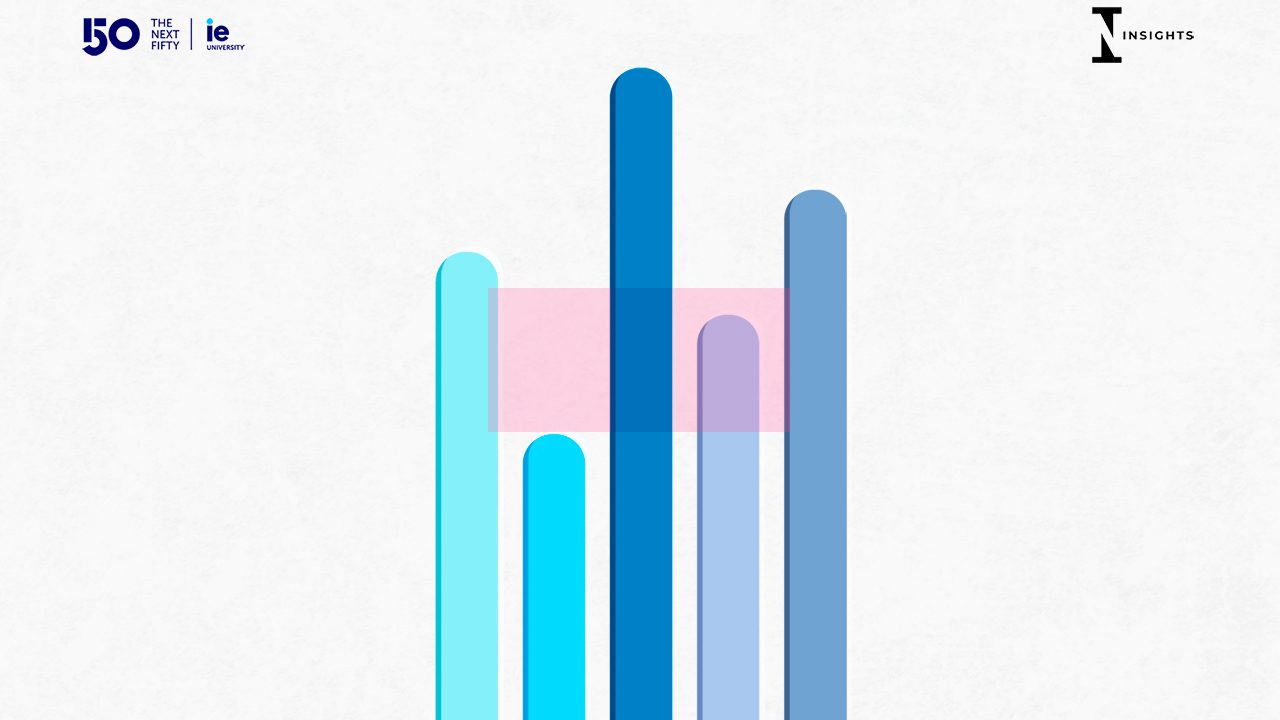
Employee Empowerment and Performance Management in an Accelerated World
Performance metrics will shift from "smart" goals to a focus on big ideas and a greater vision.
The modern business landscape is one characterized by rapid shifts in technology, pushing many industries and professionals with advanced degrees into a perpetual state of adaptation. As market dynamics evolve and the tempo of business operations multiplies, the yardsticks by which we measure success are also undergoing an inevitable transformation. One only needs to reflect on how the introduction of ChatGPT has caused many companies to dramatically shift strategy, priorities, and team focus to adapt.
Historically, the core of performance metrics zeroed in on the second-tier goals. There was a predominant focus on tangible, “smart” goals and OKRs — ones that are specific, measurable, achievable, relevant, and time-bound. Such a structure certainly offered advantages, particularly in keeping a laser-sharp focus on immediate priorities. However, by fixating mostly on tangible targets, especially in the age of remote work and global teams, employees often feel alienated from the overarching mission of their organizations. Physical distance combined with a minor focus (if any) on the greater company vision has resulted in a diminished connection and engagement with the company as a whole.
In the current professional environment, there’s still a strong inclination to retain these outdated metrics. Interestingly, these performance standards which were instituted about half a century ago by visionaries like Jack Welch, have unintentionally transformed into a form of “micro-management” due to the accelerated pace of work and the frequent shifts in priorities that innovative organizations require in rapidly evolving markets.
A seismic shift in performance measurement is on the horizon. As work evolves, there’s a rising advocacy for metrics that emphasize alignment with the company’s mission and the behavioral characteristics that reflect it. Gone will be the days when professionals were tethered to short-term, micro-level results that eerily resemble micro-management. Instead, the scales will tip towards granting employees greater autonomy and empowerment that they are seeking in the work they choose.
The new paradigm will position “big ideas” at the helm, with specifics being chalked out by the employees themselves.
Google’s early experiment with the “20% Rule” is the perfect example of employee empowerment leading to seismic and tangible business results (and is credited for the creation of Gmail, AdSense, and Google News). A future where employees have a significant say in identifying projects most interesting to them, and crafting more of their own performance metrics that align with the broader corporate strategy, isn’t far-fetched, especially for early-stage and high-growth companies seeking to disrupt their industry.
While early-career professionals will still primarily be steered by specific metrics as they learn, employees demonstrating competency will be empowered to innovate, create, and drive a greater percentage of their work without substantial management intervention or oversight. The “Empowerment Percentage” will grow as leaders grow within an organization and develop a reputation and expertise in their industry.
In some professions, the Empowerment Percentage assigned to each employee will become an indicator of seniority and respect (similar to job title) and will be identified and negotiated with every new role and promotion (similar to compensation).
The accelerated world demands a fresh perspective on performance management and measurement, and is most certainly in need of a dramatic shift on employee engagement. Companies that can pivot from an overly tangible target-oriented approach to one that fosters alignment and empowers employees to innovate towards the larger mission will not only thrive, but also harness the full potential of their people and teams. The balance is shifting, and it’s a change that promises a more engaged, efficient, and mission-driven workforce.
The only question to be answered now is whether your company will lead, follow, or lag in empowering employees to ensure adaptability and reap the benefits of a more innovative, productive, and engaged workforce.
© IE Insights.

The Role of Dialogue in Tomorrow’s Society
Dialogue and participation can be improved through the creative and purposeful use of technology.
Dialogue as a genre has been an integral part of most societies for centuries, both in the East and the West and has long-shaped nature of our cultures and our democracies. In the West, for example, it is chiefly associated with the Socratic Dialogues as developed by Plato. In the East, the ancient Sanskrit epics Ramayana and the Mahabharata are full of meaningful dialogues.
Democracy is intimately connected with public discussion and interactive reasoning; it is through dialogue that democratic citizens inform themselves and elaborate their views. Dialogue is also a prerequisite for authentic relationships between people, serving as a purposeful way to explore ideas and points of view, express differences, test assumptions, and develop creative ideas. It enriches our lives. It also helps to dissolve polarization by bringing us toward collective understanding and common solutions.
For these reasons dialogue is a foundation of democracies and for successful societies.
Given that dialogue is so fundamental for humanity and so integral to our being, it needs to be protected and nurtured. My view is that in an age where there are interrelated and entrenched social problems and life is becoming more complex and interconnected, collective action will be required more than ever. It is through inclusive probing, curiosity, questioning, exploration and discussion, that solutions and answers will be found, when understanding and trust is built.
It is true, societies have been growing ever more polarized, partly due to the impact of social media, among other reasons. This means that in order to achieve inclusive democratic agreement, dialogue will be more essential than ever. We need more, not less, dialogue. It will be essential for the future preservation and deepening of democracy.
The fundamental significance of dialogue is not in question, but its effective survival is if we do not take action – now – to safeguard and sustain meaningful dialogue. Due to the unprecedented speed at which technology is advancing, including AI and different forms of communication, we must innovate and adapt to ensure that this age-old practice of dialogue is not only nurtured but entrenched in our way of life – even if the mode in which it is conducted change.
We must remain on guard. The way algorithms reinforce existing prejudices, for example, and eliminate nuanced dialogue and debate could lead to a narrowing of our intellectual probing capabilities. Furthermore, social media – being far from a neutral medium – has been used to date predominantly as a marketing tool and this has created echo chambers that impede constructive dialogue.
Indeed, we have allowed ourselves to become victims of social media. However, in my view, it can be used for enhancing and enriching democracy. If social media could rise above its current, primary status of marketing tool, it would be a medium for fostering dialogue and engagement, transforming into a true marketplace for ideas and productive discussions. There is also potential for these platforms to encourage offline, face-to-face dialogues around social issues and bolster democracy by providing opportunities for bringing people together.
The effects of technology are not beyond our control. We need to create a technological future that supports human interaction and democratic values and this will take collective dialogue between technologists, citizens, policymakers, and academics, in order to find ways to use technology that enhances our individual lives and societies at large.
The future of dialogue, and thus the future of democracy, will be determined by the choices we make today. If used creatively and with intent, technology can help us shape a future that benefits from inclusive participation and deliberative dialogue. Dialogue, that age-old practice that has been and should continue to be the lifeblood of successful societies and humanity.
© IE Insights.
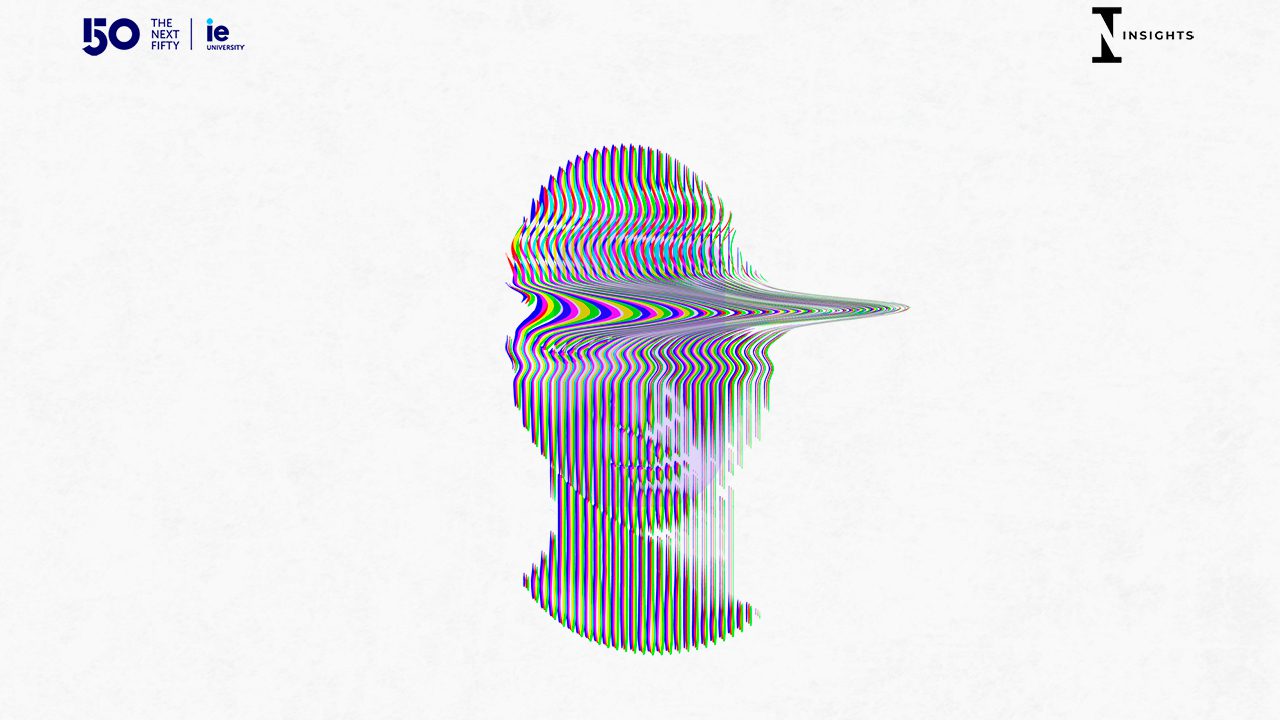
The Future of Creating, Collecting, and Curating Visual Arts
NFTs and AI artists will bring about a digital Renaissance.
Significant paradigmatic shifts are gaining popularity in the art world: online marketplaces and galleries have become the primary place to discover new artists, more collectors are purchasing digital art than ever before, and museums and galleries are adopting generative art and AI into their shows.
Saatchi Art reported that in 2022, 63% of its collectors bought NFTs, and currently MOMA is showing generative art by artist Refik Anadol, while Christie’s, a major auction house, has included an NFT section on its website. Furthermore, The New York Times reports that some European galleries and museums have begun selling NFT reproductions of works by the likes of Leonardo da Vinci, Caravaggio, Raphael, and Gustav Klimt.
Overall, NFTs have been one of the biggest innovations of the last decade to drastically alter and revolutionize the art world. We look at Beeple’s record-breaking Everydays, which sold at auction for $69 million in 2021 to understand why traditional visual artists are rushing into the NFT game.
NFTs offer a number of new benefits that have previously been mostly unattainable within the old structures of the art world, including proof of ownership, the ability to earn royalties on future sales, and even directly transacting with an audience through NFT platforms such as SuperRare, Nifty Gateway, Makersplace, artists are finally finding themselves in control of their own success. This will inherently lead to an explosion in creativity – a digital Renaissance and now, more than ever before, anyone can become an artist.
In the Web3 world, community is a large aspect of NFT ownership and this is changing the way art is curated and collected. Fans can directly invest in their favorite creators and share in their successes, converting them into art collectors and art dealers. It’s not just a new way of collecting — it’s a new way of thinking about what collecting means and looks like. It is all about community.
It is beyond doubt that the demand for NFT art will entirely overshadow traditional art in the next five decades. Art will no longer be something to simply be looked at on a wall, computer, or mobile screen… or in a museum/gallery. Art collections will no longer need a physical home because they will be integrated into the space virtually. Instead of hanging physical paintings, placing sculptures, and developing installations, art now in the form of NFT can appear on enormous screens integrated into the vertical, horizontal, or diagonal walls or, in fact, any environment, such as outdoor parks – even deserts – creating an exciting immersive experience.
As a result, access to world-class art won’t just be limited to those who can travel to major global art hubs such as Basel, Miami, Hong Kong, and New York because art fairs and exclusive events will all happen in the metaverse.
In addition, AI artists are appearing on the scene quickly and their art is being recognized. These AI artists use algorithms to analyze millions of works of art and produce their own, and are capable of producing artworks at a quicker speed than any human artist. They will undoubtedly become a force to be reckoned with in the next decades.
This shift of paradigm will lead to the elimination of intermediaries in the art world: galleries and art dealers may only exist virtually. Art collectors or fans-turned-collectors will turn themselves into art experts in this new digital space, with the assistance of AI curators.
The future is digital. Art will be created by both human and AI artists and will be entirely curated, exhibited, and collected in Web3 and the metaverse.
© IE Insights.
IDEAS TO SHAPE THE FUTURE
As part of IE University's 'The Next 50' initiative, IE Insights has invited experts from a wide variety of fields to comment on what they expect – in some cases, dare to hope for – in the coming decades.
The series is designed to help us imagine and understand our collective future on the planet and as part of society and tackle issues such as how education will change, how we will communicate, lead, and build business, our priorities in regards to global governance, diversity, sustainability, technology, as well as how we might address economic, political, and social challenges.
IDEAS TO SHAPE THE FUTURE
IDEAS TO SHAPE THE FUTURE
Education in 2050
Andrew

Jack

Andrew
Jack

Education
Education in 2050
Andrew Jack
Read
The Future of Biotech and More
Angelica

Kohlmann

Angelica
Kohlmann

Education
The Future of Biotech and More
Angelica Kohlmann
Read
AI and the Future of Human Innovation
Atif
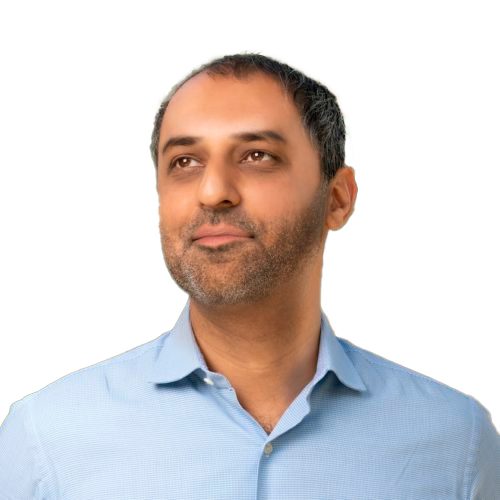
Rafiq

Atif
Rafiq

Creativity
AI and the Future of Human Innovation
Atif Rafiq
Read
Marketing and the Future of Decision Making
Carlos

Saldaña

Carlos
Saldaña

Creativity
Marketing and the Future of Decision Making
Carlos Saldaña
Read
The Future of Art and Imagination
Caroline

Michel

Caroline
Michel

Creativity
The Future of Art and Imagination
Caroline Michel
Read
The Art and Reason of Communication
Catherine

Hollyer

Catherine
Hollyer

Creativity
The Art and Reason of Communication
Catherine Hollyer
Read
Banking on Sustainability
Christian
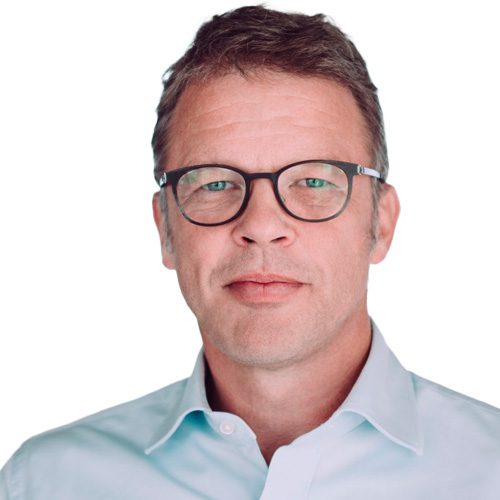
Sewing

Christian
Sewing

Society
Banking on Sustainability
Christian Sewing
Read
Creative Industries Will Transform Cities
Cristina
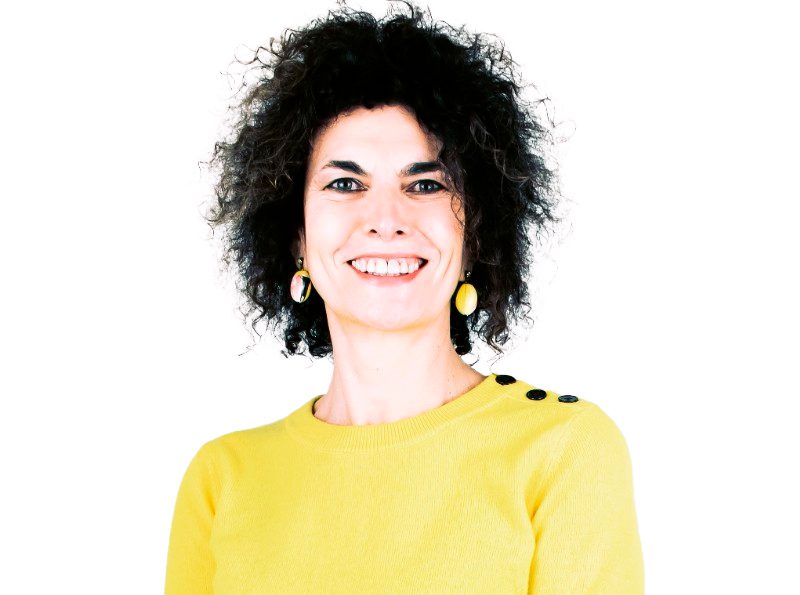
Mateo

Cristina
Mateo

Creativity
Creative Industries Will Transform Cities
Cristina Mateo
Read
Creating Our Future
David
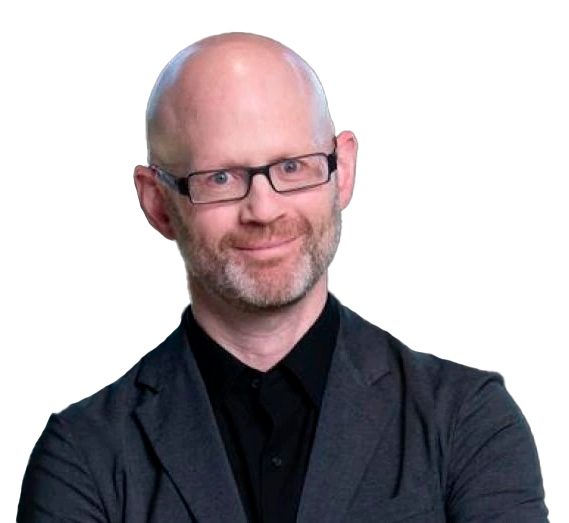
Goodman

David
Goodman

Creativity
Creating Our Future
David Goodman
Read
Our Wild Future
Deborah

McCauley

Deborah
McCauley

Society
Our Wild Future
Deborah McCauley
Read
Artificial Intelligence as an Essential Part of the Future of Higher Education
Diego

del Alcázar Silvela

Diego
del Alcázar Silvela

Education
Artificial Intelligence as an Essential Part of the Future of Higher Education
Diego del Alcázar Silvela
Read
Brave New World
Diego
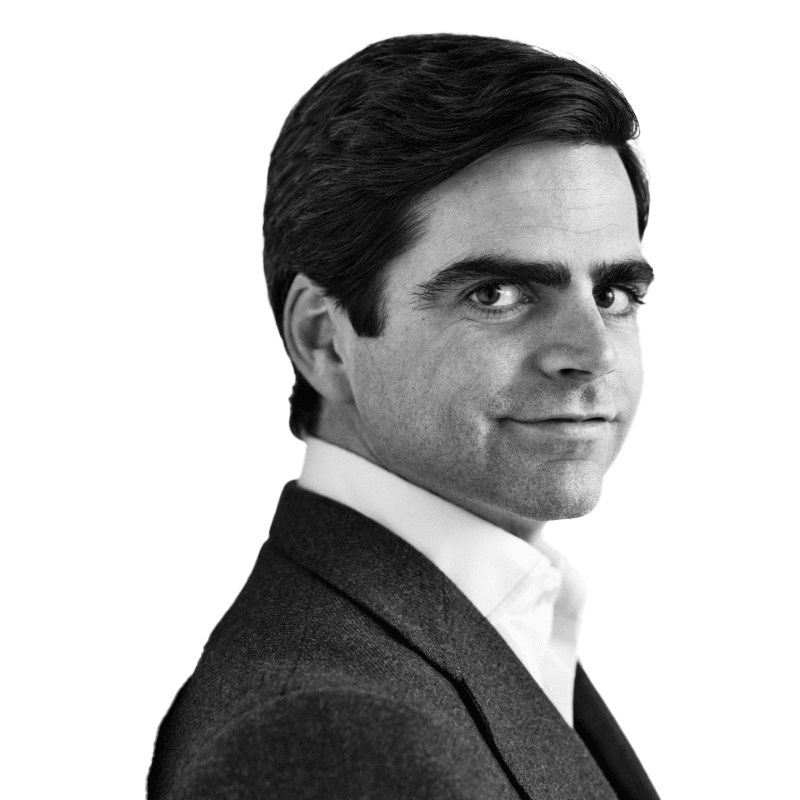
del Alcázar Benjumea

Diego
del Alcázar Benjumea

Society
Brave New World
Diego del Alcázar Benjumea
Read
The Key Technological Drivers of Decarbonization
Enrique
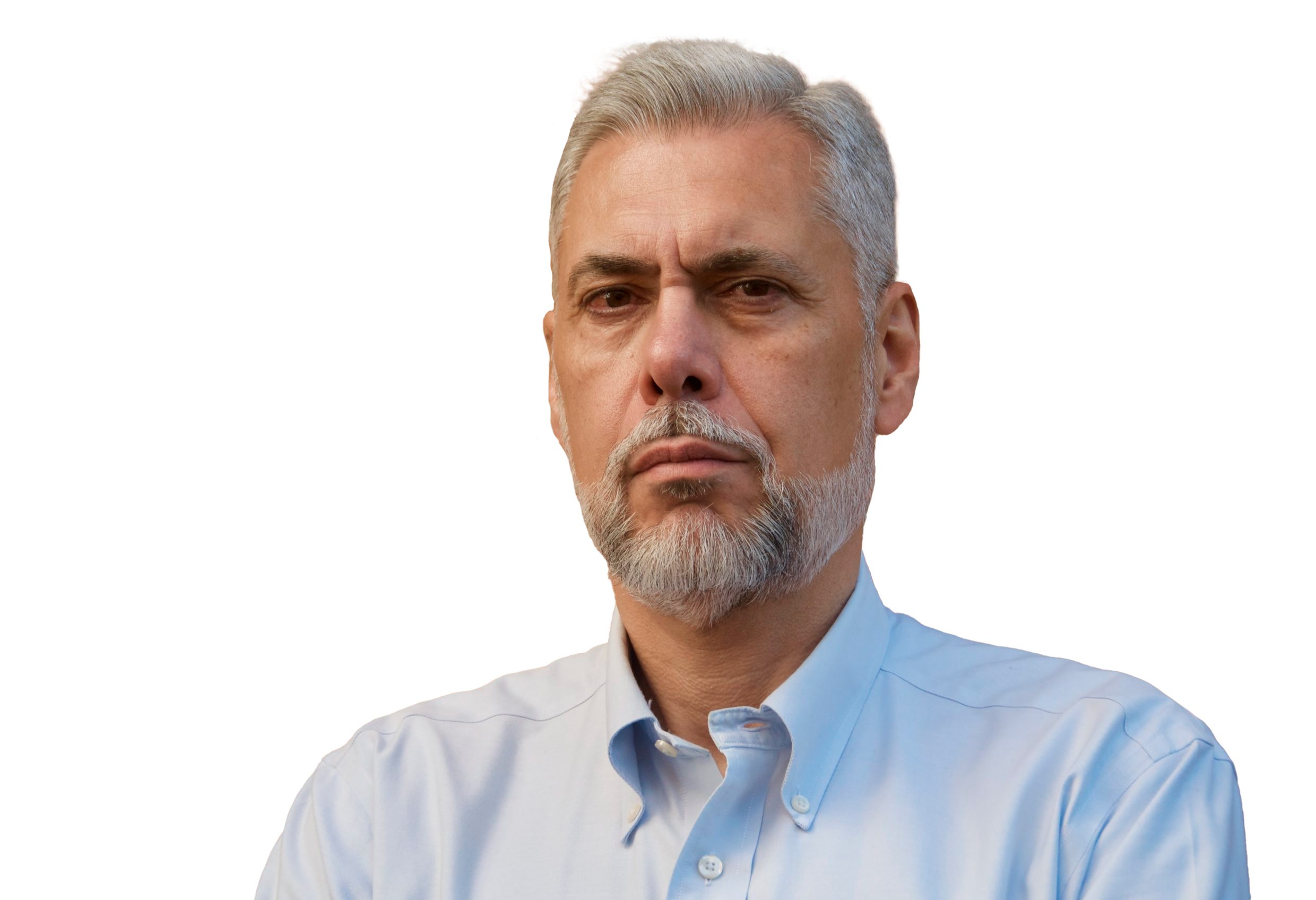
Dans

Enrique
Dans

Society
The Key Technological Drivers of Decarbonization
Enrique Dans
Read
The Future of the Internet
Esther

Paniagua

Esther
Paniagua

Power
The Future of the Internet
Esther Paniagua
Read
Coming Soon: Our Phygital Lives
Fatemeh

Monfared

Fatemeh
Monfared

Creativity
Coming Soon: Our Phygital Lives
Fatemeh Monfared
Read
The Past is Catchy. Be on the Watch!
Félix
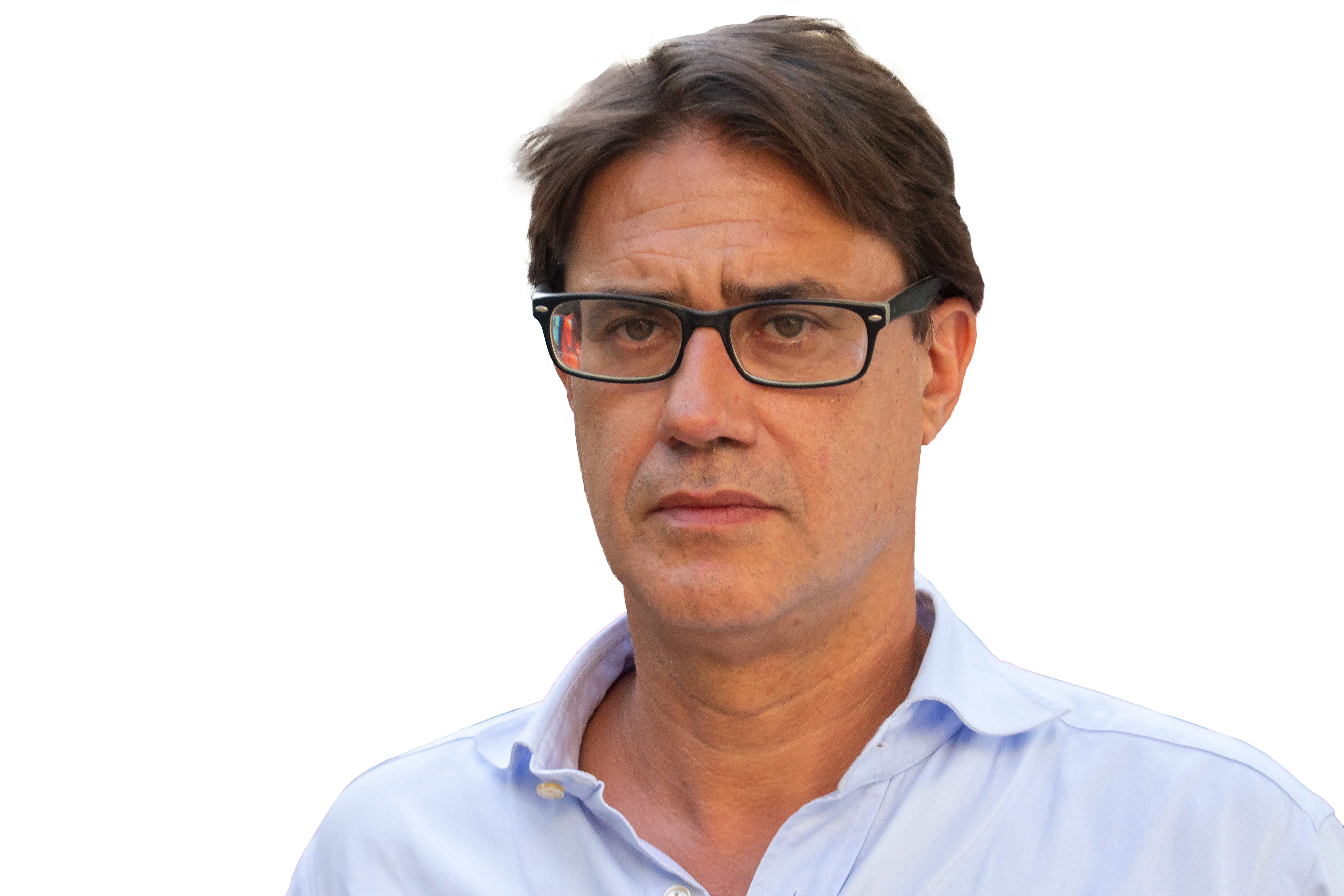
Valdivieso

Félix
Valdivieso

Power
The Past is Catchy. Be on the Watch!
Félix Valdivieso
Read
Water: A Journey to the Border Between Utopia and Dystopia
Gonzalo
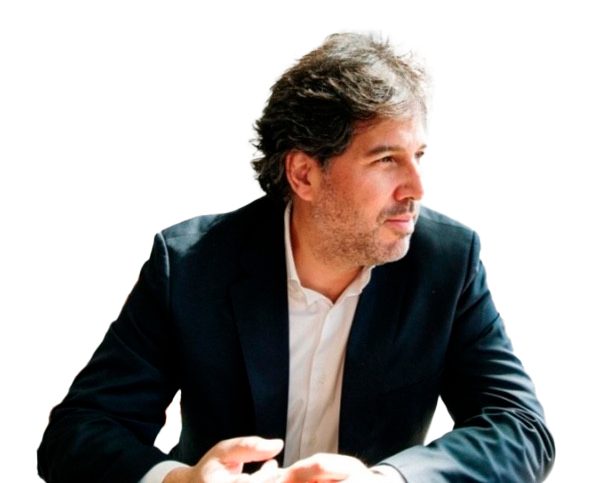
Delacámara

Gonzalo
Delacámara

Society
Water: A Journey to the Border Between Utopia and Dystopia
Gonzalo Delacámara
Read
Breakthroughs in Science and Technology: Sci-Fi Made Real
Ikhlaq
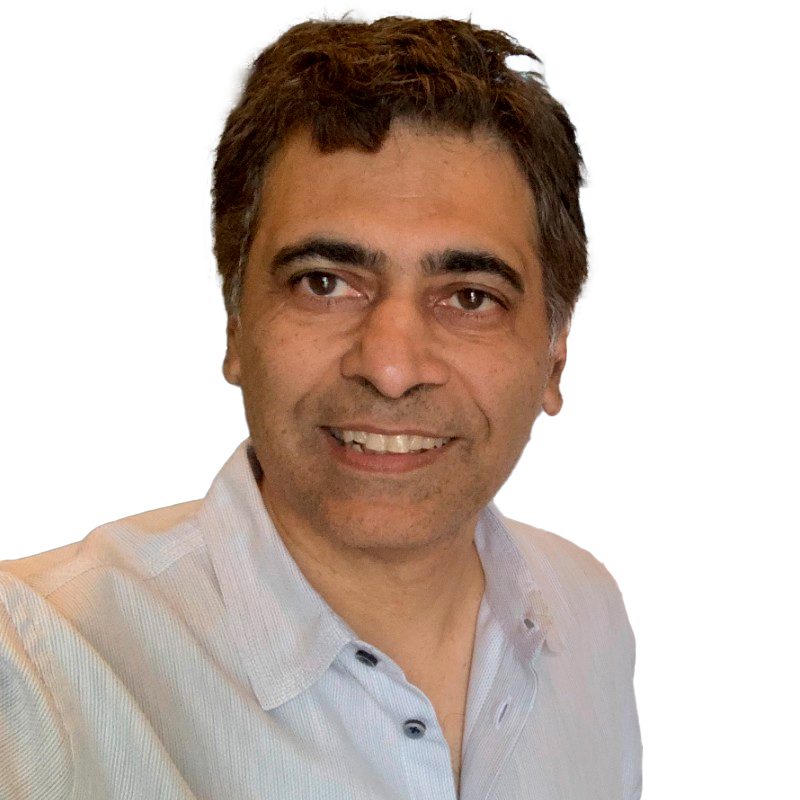
Sidhu

Ikhlaq
Sidhu

Society
Breakthroughs in Science and Technology: Sci-Fi Made Real
Ikhlaq Sidhu
Read
Shaping the Future of AI Governance
Irene

Blázquez Navarro

Irene
Blázquez Navarro

Power
Shaping the Future of AI Governance
Irene Blázquez Navarro
Read
The Future Union of Nature and Quantum
Isabela

Del Alcázar

Isabela
Del Alcázar

Society
The Future Union of Nature and Quantum
Isabela Del Alcázar
Read
Music in the Age of Technology
Jack Adams

/ Mumdance

Jack Adams
/ Mumdance

Creativity
Music in the Age of Technology
Jack Adams / Mumdance
Read
The Future of Sales Is Not Just Automation
Javier

Luz

Javier
Luz

Society
The Future of Sales Is Not Just Automation
Javier Luz
Read
The Climate Crisis & Business Education
John

Byrne

John
Byrne

Education
The Climate Crisis & Business Education
John Byrne
Read
What Is the Future of Cybersecurity?
José

Esteves

José
Esteves

Power
What Is the Future of Cybersecurity?
José Esteves
Read
The Future of Language
Lane

Greene

Lane
Greene

Society
The Future of Language
Lane Greene
Read
A New Era for African Women in STEM
Larisa

Akrofie

Larisa
Akrofie

Education
A New Era for African Women in STEM
Larisa Akrofie
Read
The Future of Work
Lee

Newman

Lee
Newman

Power
The Future of Work
Lee Newman
Read
What’s Ahead for Entrepreneurship and Innovation
Lolita

Taub

Lolita
Taub

Creativity
What’s Ahead for Entrepreneurship and Innovation
Lolita Taub
Read
The Future of Trend Forecasting
Lydia

Caldana

Lydia
Caldana

Education
The Future of Trend Forecasting
Lydia Caldana
Read
What Is the Future of Democracy?
Manuel

Muñiz

Manuel
Muñiz

Power
What Is the Future of Democracy?
Manuel Muñiz
Read
The Future of Health, Well-being and Human Potential
Mario

Alonso Puig

Mario
Alonso Puig

Society
The Future of Health, Well-being and Human Potential
Mario Alonso Puig
Read
The Future of Advertising
Marisa

Manzano

Marisa
Manzano

Creativity
The Future of Advertising
Marisa Manzano
Read
What Are the Future Game Changers in Architecture?
Martha

Thorne

Martha
Thorne

Creativity
What Are the Future Game Changers in Architecture?
Martha Thorne
Read
Redefining the Investor
Mikko
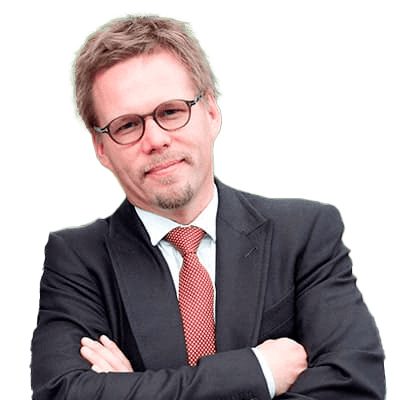
Ketokivi

Mikko
Ketokivi

Power
Redefining the Investor
Mikko Ketokivi
Read
Where Is Africa Headed?
Natalie

Beinisch

Natalie
Beinisch

Education
Where Is Africa Headed?
Natalie Beinisch
Read
A Liberated Future in Africa
Nolita

Mvunelo

Nolita
Mvunelo

Power
A Liberated Future in Africa
Nolita Mvunelo
Read
Our Multipolar Future
Pallavi

Aiyar

Pallavi
Aiyar

Power
Our Multipolar Future
Pallavi Aiyar
Read
The Future of Mentoring is the Future of Management
Patrice

Gordon

Patrice
Gordon

Education
The Future of Mentoring is the Future of Management
Patrice Gordon
Read
Towards a More Humane Leadership
Paul

Lewis

Paul
Lewis

Education
Towards a More Humane Leadership
Paul Lewis
Read
What Comes Next for Education
Rafif

Srour

Rafif
Srour

Education
What Comes Next for Education
Rafif Srour
Read
The Next Big Challenge: Redesigning Our Brain to Boost Its Capacities
Santiago

Iñiguez

Santiago
Iñiguez

Education
The Next Big Challenge: Redesigning Our Brain to Boost Its Capacities
Santiago Iñiguez
Read
The Future of Banking
Shaikha K.

Al-Bahar

Shaikha K.
Al-Bahar

Power
The Future of Banking
Shaikha K. Al-Bahar
Read
Where is China Headed in 50 Years?
Shirley

Yu

Shirley
Yu

Power
Where is China Headed in 50 Years?
Shirley Yu
Read
The Future of Cities
Simon

Kuper

Simon
Kuper

Society
The Future of Cities
Simon Kuper
Read
The Future of Business and Society
Sir Alan
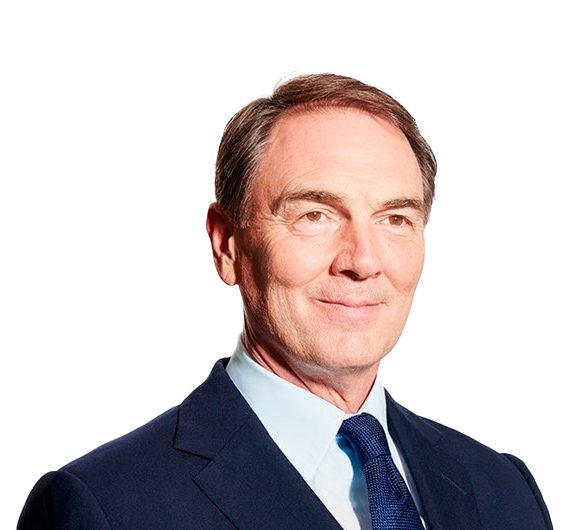
Parker

Sir Alan
Parker

Society
The Future of Business and Society
Sir Alan Parker
Read
Future of Law: Evolving Education Trends
Soledad

Atienza

Soledad
Atienza

Education
Future of Law: Evolving Education Trends
Soledad Atienza
Read
Turning on the Lights
Stuart

Crainer

Stuart
Crainer

Power
Turning on the Lights
Stuart Crainer
Read
Employee Empowerment and Performance Management in an Accelerated World
Suzanne Marie

OBrien

Suzanne Marie
OBrien

Power
Employee Empowerment and Performance Management in an Accelerated World
Suzanne Marie OBrien
Read
The Role of Dialogue in Tomorrow’s Society
Usha Baroness

Prashar

Usha Baroness
Prashar

Society
The Role of Dialogue in Tomorrow’s Society
Usha Baroness Prashar
Read
The Future of Creating, Collecting, and Curating Visual Arts
Viet Ha

Tran

Viet Ha
Tran

Creativity
The Future of Creating, Collecting, and Curating Visual Arts
Viet Ha Tran
Read

Education
Education in 2050
Andrew Jack
Read

Education
The Future of Biotech and More
Angelica Kohlmann
Read

Creativity
AI and the Future of Human Innovation
Atif Rafiq
Read

Creativity
Marketing and the Future of Decision Making
Carlos Saldaña
Read

Creativity
The Future of Art and Imagination
Caroline Michel
Read

Creativity
The Art and Reason of Communication
Catherine Hollyer
Read

Society
Banking on Sustainability
Christian Sewing
Read

Creativity
Creative Industries Will Transform Cities
Cristina Mateo
Read

Creativity
Creating Our Future
David Goodman
Read

Society
Our Wild Future
Deborah McCauley
Read

Education
Artificial Intelligence as an Essential Part of the Future of Higher Education
Diego del Alcázar Silvela
Read

Society
Brave New World
Diego del Alcázar Benjumea
Read

Society
The Key Technological Drivers of Decarbonization
Enrique Dans
Read

Power
The Future of the Internet
Esther Paniagua
Read

Creativity
Coming Soon: Our Phygital Lives
Fatemeh Monfared
Read

Power
The Past is Catchy. Be on the Watch!
Félix Valdivieso
Read

Society
Water: A Journey to the Border Between Utopia and Dystopia
Gonzalo Delacámara
Read

Society
Breakthroughs in Science and Technology: Sci-Fi Made Real
Ikhlaq Sidhu
Read

Power
Shaping the Future of AI Governance
Irene Blázquez Navarro
Read

Society
The Future Union of Nature and Quantum
Isabela Del Alcázar
Read

Creativity
Music in the Age of Technology
Jack Adams / Mumdance
Read

Society
The Future of Sales Is Not Just Automation
Javier Luz
Read

Education
The Climate Crisis & Business Education
John Byrne
Read

Power
What Is the Future of Cybersecurity?
José Esteves
Read

Society
The Future of Language
Lane Greene
Read

Education
A New Era for African Women in STEM
Larisa Akrofie
Read

Power
The Future of Work
Lee Newman
Read

Creativity
What’s Ahead for Entrepreneurship and Innovation
Lolita Taub
Read

Education
The Future of Trend Forecasting
Lydia Caldana
Read

Power
What Is the Future of Democracy?
Manuel Muñiz
Read

Society
The Future of Health, Well-being and Human Potential
Mario Alonso Puig
Read

Creativity
The Future of Advertising
Marisa Manzano
Read

Creativity
What Are the Future Game Changers in Architecture?
Martha Thorne
Read

Power
Redefining the Investor
Mikko Ketokivi
Read

Education
Where Is Africa Headed?
Natalie Beinisch
Read

Power
A Liberated Future in Africa
Nolita Mvunelo
Read

Power
Our Multipolar Future
Pallavi Aiyar
Read

Education
The Future of Mentoring is the Future of Management
Patrice Gordon
Read

Education
Towards a More Humane Leadership
Paul Lewis
Read

Education
What Comes Next for Education
Rafif Srour
Read

Education
The Next Big Challenge: Redesigning Our Brain to Boost Its Capacities
Santiago Iñiguez
Read

Power
The Future of Banking
Shaikha K. Al-Bahar
Read

Power
Where is China Headed in 50 Years?
Shirley Yu
Read

Society
The Future of Cities
Simon Kuper
Read

Society
The Future of Business and Society
Sir Alan Parker
Read

Education
Future of Law: Evolving Education Trends
Soledad Atienza
Read

Power
Turning on the Lights
Stuart Crainer
Read

Power
Employee Empowerment and Performance Management in an Accelerated World
Suzanne Marie OBrien
Read

Society
The Role of Dialogue in Tomorrow’s Society
Usha Baroness Prashar
Read

Creativity
The Future of Creating, Collecting, and Curating Visual Arts
Viet Ha Tran
Read
IDEAS TO SHAPE THE FUTURE

Education
Education in 2050
Andrew Jack
Read

Education
The Future of Biotech and More
Angelica Kohlmann
Read

Creativity
AI and the Future of Human Innovation
Atif Rafiq
Read

Creativity
Marketing and the Future of Decision Making
Carlos Saldaña
Read

Creativity
The Future of Art and Imagination
Caroline Michel
Read

Creativity
The Art and Reason of Communication
Catherine Hollyer
Read

Society
Banking on Sustainability
Christian Sewing
Read

Creativity
Creative Industries Will Transform Cities
Cristina Mateo
Read

Creativity
Creating Our Future
David Goodman
Read

Society
Our Wild Future
Deborah McCauley
Read

Education
Artificial Intelligence as an Essential Part of the Future of Higher Education
Diego del Alcázar Silvela
Read

Society
Brave New World
Diego del Alcázar Benjumea
Read

Society
The Key Technological Drivers of Decarbonization
Enrique Dans
Read

Power
The Future of the Internet
Esther Paniagua
Read

Creativity
Coming Soon: Our Phygital Lives
Fatemeh Monfared
Read

Power
The Past is Catchy. Be on the Watch!
Félix Valdivieso
Read

Society
Water: A Journey to the Border Between Utopia and Dystopia
Gonzalo Delacámara
Read

Society
Breakthroughs in Science and Technology: Sci-Fi Made Real
Ikhlaq Sidhu
Read

Power
Shaping the Future of AI Governance
Irene Blázquez Navarro
Read

Society
The Future Union of Nature and Quantum
Isabela Del Alcázar
Read

Creativity
Music in the Age of Technology
Jack Adams / Mumdance
Read

Society
The Future of Sales Is Not Just Automation
Javier Luz
Read

Education
The Climate Crisis & Business Education
John Byrne
Read

Power
What Is the Future of Cybersecurity?
José Esteves
Read

Society
The Future of Language
Lane Greene
Read

Education
A New Era for African Women in STEM
Larisa Akrofie
Read

Power
The Future of Work
Lee Newman
Read

Creativity
What’s Ahead for Entrepreneurship and Innovation
Lolita Taub
Read

Education
The Future of Trend Forecasting
Lydia Caldana
Read

Power
What Is the Future of Democracy?
Manuel Muñiz
Read

Society
The Future of Health, Well-being and Human Potential
Mario Alonso Puig
Read

Creativity
The Future of Advertising
Marisa Manzano
Read

Creativity
What Are the Future Game Changers in Architecture?
Martha Thorne
Read

Power
Redefining the Investor
Mikko Ketokivi
Read

Education
Where Is Africa Headed?
Natalie Beinisch
Read

Power
A Liberated Future in Africa
Nolita Mvunelo
Read

Power
Our Multipolar Future
Pallavi Aiyar
Read

Education
The Future of Mentoring is the Future of Management
Patrice Gordon
Read

Education
Towards a More Humane Leadership
Paul Lewis
Read

Education
What Comes Next for Education
Rafif Srour
Read

Education
The Next Big Challenge: Redesigning Our Brain to Boost Its Capacities
Santiago Iñiguez
Read

Power
The Future of Banking
Shaikha K. Al-Bahar
Read

Power
Where is China Headed in 50 Years?
Shirley Yu
Read

Society
The Future of Cities
Simon Kuper
Read

Society
The Future of Business and Society
Sir Alan Parker
Read

Education
Future of Law: Evolving Education Trends
Soledad Atienza
Read

Power
Turning on the Lights
Stuart Crainer
Read

Power
Employee Empowerment and Performance Management in an Accelerated World
Suzanne Marie OBrien
Read

Society
The Role of Dialogue in Tomorrow’s Society
Usha Baroness Prashar
Read

Creativity
The Future of Creating, Collecting, and Curating Visual Arts
Viet Ha Tran
Read


